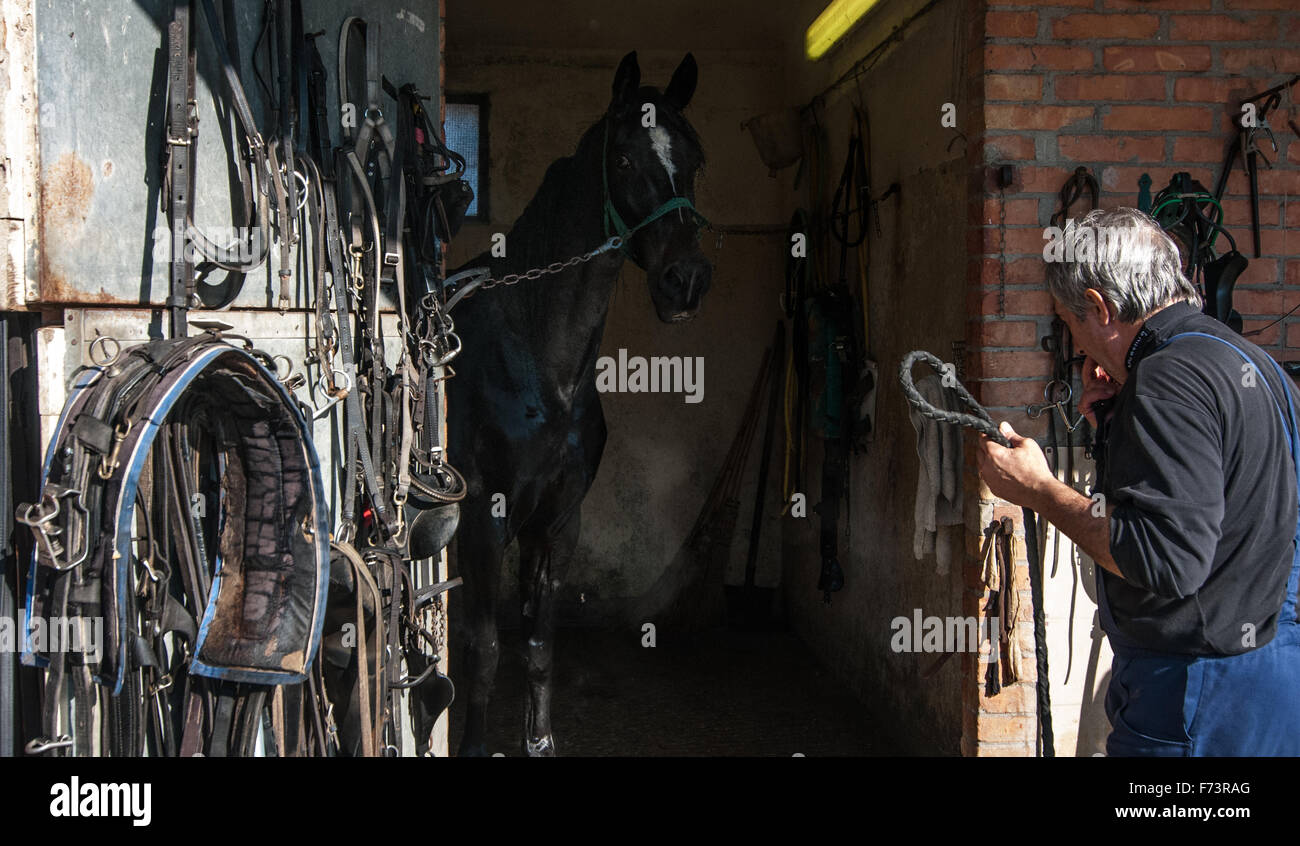Quick filters:
Tomb of babur Stock Photos and Images
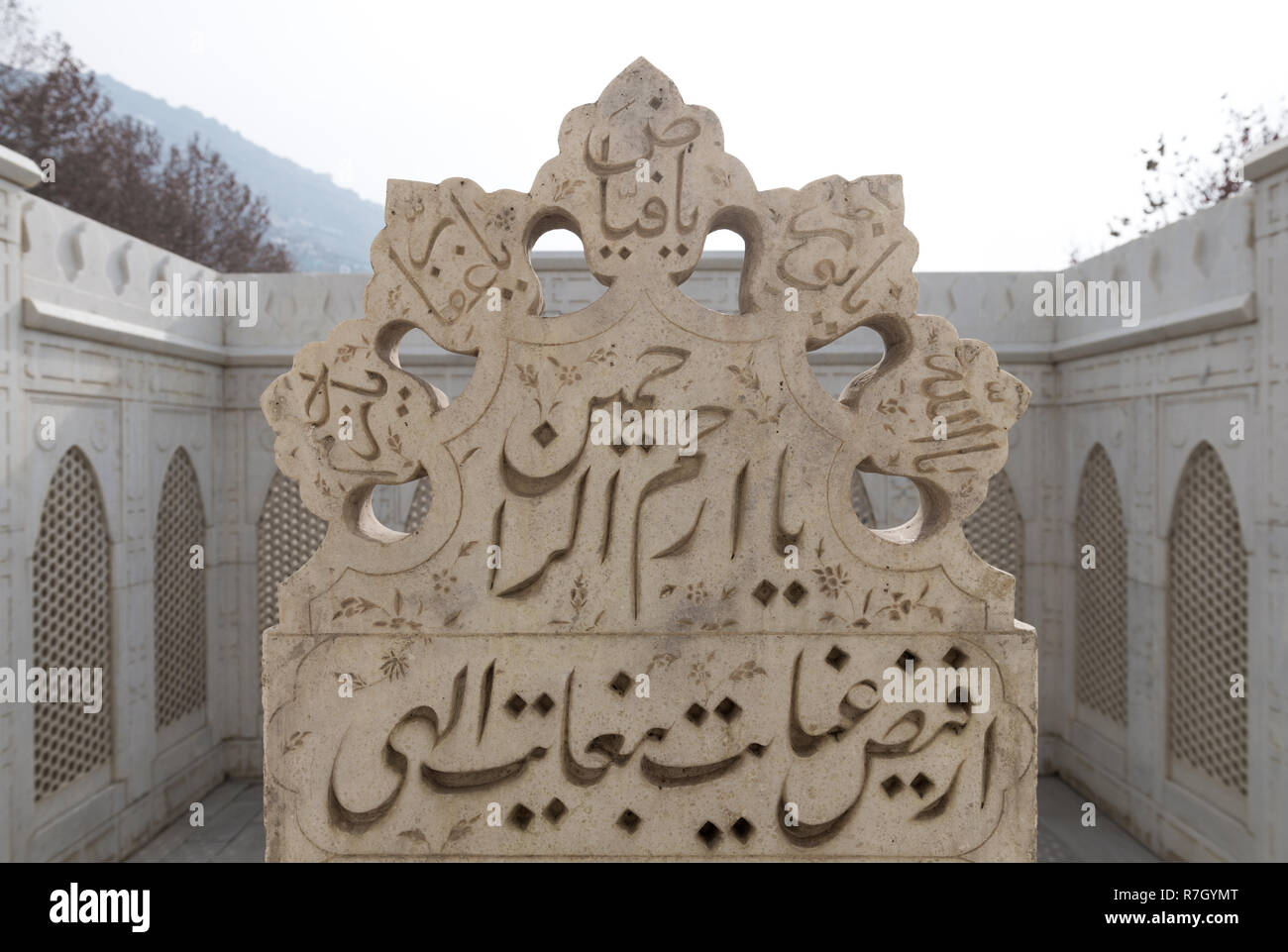 Tomb Of Babur, Gardens of Babur, Kabul, Kabul Province, Afghanistan Stock Photohttps://www.alamy.com/image-license-details/?v=1https://www.alamy.com/tomb-of-babur-gardens-of-babur-kabul-kabul-province-afghanistan-image228410360.html
Tomb Of Babur, Gardens of Babur, Kabul, Kabul Province, Afghanistan Stock Photohttps://www.alamy.com/image-license-details/?v=1https://www.alamy.com/tomb-of-babur-gardens-of-babur-kabul-kabul-province-afghanistan-image228410360.htmlRMR7GYMT–Tomb Of Babur, Gardens of Babur, Kabul, Kabul Province, Afghanistan
 Isa Khan tomb Stock Photohttps://www.alamy.com/image-license-details/?v=1https://www.alamy.com/stock-photo-isa-khan-tomb-106230339.html
Isa Khan tomb Stock Photohttps://www.alamy.com/image-license-details/?v=1https://www.alamy.com/stock-photo-isa-khan-tomb-106230339.htmlRFG4R5TK–Isa Khan tomb
 The Tomb of the Mughul Emperor Babur, founder of the Mughal dynasty of northern India, is located in Babur Garden (Bagh-e Babur) Kabul, Afghanistan. Stock Photohttps://www.alamy.com/image-license-details/?v=1https://www.alamy.com/the-tomb-of-the-mughul-emperor-babur-founder-of-the-mughal-dynasty-of-northern-india-is-located-in-babur-garden-bagh-e-babur-kabul-afghanistan-image613981514.html
The Tomb of the Mughul Emperor Babur, founder of the Mughal dynasty of northern India, is located in Babur Garden (Bagh-e Babur) Kabul, Afghanistan. Stock Photohttps://www.alamy.com/image-license-details/?v=1https://www.alamy.com/the-tomb-of-the-mughul-emperor-babur-founder-of-the-mughal-dynasty-of-northern-india-is-located-in-babur-garden-bagh-e-babur-kabul-afghanistan-image613981514.htmlRF2XJW7K6–The Tomb of the Mughul Emperor Babur, founder of the Mughal dynasty of northern India, is located in Babur Garden (Bagh-e Babur) Kabul, Afghanistan.
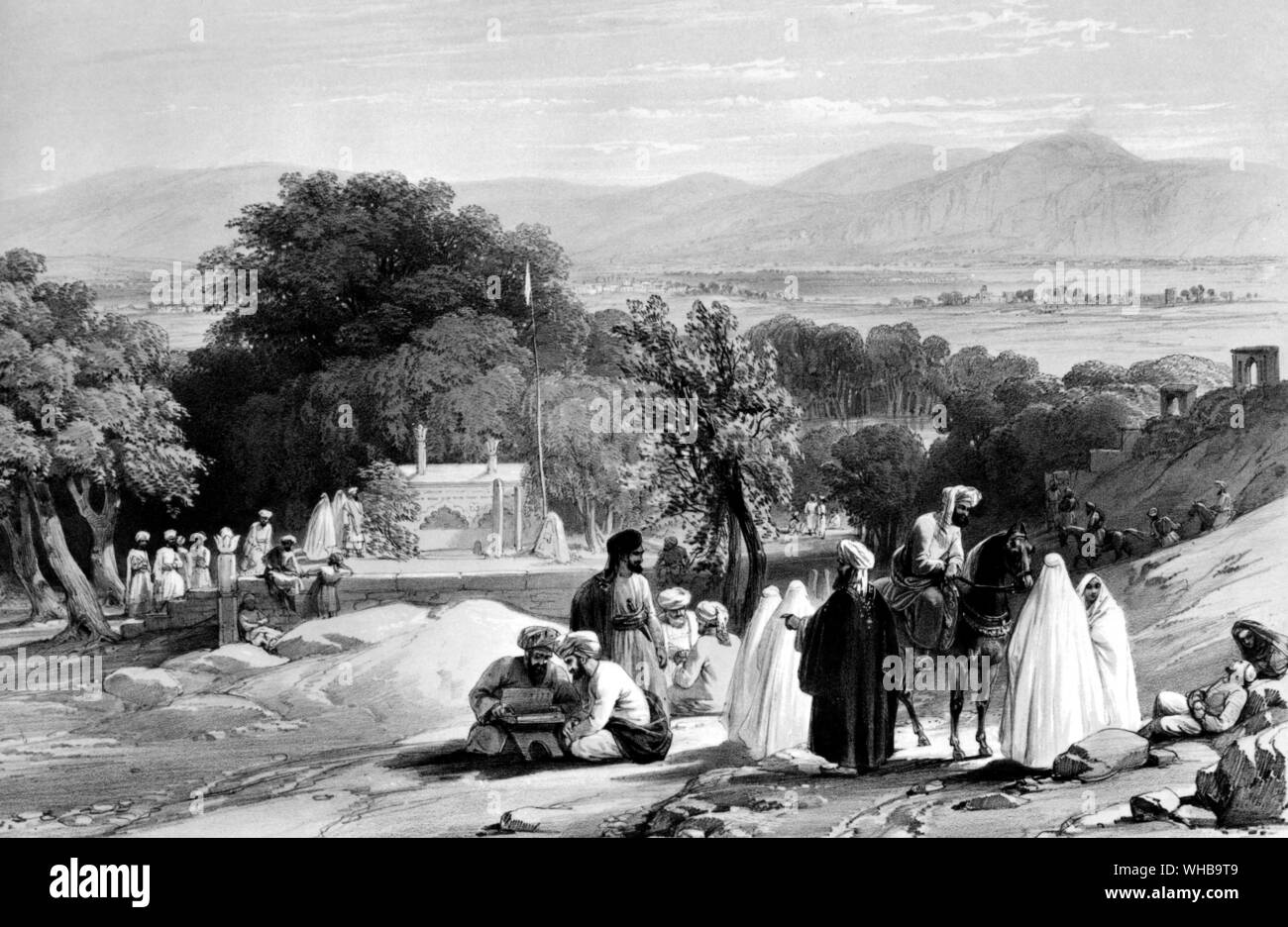 Babur's tomb , left open to the sky as he desired . Kabul , Afganistan Stock Photohttps://www.alamy.com/image-license-details/?v=1https://www.alamy.com/baburs-tomb-left-open-to-the-sky-as-he-desired-kabul-afganistan-image268853881.html
Babur's tomb , left open to the sky as he desired . Kabul , Afganistan Stock Photohttps://www.alamy.com/image-license-details/?v=1https://www.alamy.com/baburs-tomb-left-open-to-the-sky-as-he-desired-kabul-afganistan-image268853881.htmlRMWHB9T9–Babur's tomb , left open to the sky as he desired . Kabul , Afganistan
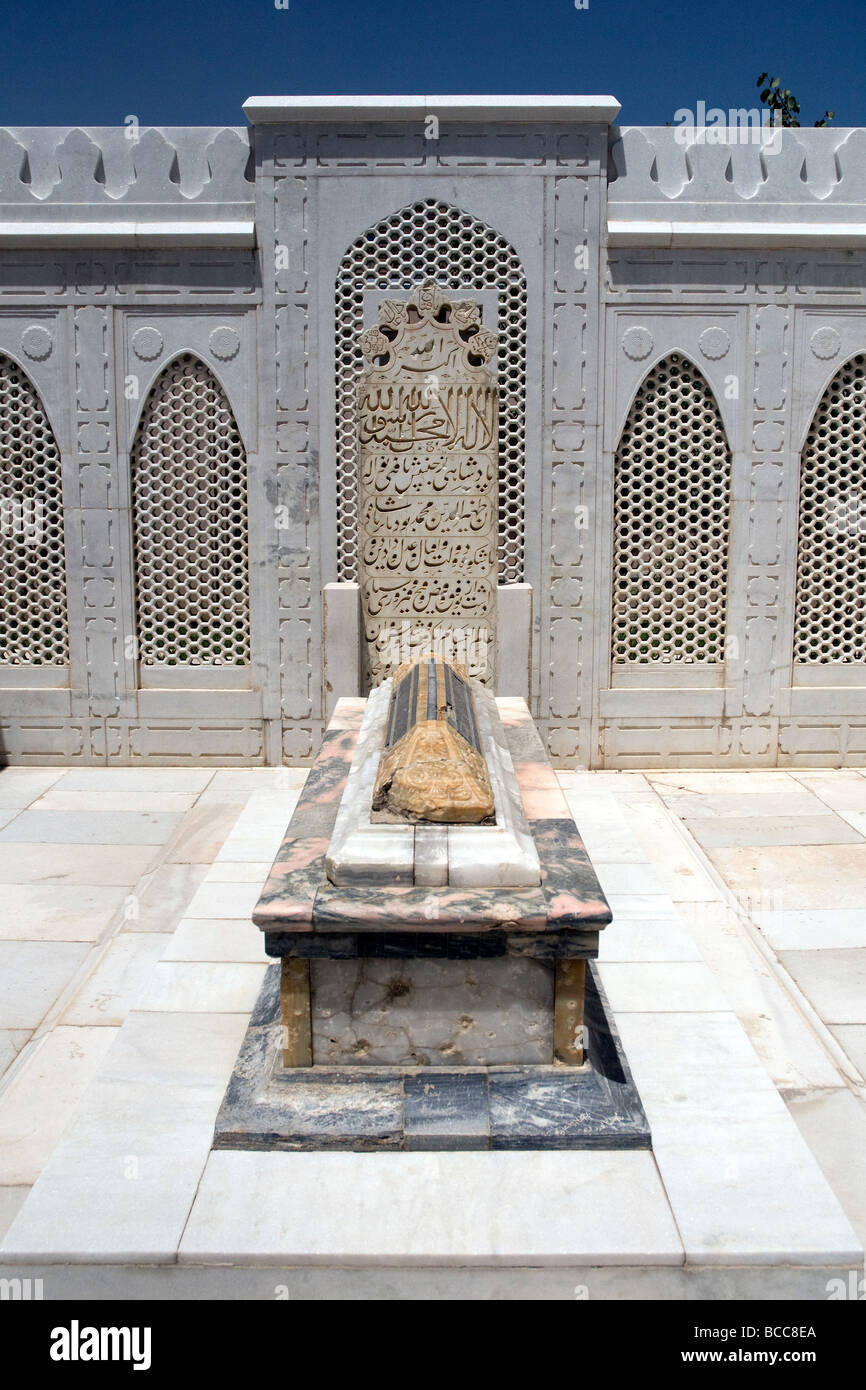 The marble tomb, restored, of Babur, 16th-century Moghul ruler, within the gardens he founded in Kabul, Afghanistan Stock Photohttps://www.alamy.com/image-license-details/?v=1https://www.alamy.com/stock-photo-the-marble-tomb-restored-of-babur-16th-century-moghul-ruler-within-24856338.html
The marble tomb, restored, of Babur, 16th-century Moghul ruler, within the gardens he founded in Kabul, Afghanistan Stock Photohttps://www.alamy.com/image-license-details/?v=1https://www.alamy.com/stock-photo-the-marble-tomb-restored-of-babur-16th-century-moghul-ruler-within-24856338.htmlRMBCC8EA–The marble tomb, restored, of Babur, 16th-century Moghul ruler, within the gardens he founded in Kabul, Afghanistan
 Lotus star decoration of Humayun's tomb, New Delhi Stock Photohttps://www.alamy.com/image-license-details/?v=1https://www.alamy.com/stock-photo-lotus-star-decoration-of-humayuns-tomb-new-delhi-83396249.html
Lotus star decoration of Humayun's tomb, New Delhi Stock Photohttps://www.alamy.com/image-license-details/?v=1https://www.alamy.com/stock-photo-lotus-star-decoration-of-humayuns-tomb-new-delhi-83396249.htmlRFERK0ND–Lotus star decoration of Humayun's tomb, New Delhi
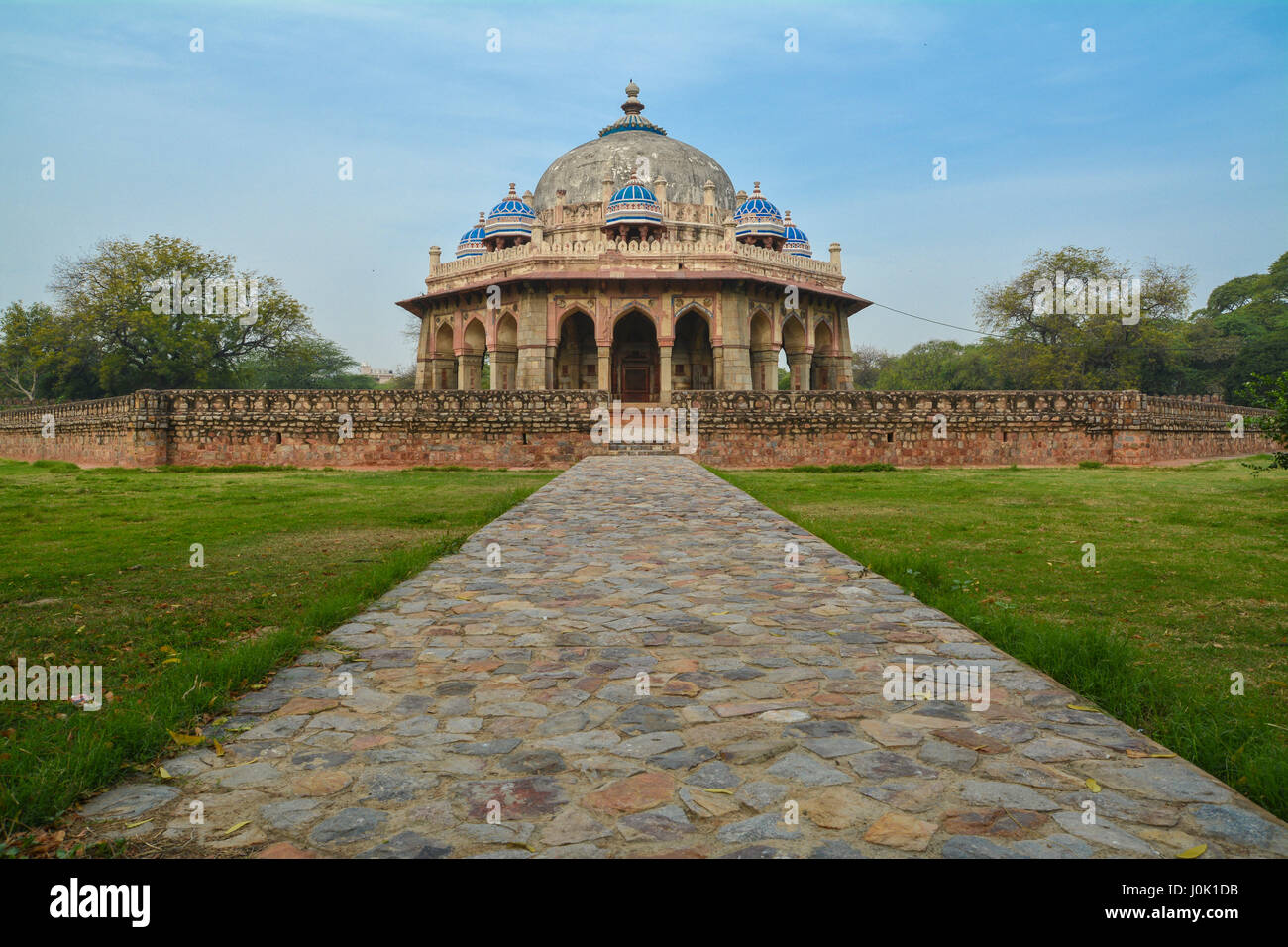 Isa Khan Niyazi's tomb Stock Photohttps://www.alamy.com/image-license-details/?v=1https://www.alamy.com/stock-photo-isa-khan-niyazis-tomb-138101191.html
Isa Khan Niyazi's tomb Stock Photohttps://www.alamy.com/image-license-details/?v=1https://www.alamy.com/stock-photo-isa-khan-niyazis-tomb-138101191.htmlRFJ0K1DB–Isa Khan Niyazi's tomb
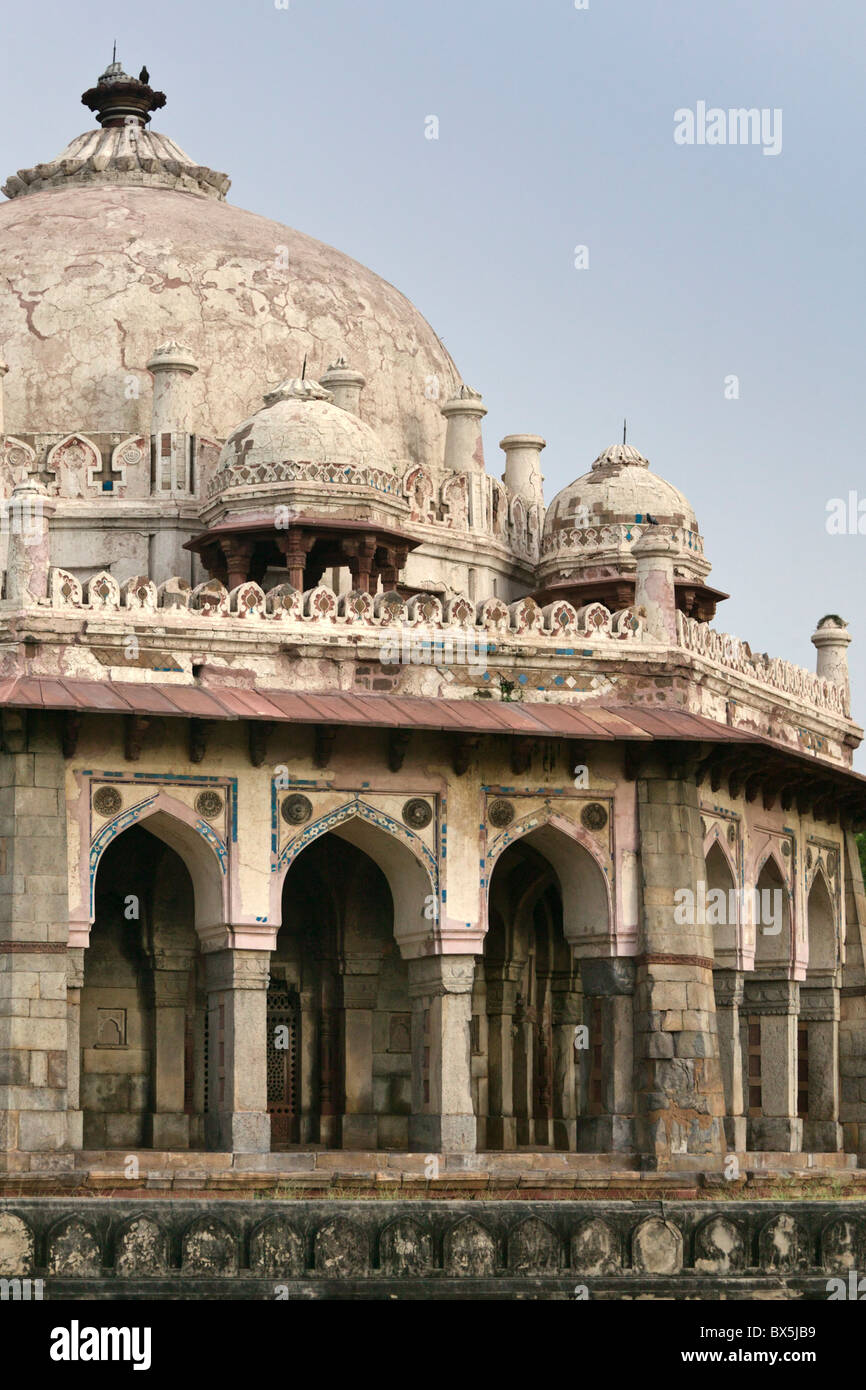 Mughal architecture including domes, alcoves, pillars at Humayun's Tomb, Delhi, India Stock Photohttps://www.alamy.com/image-license-details/?v=1https://www.alamy.com/stock-photo-mughal-architecture-including-domes-alcoves-pillars-at-humayuns-tomb-33315613.html
Mughal architecture including domes, alcoves, pillars at Humayun's Tomb, Delhi, India Stock Photohttps://www.alamy.com/image-license-details/?v=1https://www.alamy.com/stock-photo-mughal-architecture-including-domes-alcoves-pillars-at-humayuns-tomb-33315613.htmlRMBX5JB9–Mughal architecture including domes, alcoves, pillars at Humayun's Tomb, Delhi, India
 Formal garden (Charbagh or Mughal Garden) in front of Taj Mahal in Agra in morning mist Stock Photohttps://www.alamy.com/image-license-details/?v=1https://www.alamy.com/formal-garden-charbagh-or-mughal-garden-in-front-of-taj-mahal-in-agra-image65902510.html
Formal garden (Charbagh or Mughal Garden) in front of Taj Mahal in Agra in morning mist Stock Photohttps://www.alamy.com/image-license-details/?v=1https://www.alamy.com/formal-garden-charbagh-or-mughal-garden-in-front-of-taj-mahal-in-agra-image65902510.htmlRFDR6392–Formal garden (Charbagh or Mughal Garden) in front of Taj Mahal in Agra in morning mist
 First Anglo-Afghan War. The avenue at Babur’s Tomb. 1840-1850. Sketches by Jas. Atkinson, esq. This grove of magnificent cheenars leads to the burial-place of the Emperor Babur, the space between, being some hundred yards, is divided into numerous terraces about twenty feet wide for the purpose of forming a line of diminutive artificial cascades. The water is sup¬plied from the mountains, and which, after numerous falls from one terrace to another is received into a square reservoir. There is a wide path on each side of these terraces, and on every Friday - the Mahommedan Sabbath - the walks o Stock Photohttps://www.alamy.com/image-license-details/?v=1https://www.alamy.com/first-anglo-afghan-war-the-avenue-at-baburs-tomb-1840-1850-sketches-by-jas-atkinson-esq-this-grove-of-magnificent-cheenars-leads-to-the-burial-place-of-the-emperor-babur-the-space-between-being-some-hundred-yards-is-divided-into-numerous-terraces-about-twenty-feet-wide-for-the-purpose-of-forming-a-line-of-diminutive-artificial-cascades-the-water-is-supplied-from-the-mountains-and-which-after-numerous-falls-from-one-terrace-to-another-is-received-into-a-square-reservoir-there-is-a-wide-path-on-each-side-of-these-terraces-and-on-every-friday-the-mahommedan-sabbath-the-walks-o-image618362198.html
First Anglo-Afghan War. The avenue at Babur’s Tomb. 1840-1850. Sketches by Jas. Atkinson, esq. This grove of magnificent cheenars leads to the burial-place of the Emperor Babur, the space between, being some hundred yards, is divided into numerous terraces about twenty feet wide for the purpose of forming a line of diminutive artificial cascades. The water is sup¬plied from the mountains, and which, after numerous falls from one terrace to another is received into a square reservoir. There is a wide path on each side of these terraces, and on every Friday - the Mahommedan Sabbath - the walks o Stock Photohttps://www.alamy.com/image-license-details/?v=1https://www.alamy.com/first-anglo-afghan-war-the-avenue-at-baburs-tomb-1840-1850-sketches-by-jas-atkinson-esq-this-grove-of-magnificent-cheenars-leads-to-the-burial-place-of-the-emperor-babur-the-space-between-being-some-hundred-yards-is-divided-into-numerous-terraces-about-twenty-feet-wide-for-the-purpose-of-forming-a-line-of-diminutive-artificial-cascades-the-water-is-supplied-from-the-mountains-and-which-after-numerous-falls-from-one-terrace-to-another-is-received-into-a-square-reservoir-there-is-a-wide-path-on-each-side-of-these-terraces-and-on-every-friday-the-mahommedan-sabbath-the-walks-o-image618362198.htmlRM2XX0R86–First Anglo-Afghan War. The avenue at Babur’s Tomb. 1840-1850. Sketches by Jas. Atkinson, esq. This grove of magnificent cheenars leads to the burial-place of the Emperor Babur, the space between, being some hundred yards, is divided into numerous terraces about twenty feet wide for the purpose of forming a line of diminutive artificial cascades. The water is sup¬plied from the mountains, and which, after numerous falls from one terrace to another is received into a square reservoir. There is a wide path on each side of these terraces, and on every Friday - the Mahommedan Sabbath - the walks o
 Aerial view over formal garden (Charbagh or Mughal Garden) in front of Taj Mahal in Agra in morning mist Stock Photohttps://www.alamy.com/image-license-details/?v=1https://www.alamy.com/aerial-view-over-formal-garden-charbagh-or-mughal-garden-in-front-image65903436.html
Aerial view over formal garden (Charbagh or Mughal Garden) in front of Taj Mahal in Agra in morning mist Stock Photohttps://www.alamy.com/image-license-details/?v=1https://www.alamy.com/aerial-view-over-formal-garden-charbagh-or-mughal-garden-in-front-image65903436.htmlRFDR64E4–Aerial view over formal garden (Charbagh or Mughal Garden) in front of Taj Mahal in Agra in morning mist
 A man walks by the marble tomb of Babur in the Babur Gardens Kabul Stock Photohttps://www.alamy.com/image-license-details/?v=1https://www.alamy.com/stock-photo-a-man-walks-by-the-marble-tomb-of-babur-in-the-babur-gardens-kabul-31487948.html
A man walks by the marble tomb of Babur in the Babur Gardens Kabul Stock Photohttps://www.alamy.com/image-license-details/?v=1https://www.alamy.com/stock-photo-a-man-walks-by-the-marble-tomb-of-babur-in-the-babur-gardens-kabul-31487948.htmlRFBR6B5G–A man walks by the marble tomb of Babur in the Babur Gardens Kabul
 The tomb of Babur (1483-1530), founder of the Mughal dynasty lies in this garden. Stock Photohttps://www.alamy.com/image-license-details/?v=1https://www.alamy.com/stock-photo-the-tomb-of-babur-1483-1530-founder-of-the-mughal-dynasty-lies-in-15292381.html
The tomb of Babur (1483-1530), founder of the Mughal dynasty lies in this garden. Stock Photohttps://www.alamy.com/image-license-details/?v=1https://www.alamy.com/stock-photo-the-tomb-of-babur-1483-1530-founder-of-the-mughal-dynasty-lies-in-15292381.htmlRMAMM3KX–The tomb of Babur (1483-1530), founder of the Mughal dynasty lies in this garden.
 DELHI, INDIA - SEPTEMBER 19, 2017: Humayun s Tomb, Delhi, India. UNESCO World Heritage Site, it is the tomb of the Mughal Emperor Humayun, fish eye effect Stock Photohttps://www.alamy.com/image-license-details/?v=1https://www.alamy.com/stock-image-delhi-india-september-19-2017-humayun-s-tomb-delhi-india-unesco-world-164640495.html
DELHI, INDIA - SEPTEMBER 19, 2017: Humayun s Tomb, Delhi, India. UNESCO World Heritage Site, it is the tomb of the Mughal Emperor Humayun, fish eye effect Stock Photohttps://www.alamy.com/image-license-details/?v=1https://www.alamy.com/stock-image-delhi-india-september-19-2017-humayun-s-tomb-delhi-india-unesco-world-164640495.htmlRFKFT0HK–DELHI, INDIA - SEPTEMBER 19, 2017: Humayun s Tomb, Delhi, India. UNESCO World Heritage Site, it is the tomb of the Mughal Emperor Humayun, fish eye effect
 India, Delhi, Humayun's Tomb, built by Hamida Banu Begun in 1565-72 A.D. the earliest example of Persian influence in Indian architecture Stock Photohttps://www.alamy.com/image-license-details/?v=1https://www.alamy.com/india-delhi-humayuns-tomb-built-by-hamida-banu-begun-in-1565-72-ad-the-earliest-example-of-persian-influence-in-indian-architecture-image456785656.html
India, Delhi, Humayun's Tomb, built by Hamida Banu Begun in 1565-72 A.D. the earliest example of Persian influence in Indian architecture Stock Photohttps://www.alamy.com/image-license-details/?v=1https://www.alamy.com/india-delhi-humayuns-tomb-built-by-hamida-banu-begun-in-1565-72-ad-the-earliest-example-of-persian-influence-in-indian-architecture-image456785656.htmlRF2HF4ANC–India, Delhi, Humayun's Tomb, built by Hamida Banu Begun in 1565-72 A.D. the earliest example of Persian influence in Indian architecture
 Jamali Kamali Mosque and Tomb, located in the Archaeological Village complex in Mehrauli, Delhi, India. Stock Photohttps://www.alamy.com/image-license-details/?v=1https://www.alamy.com/jamali-kamali-mosque-and-tomb-located-in-the-archaeological-village-complex-in-mehrauli-delhi-india-image331429973.html
Jamali Kamali Mosque and Tomb, located in the Archaeological Village complex in Mehrauli, Delhi, India. Stock Photohttps://www.alamy.com/image-license-details/?v=1https://www.alamy.com/jamali-kamali-mosque-and-tomb-located-in-the-archaeological-village-complex-in-mehrauli-delhi-india-image331429973.htmlRF2A75X8N–Jamali Kamali Mosque and Tomb, located in the Archaeological Village complex in Mehrauli, Delhi, India.
![Tomb Of Baber or Babur [Babur (Bābur, lit. 'tiger'; 14 February 1483 – 26 December 1530), born Zahīr ud-Dīn Muhammad, was the founder of the Mughal Empire and first Emperor of the Mughal dynasty (r. 1526–1530) in the Indian subcontinent]. From the book ' The Oriental annual, or, Scenes in India ' by the Rev. Hobart Caunter Published by Edward Bull, London 1838 engravings from drawings by William Daniell Stock Photo Tomb Of Baber or Babur [Babur (Bābur, lit. 'tiger'; 14 February 1483 – 26 December 1530), born Zahīr ud-Dīn Muhammad, was the founder of the Mughal Empire and first Emperor of the Mughal dynasty (r. 1526–1530) in the Indian subcontinent]. From the book ' The Oriental annual, or, Scenes in India ' by the Rev. Hobart Caunter Published by Edward Bull, London 1838 engravings from drawings by William Daniell Stock Photo](https://c8.alamy.com/comp/2H5AMR5/tomb-of-baber-or-babur-babur-bbur-littiger-14-february-1483-26-december-1530-born-zahr-ud-dn-muhammad-was-the-founder-of-the-mughal-empire-and-first-emperor-of-the-mughal-dynasty-r-15261530-in-the-indian-subcontinent-from-the-book-the-oriental-annual-or-scenes-in-india-by-the-rev-hobart-caunter-published-by-edward-bull-london-1838-engravings-from-drawings-by-william-daniell-2H5AMR5.jpg) Tomb Of Baber or Babur [Babur (Bābur, lit. 'tiger'; 14 February 1483 – 26 December 1530), born Zahīr ud-Dīn Muhammad, was the founder of the Mughal Empire and first Emperor of the Mughal dynasty (r. 1526–1530) in the Indian subcontinent]. From the book ' The Oriental annual, or, Scenes in India ' by the Rev. Hobart Caunter Published by Edward Bull, London 1838 engravings from drawings by William Daniell Stock Photohttps://www.alamy.com/image-license-details/?v=1https://www.alamy.com/tomb-of-baber-or-babur-babur-bbur-littiger-14-february-1483-26-december-1530-born-zahr-ud-dn-muhammad-was-the-founder-of-the-mughal-empire-and-first-emperor-of-the-mughal-dynasty-r-15261530-in-the-indian-subcontinent-from-the-book-the-oriental-annual-or-scenes-in-india-by-the-rev-hobart-caunter-published-by-edward-bull-london-1838-engravings-from-drawings-by-william-daniell-image450778697.html
Tomb Of Baber or Babur [Babur (Bābur, lit. 'tiger'; 14 February 1483 – 26 December 1530), born Zahīr ud-Dīn Muhammad, was the founder of the Mughal Empire and first Emperor of the Mughal dynasty (r. 1526–1530) in the Indian subcontinent]. From the book ' The Oriental annual, or, Scenes in India ' by the Rev. Hobart Caunter Published by Edward Bull, London 1838 engravings from drawings by William Daniell Stock Photohttps://www.alamy.com/image-license-details/?v=1https://www.alamy.com/tomb-of-baber-or-babur-babur-bbur-littiger-14-february-1483-26-december-1530-born-zahr-ud-dn-muhammad-was-the-founder-of-the-mughal-empire-and-first-emperor-of-the-mughal-dynasty-r-15261530-in-the-indian-subcontinent-from-the-book-the-oriental-annual-or-scenes-in-india-by-the-rev-hobart-caunter-published-by-edward-bull-london-1838-engravings-from-drawings-by-william-daniell-image450778697.htmlRF2H5AMR5–Tomb Of Baber or Babur [Babur (Bābur, lit. 'tiger'; 14 February 1483 – 26 December 1530), born Zahīr ud-Dīn Muhammad, was the founder of the Mughal Empire and first Emperor of the Mughal dynasty (r. 1526–1530) in the Indian subcontinent]. From the book ' The Oriental annual, or, Scenes in India ' by the Rev. Hobart Caunter Published by Edward Bull, London 1838 engravings from drawings by William Daniell
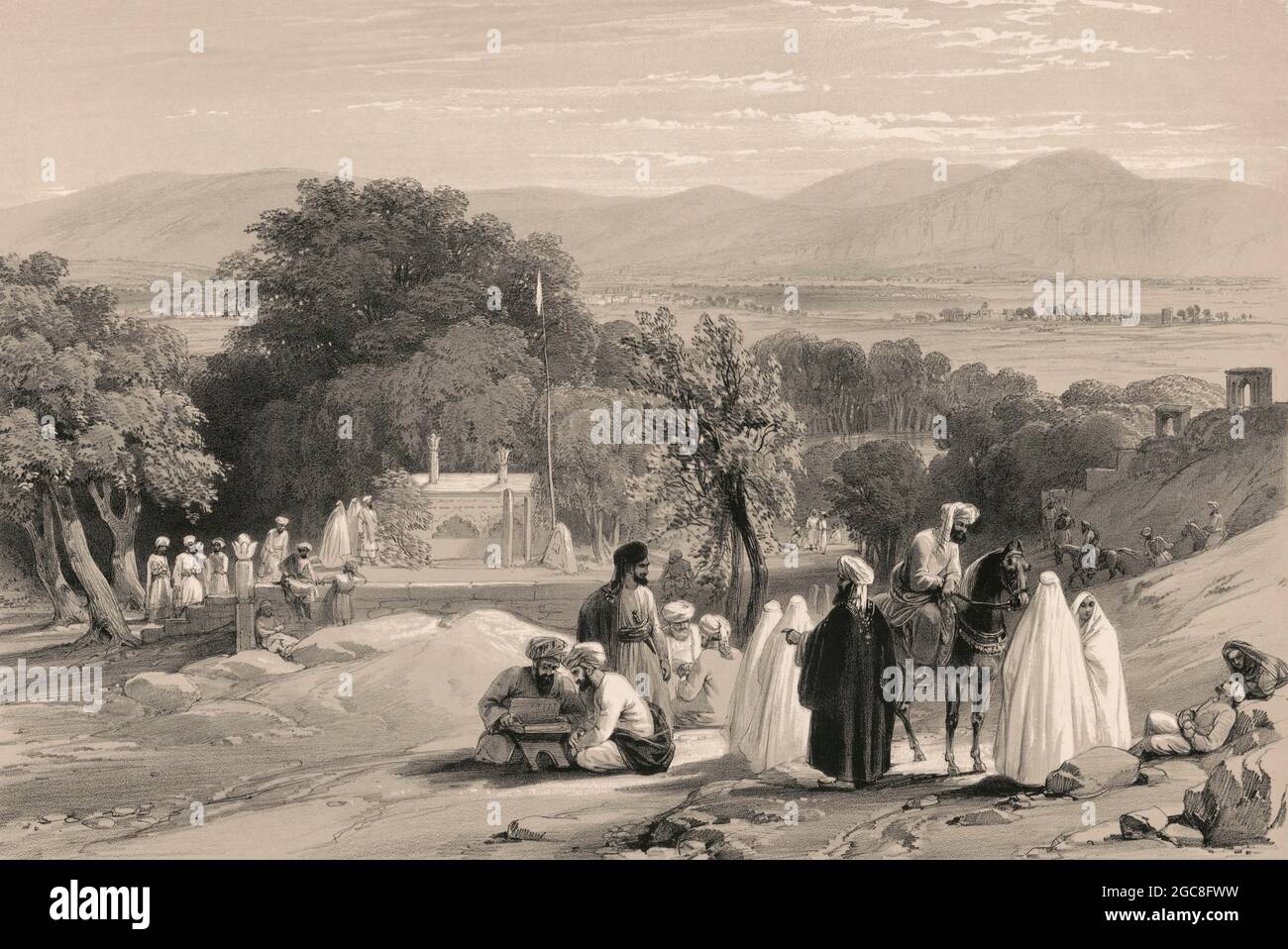 The tomb of Emperor Zahir ad-Din Muhammad Babur, Kabul, Afghanistan, First Anglo-Afghan War, sketch by James Atkinson, 1839, digitally optimized Stock Photohttps://www.alamy.com/image-license-details/?v=1https://www.alamy.com/the-tomb-of-emperor-zahir-ad-din-muhammad-babur-kabul-afghanistan-first-anglo-afghan-war-sketch-by-james-atkinson-1839-digitally-optimized-image437823173.html
The tomb of Emperor Zahir ad-Din Muhammad Babur, Kabul, Afghanistan, First Anglo-Afghan War, sketch by James Atkinson, 1839, digitally optimized Stock Photohttps://www.alamy.com/image-license-details/?v=1https://www.alamy.com/the-tomb-of-emperor-zahir-ad-din-muhammad-babur-kabul-afghanistan-first-anglo-afghan-war-sketch-by-james-atkinson-1839-digitally-optimized-image437823173.htmlRM2GC8FWW–The tomb of Emperor Zahir ad-Din Muhammad Babur, Kabul, Afghanistan, First Anglo-Afghan War, sketch by James Atkinson, 1839, digitally optimized
 temple in the city of new delhi Stock Photohttps://www.alamy.com/image-license-details/?v=1https://www.alamy.com/stock-photo-temple-in-the-city-of-new-delhi-90747866.html
temple in the city of new delhi Stock Photohttps://www.alamy.com/image-license-details/?v=1https://www.alamy.com/stock-photo-temple-in-the-city-of-new-delhi-90747866.htmlRMF7HWR6–temple in the city of new delhi
 Tomb Of Babur, Gardens of Babur, Kabul, Kabul Province, Afghanistan Stock Photohttps://www.alamy.com/image-license-details/?v=1https://www.alamy.com/tomb-of-babur-gardens-of-babur-kabul-kabul-province-afghanistan-image228410350.html
Tomb Of Babur, Gardens of Babur, Kabul, Kabul Province, Afghanistan Stock Photohttps://www.alamy.com/image-license-details/?v=1https://www.alamy.com/tomb-of-babur-gardens-of-babur-kabul-kabul-province-afghanistan-image228410350.htmlRMR7GYME–Tomb Of Babur, Gardens of Babur, Kabul, Kabul Province, Afghanistan
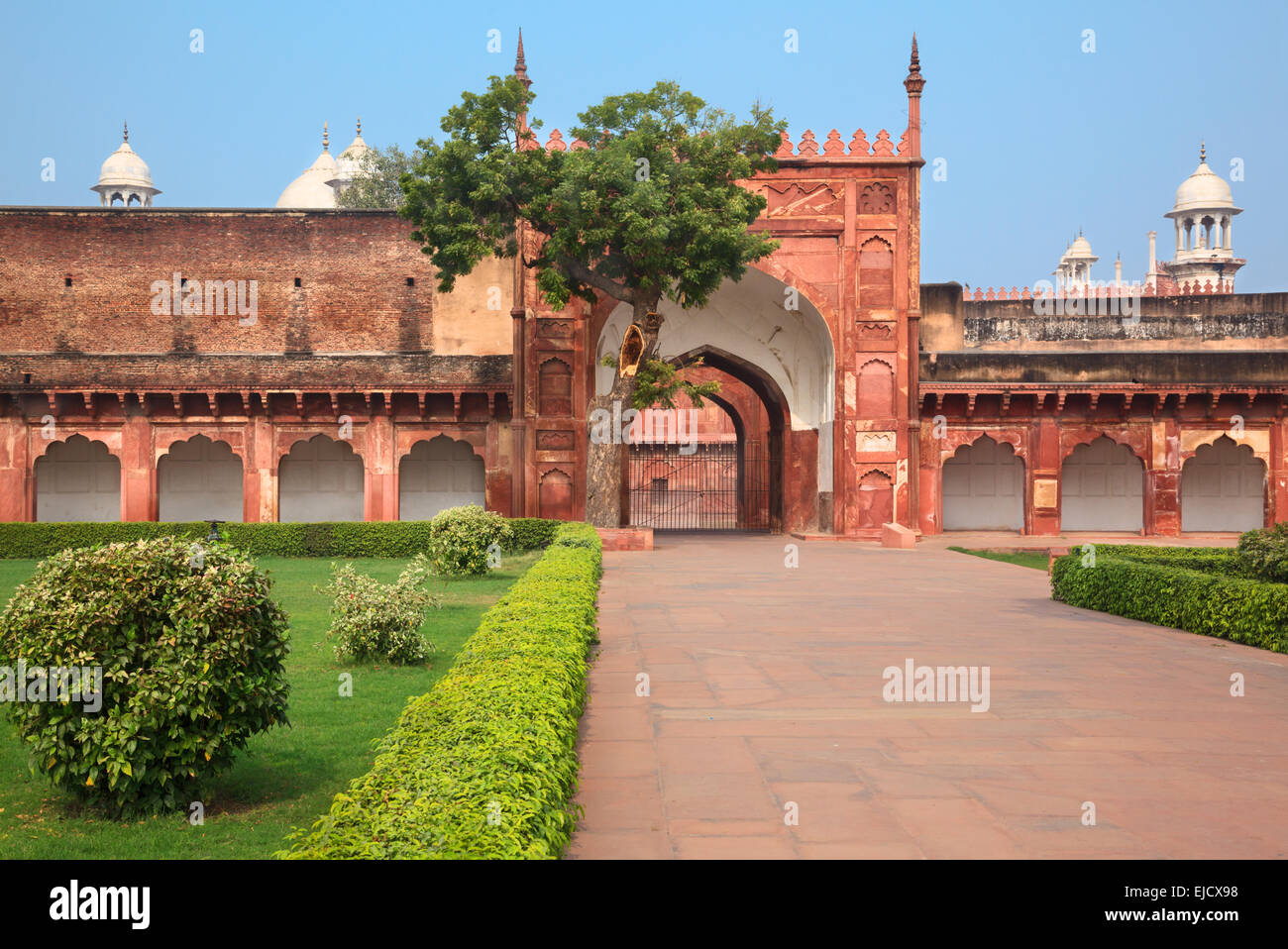 Charbagh or Agra Red Fort in morning mist Stock Photohttps://www.alamy.com/image-license-details/?v=1https://www.alamy.com/stock-photo-charbagh-or-agra-red-fort-in-morning-mist-80189348.html
Charbagh or Agra Red Fort in morning mist Stock Photohttps://www.alamy.com/image-license-details/?v=1https://www.alamy.com/stock-photo-charbagh-or-agra-red-fort-in-morning-mist-80189348.htmlRFEJCX98–Charbagh or Agra Red Fort in morning mist
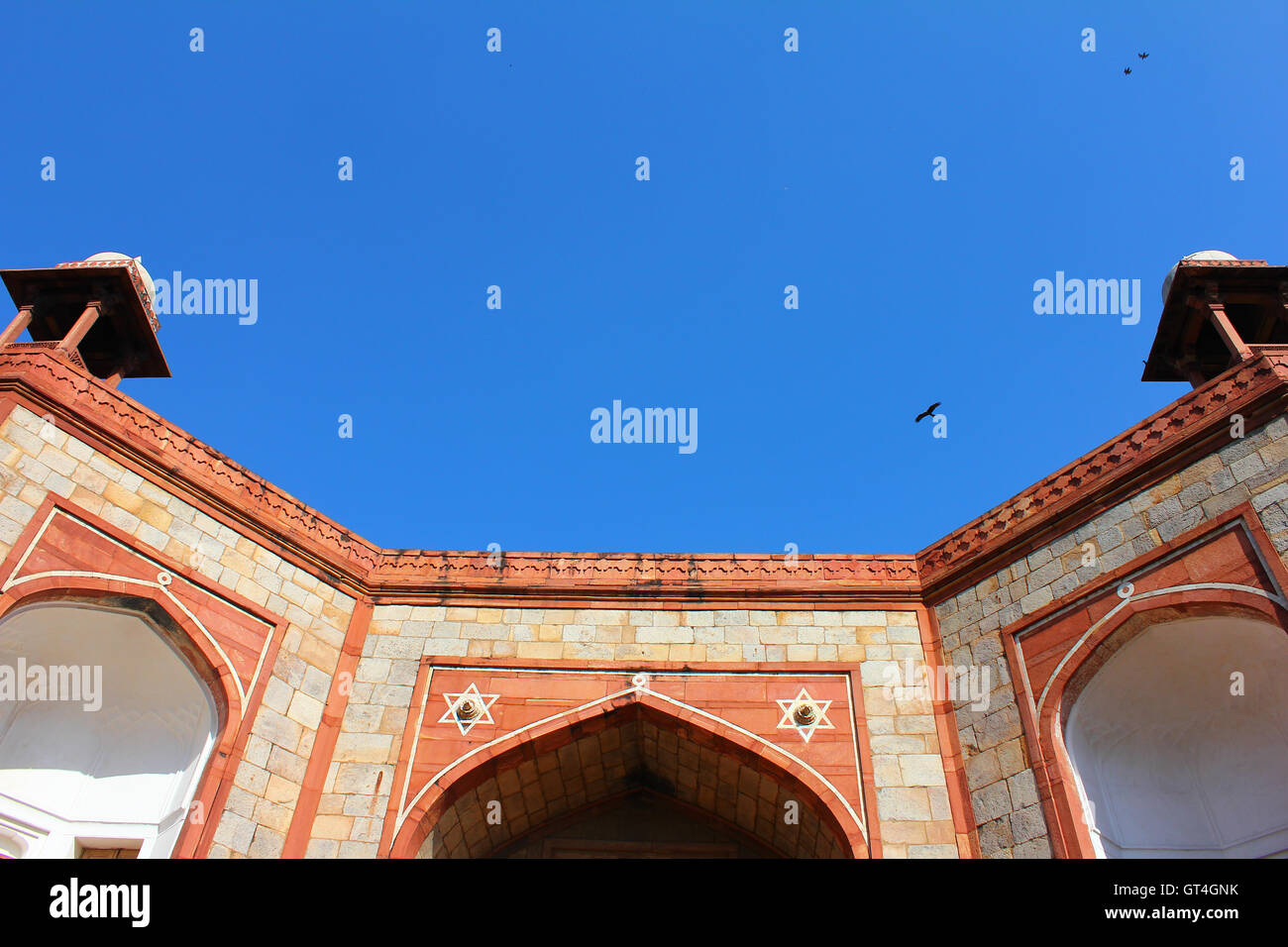 humanyun tomb Stock Photohttps://www.alamy.com/image-license-details/?v=1https://www.alamy.com/stock-photo-humanyun-tomb-118114911.html
humanyun tomb Stock Photohttps://www.alamy.com/image-license-details/?v=1https://www.alamy.com/stock-photo-humanyun-tomb-118114911.htmlRFGT4GNK–humanyun tomb
 A horse racing Stock Photohttps://www.alamy.com/image-license-details/?v=1https://www.alamy.com/stock-photo-a-horse-racing-90438176.html
A horse racing Stock Photohttps://www.alamy.com/image-license-details/?v=1https://www.alamy.com/stock-photo-a-horse-racing-90438176.htmlRMF73PPT–A horse racing
 View of Kabul, Afghanistan taken from the Gardens of Babur during reconstruction of the gardens in 2005. Stock Photohttps://www.alamy.com/image-license-details/?v=1https://www.alamy.com/view-of-kabul-afghanistan-taken-from-the-gardens-of-babur-during-reconstruction-of-the-gardens-in-2005-image498211402.html
View of Kabul, Afghanistan taken from the Gardens of Babur during reconstruction of the gardens in 2005. Stock Photohttps://www.alamy.com/image-license-details/?v=1https://www.alamy.com/view-of-kabul-afghanistan-taken-from-the-gardens-of-babur-during-reconstruction-of-the-gardens-in-2005-image498211402.htmlRF2KXFDMA–View of Kabul, Afghanistan taken from the Gardens of Babur during reconstruction of the gardens in 2005.
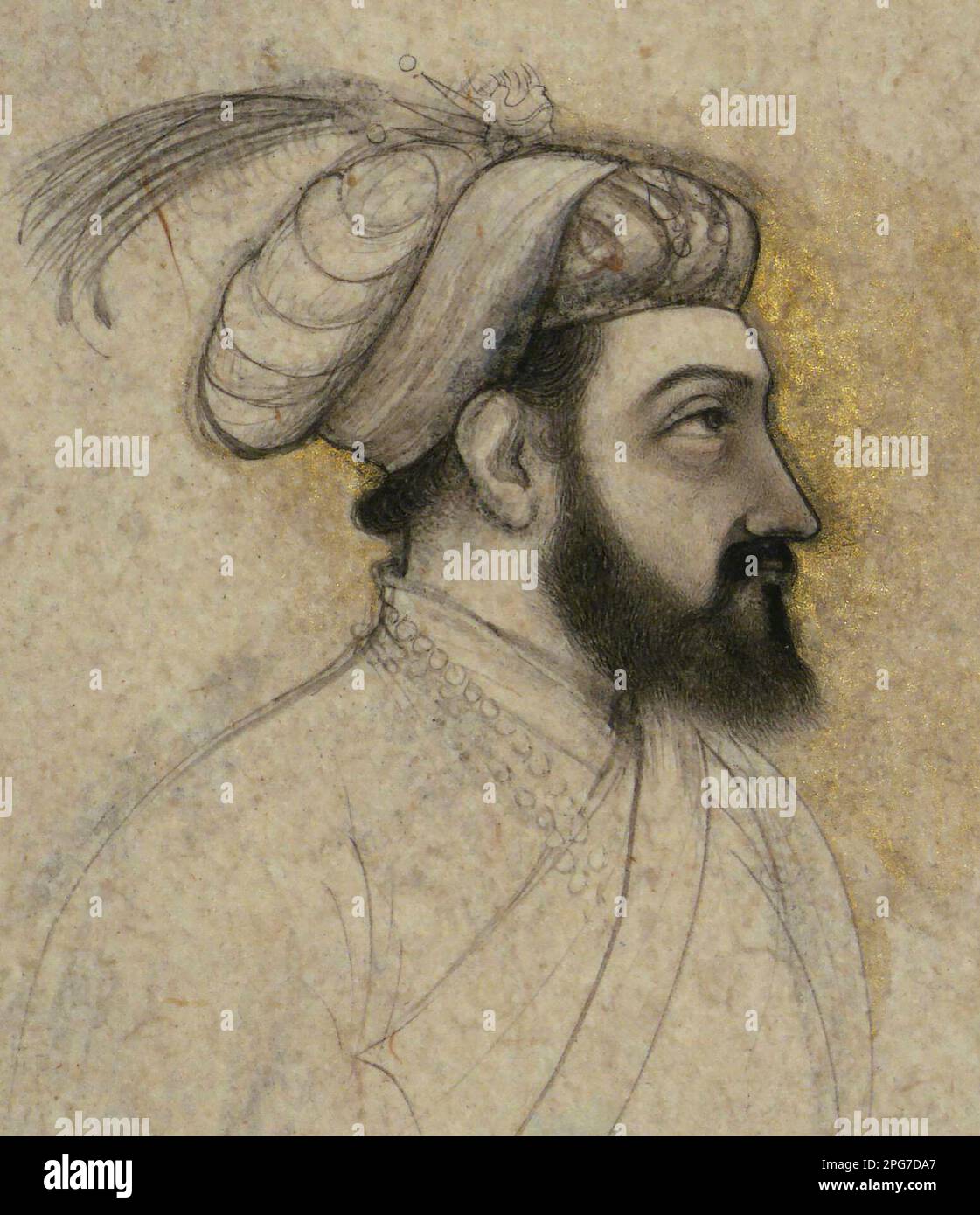 India: Portrait of Mughal Emperor Shah Jahan (5 January 1592 - 22 January 1666) by an unknown Indian artist, mid-17th century. Shah Jahan was the emperor of the Mughal Empire in the Indian Subcontinent from 1628 until 1658. The name Shah Jahan comes from Persian meaning 'King of the World'. He was the fifth Mughal emperor after Babur, Humayun, Akbar and Jahangir. The period of his reign was the golden age of Mughal architecture. Shahanshah Shah Jahan erected many splendid monuments, the most famous of which is the legendary Taj Mahal at Agra built as a tomb for his wife, Empress Mumtaz Mahal Stock Photohttps://www.alamy.com/image-license-details/?v=1https://www.alamy.com/india-portrait-of-mughal-emperor-shah-jahan-5-january-1592-22-january-1666-by-an-unknown-indian-artist-mid-17th-century-shah-jahan-was-the-emperor-of-the-mughal-empire-in-the-indian-subcontinent-from-1628-until-1658-the-name-shah-jahan-comes-from-persian-meaning-king-of-the-world-he-was-the-fifth-mughal-emperor-after-babur-humayun-akbar-and-jahangir-the-period-of-his-reign-was-the-golden-age-of-mughal-architecture-shahanshah-shah-jahan-erected-many-splendid-monuments-the-most-famous-of-which-is-the-legendary-taj-mahal-at-agra-built-as-a-tomb-for-his-wife-empress-mumtaz-mahal-image543520047.html
India: Portrait of Mughal Emperor Shah Jahan (5 January 1592 - 22 January 1666) by an unknown Indian artist, mid-17th century. Shah Jahan was the emperor of the Mughal Empire in the Indian Subcontinent from 1628 until 1658. The name Shah Jahan comes from Persian meaning 'King of the World'. He was the fifth Mughal emperor after Babur, Humayun, Akbar and Jahangir. The period of his reign was the golden age of Mughal architecture. Shahanshah Shah Jahan erected many splendid monuments, the most famous of which is the legendary Taj Mahal at Agra built as a tomb for his wife, Empress Mumtaz Mahal Stock Photohttps://www.alamy.com/image-license-details/?v=1https://www.alamy.com/india-portrait-of-mughal-emperor-shah-jahan-5-january-1592-22-january-1666-by-an-unknown-indian-artist-mid-17th-century-shah-jahan-was-the-emperor-of-the-mughal-empire-in-the-indian-subcontinent-from-1628-until-1658-the-name-shah-jahan-comes-from-persian-meaning-king-of-the-world-he-was-the-fifth-mughal-emperor-after-babur-humayun-akbar-and-jahangir-the-period-of-his-reign-was-the-golden-age-of-mughal-architecture-shahanshah-shah-jahan-erected-many-splendid-monuments-the-most-famous-of-which-is-the-legendary-taj-mahal-at-agra-built-as-a-tomb-for-his-wife-empress-mumtaz-mahal-image543520047.htmlRM2PG7DA7–India: Portrait of Mughal Emperor Shah Jahan (5 January 1592 - 22 January 1666) by an unknown Indian artist, mid-17th century. Shah Jahan was the emperor of the Mughal Empire in the Indian Subcontinent from 1628 until 1658. The name Shah Jahan comes from Persian meaning 'King of the World'. He was the fifth Mughal emperor after Babur, Humayun, Akbar and Jahangir. The period of his reign was the golden age of Mughal architecture. Shahanshah Shah Jahan erected many splendid monuments, the most famous of which is the legendary Taj Mahal at Agra built as a tomb for his wife, Empress Mumtaz Mahal
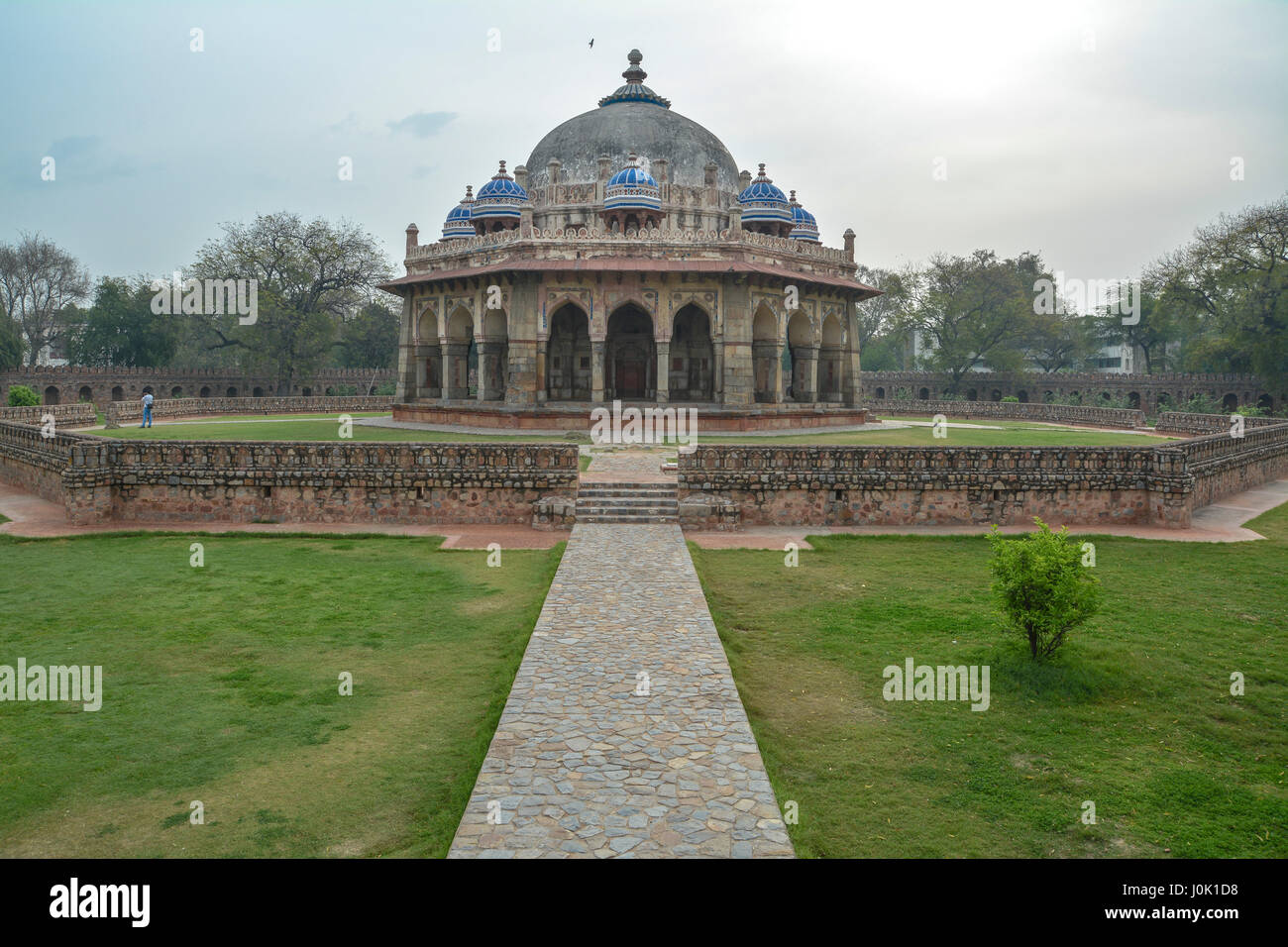 Isa Khan Niyazi's tomb Stock Photohttps://www.alamy.com/image-license-details/?v=1https://www.alamy.com/stock-photo-isa-khan-niyazis-tomb-138101188.html
Isa Khan Niyazi's tomb Stock Photohttps://www.alamy.com/image-license-details/?v=1https://www.alamy.com/stock-photo-isa-khan-niyazis-tomb-138101188.htmlRFJ0K1D8–Isa Khan Niyazi's tomb
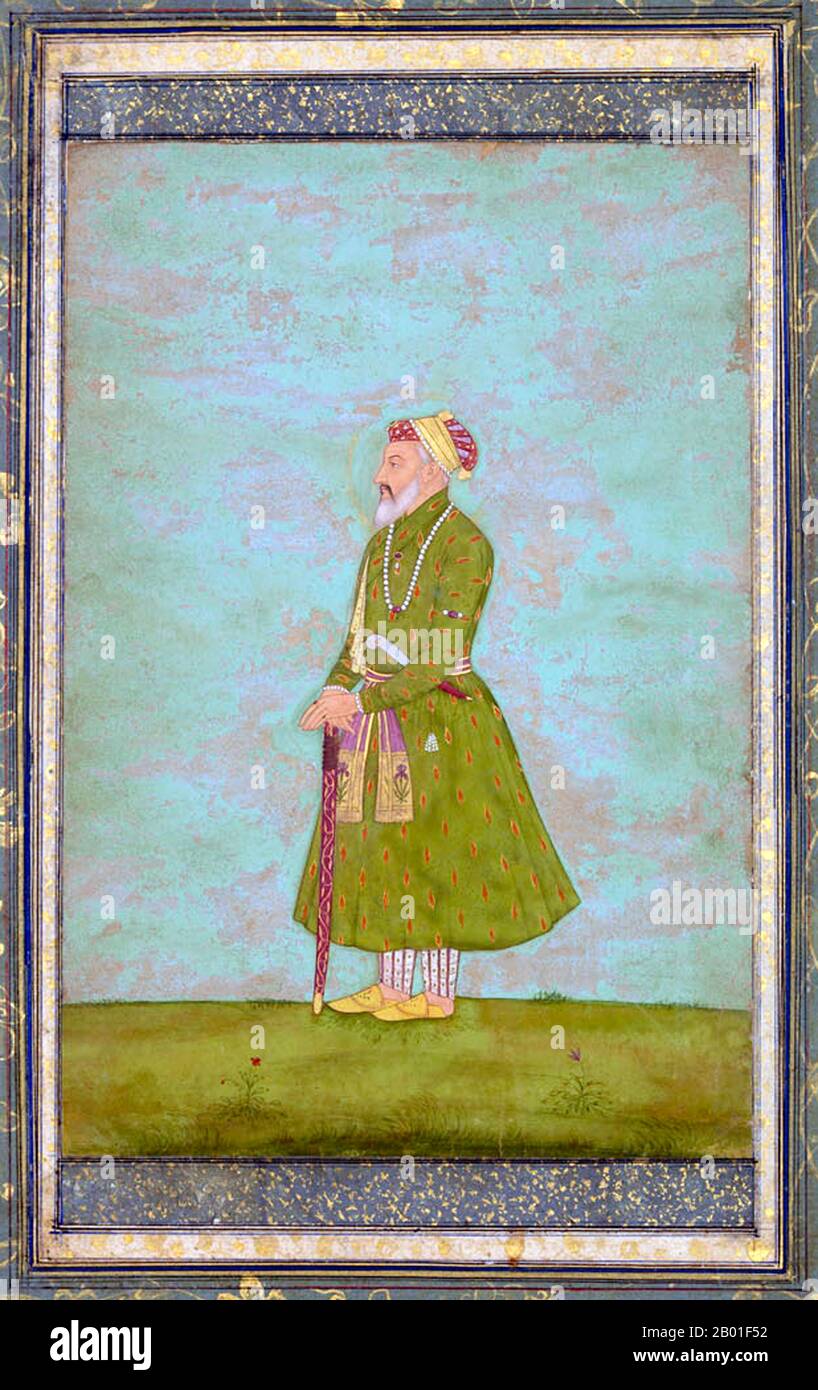 India: Mughal Emperor Shah Jahan (5 January 1592 - 22 January 1666) as an older man. Watercolour painting, late 17th century. Shah Jahan was the emperor of the Mughal Empire in the Indian Subcontinent from 1628 until 1658. The name Shah Jahan comes from Persian meaning 'King of the World'. He was the fifth Mughal emperor after Babur, Humayun, Akbar and Jahangir. The period of his reign was the golden age of Mughal architecture. Shahanshah Shah Jahan erected many splendid monuments, the most famous of which is the legendary Taj Mahal at Agra built as a tomb for his wife, Empress Mumtaz Mahal. Stock Photohttps://www.alamy.com/image-license-details/?v=1https://www.alamy.com/india-mughal-emperor-shah-jahan-5-january-1592-22-january-1666-as-an-older-man-watercolour-painting-late-17th-century-shah-jahan-was-the-emperor-of-the-mughal-empire-in-the-indian-subcontinent-from-1628-until-1658-the-name-shah-jahan-comes-from-persian-meaning-king-of-the-world-he-was-the-fifth-mughal-emperor-after-babur-humayun-akbar-and-jahangir-the-period-of-his-reign-was-the-golden-age-of-mughal-architecture-shahanshah-shah-jahan-erected-many-splendid-monuments-the-most-famous-of-which-is-the-legendary-taj-mahal-at-agra-built-as-a-tomb-for-his-wife-empress-mumtaz-mahal-image344241214.html
India: Mughal Emperor Shah Jahan (5 January 1592 - 22 January 1666) as an older man. Watercolour painting, late 17th century. Shah Jahan was the emperor of the Mughal Empire in the Indian Subcontinent from 1628 until 1658. The name Shah Jahan comes from Persian meaning 'King of the World'. He was the fifth Mughal emperor after Babur, Humayun, Akbar and Jahangir. The period of his reign was the golden age of Mughal architecture. Shahanshah Shah Jahan erected many splendid monuments, the most famous of which is the legendary Taj Mahal at Agra built as a tomb for his wife, Empress Mumtaz Mahal. Stock Photohttps://www.alamy.com/image-license-details/?v=1https://www.alamy.com/india-mughal-emperor-shah-jahan-5-january-1592-22-january-1666-as-an-older-man-watercolour-painting-late-17th-century-shah-jahan-was-the-emperor-of-the-mughal-empire-in-the-indian-subcontinent-from-1628-until-1658-the-name-shah-jahan-comes-from-persian-meaning-king-of-the-world-he-was-the-fifth-mughal-emperor-after-babur-humayun-akbar-and-jahangir-the-period-of-his-reign-was-the-golden-age-of-mughal-architecture-shahanshah-shah-jahan-erected-many-splendid-monuments-the-most-famous-of-which-is-the-legendary-taj-mahal-at-agra-built-as-a-tomb-for-his-wife-empress-mumtaz-mahal-image344241214.htmlRM2B01F52–India: Mughal Emperor Shah Jahan (5 January 1592 - 22 January 1666) as an older man. Watercolour painting, late 17th century. Shah Jahan was the emperor of the Mughal Empire in the Indian Subcontinent from 1628 until 1658. The name Shah Jahan comes from Persian meaning 'King of the World'. He was the fifth Mughal emperor after Babur, Humayun, Akbar and Jahangir. The period of his reign was the golden age of Mughal architecture. Shahanshah Shah Jahan erected many splendid monuments, the most famous of which is the legendary Taj Mahal at Agra built as a tomb for his wife, Empress Mumtaz Mahal.
![Machine colorised Mausoleum Of Humayoon [Humayun] [Nasir-ud-Din Muḥammad (Persian: romanized: Nasīr-ad-Dīn Muhammad; 6 March 1508 – 27 January 1556), better known by his regnal name, Humayun (Persian: همایون, romanized: Humāyūn), was the second emperor of the Mughal Empire, who ruled over territory in what is now Afghanistan, Pakistan, Northern India, and Bangladesh from 1530 to 1540 and again from 1555 to 1556. Like his father, Babur, he lost his kingdom early but regained it with the aid of the Safavid dynasty of Persia, with additional territory. At the time of his death in 1556, the Mugh Stock Photo Machine colorised Mausoleum Of Humayoon [Humayun] [Nasir-ud-Din Muḥammad (Persian: romanized: Nasīr-ad-Dīn Muhammad; 6 March 1508 – 27 January 1556), better known by his regnal name, Humayun (Persian: همایون, romanized: Humāyūn), was the second emperor of the Mughal Empire, who ruled over territory in what is now Afghanistan, Pakistan, Northern India, and Bangladesh from 1530 to 1540 and again from 1555 to 1556. Like his father, Babur, he lost his kingdom early but regained it with the aid of the Safavid dynasty of Persia, with additional territory. At the time of his death in 1556, the Mugh Stock Photo](https://c8.alamy.com/comp/2H6DY1C/machine-colorised-mausoleum-of-humayoon-humayun-nasir-ud-din-muammad-persian-romanized-nasr-ad-dn-muhammad-6-march-1508-27-january-1556-better-known-by-his-regnal-name-humayun-persian-romanized-humyn-was-the-second-emperor-of-the-mughal-empire-who-ruled-over-territory-in-what-is-now-afghanistan-pakistan-northern-india-and-bangladesh-from-1530-to-1540-and-again-from-1555-to-1556-like-his-father-babur-he-lost-his-kingdom-early-but-regained-it-with-the-aid-of-the-safavid-dynasty-of-persia-with-additional-territory-at-the-time-of-his-death-in-1556-the-mugh-2H6DY1C.jpg) Machine colorised Mausoleum Of Humayoon [Humayun] [Nasir-ud-Din Muḥammad (Persian: romanized: Nasīr-ad-Dīn Muhammad; 6 March 1508 – 27 January 1556), better known by his regnal name, Humayun (Persian: همایون, romanized: Humāyūn), was the second emperor of the Mughal Empire, who ruled over territory in what is now Afghanistan, Pakistan, Northern India, and Bangladesh from 1530 to 1540 and again from 1555 to 1556. Like his father, Babur, he lost his kingdom early but regained it with the aid of the Safavid dynasty of Persia, with additional territory. At the time of his death in 1556, the Mugh Stock Photohttps://www.alamy.com/image-license-details/?v=1https://www.alamy.com/machine-colorised-mausoleum-of-humayoon-humayun-nasir-ud-din-muammad-persian-romanized-nasr-ad-dn-muhammad-6-march-1508-27-january-1556-better-known-by-his-regnal-name-humayun-persian-romanized-humyn-was-the-second-emperor-of-the-mughal-empire-who-ruled-over-territory-in-what-is-now-afghanistan-pakistan-northern-india-and-bangladesh-from-1530-to-1540-and-again-from-1555-to-1556-like-his-father-babur-he-lost-his-kingdom-early-but-regained-it-with-the-aid-of-the-safavid-dynasty-of-persia-with-additional-territory-at-the-time-of-his-death-in-1556-the-mugh-image451464088.html
Machine colorised Mausoleum Of Humayoon [Humayun] [Nasir-ud-Din Muḥammad (Persian: romanized: Nasīr-ad-Dīn Muhammad; 6 March 1508 – 27 January 1556), better known by his regnal name, Humayun (Persian: همایون, romanized: Humāyūn), was the second emperor of the Mughal Empire, who ruled over territory in what is now Afghanistan, Pakistan, Northern India, and Bangladesh from 1530 to 1540 and again from 1555 to 1556. Like his father, Babur, he lost his kingdom early but regained it with the aid of the Safavid dynasty of Persia, with additional territory. At the time of his death in 1556, the Mugh Stock Photohttps://www.alamy.com/image-license-details/?v=1https://www.alamy.com/machine-colorised-mausoleum-of-humayoon-humayun-nasir-ud-din-muammad-persian-romanized-nasr-ad-dn-muhammad-6-march-1508-27-january-1556-better-known-by-his-regnal-name-humayun-persian-romanized-humyn-was-the-second-emperor-of-the-mughal-empire-who-ruled-over-territory-in-what-is-now-afghanistan-pakistan-northern-india-and-bangladesh-from-1530-to-1540-and-again-from-1555-to-1556-like-his-father-babur-he-lost-his-kingdom-early-but-regained-it-with-the-aid-of-the-safavid-dynasty-of-persia-with-additional-territory-at-the-time-of-his-death-in-1556-the-mugh-image451464088.htmlRF2H6DY1C–Machine colorised Mausoleum Of Humayoon [Humayun] [Nasir-ud-Din Muḥammad (Persian: romanized: Nasīr-ad-Dīn Muhammad; 6 March 1508 – 27 January 1556), better known by his regnal name, Humayun (Persian: همایون, romanized: Humāyūn), was the second emperor of the Mughal Empire, who ruled over territory in what is now Afghanistan, Pakistan, Northern India, and Bangladesh from 1530 to 1540 and again from 1555 to 1556. Like his father, Babur, he lost his kingdom early but regained it with the aid of the Safavid dynasty of Persia, with additional territory. At the time of his death in 1556, the Mugh
 First Anglo-Afghan War. The Tomb of the emperor Babur. 1840-1850. Sketches by Jas. Atkinson, esq. To the right of this tomb appear the extensive ruins of a celebrated Mosque, which was built by Shah-Jehan. The Tower in the middle of the distance is the Killa-Kazee, and the Fort on the extreme right the residence of Newab Jubbar Khan, brother of Dost Mahommed Khan. Ascending to the upper part of the grove, as seen in the last drawing, is a terrace, about thirty yards square, and nearly in the middle of it, is the tomb erected in honor of the Emperor Babur, in 1650, by Shah-Jehan, after the conq Stock Photohttps://www.alamy.com/image-license-details/?v=1https://www.alamy.com/first-anglo-afghan-war-the-tomb-of-the-emperor-babur-1840-1850-sketches-by-jas-atkinson-esq-to-the-right-of-this-tomb-appear-the-extensive-ruins-of-a-celebrated-mosque-which-was-built-by-shah-jehan-the-tower-in-the-middle-of-the-distance-is-the-killa-kazee-and-the-fort-on-the-extreme-right-the-residence-of-newab-jubbar-khan-brother-of-dost-mahommed-khan-ascending-to-the-upper-part-of-the-grove-as-seen-in-the-last-drawing-is-a-terrace-about-thirty-yards-square-and-nearly-in-the-middle-of-it-is-the-tomb-erected-in-honor-of-the-emperor-babur-in-1650-by-shah-jehan-after-the-conq-image618362208.html
First Anglo-Afghan War. The Tomb of the emperor Babur. 1840-1850. Sketches by Jas. Atkinson, esq. To the right of this tomb appear the extensive ruins of a celebrated Mosque, which was built by Shah-Jehan. The Tower in the middle of the distance is the Killa-Kazee, and the Fort on the extreme right the residence of Newab Jubbar Khan, brother of Dost Mahommed Khan. Ascending to the upper part of the grove, as seen in the last drawing, is a terrace, about thirty yards square, and nearly in the middle of it, is the tomb erected in honor of the Emperor Babur, in 1650, by Shah-Jehan, after the conq Stock Photohttps://www.alamy.com/image-license-details/?v=1https://www.alamy.com/first-anglo-afghan-war-the-tomb-of-the-emperor-babur-1840-1850-sketches-by-jas-atkinson-esq-to-the-right-of-this-tomb-appear-the-extensive-ruins-of-a-celebrated-mosque-which-was-built-by-shah-jehan-the-tower-in-the-middle-of-the-distance-is-the-killa-kazee-and-the-fort-on-the-extreme-right-the-residence-of-newab-jubbar-khan-brother-of-dost-mahommed-khan-ascending-to-the-upper-part-of-the-grove-as-seen-in-the-last-drawing-is-a-terrace-about-thirty-yards-square-and-nearly-in-the-middle-of-it-is-the-tomb-erected-in-honor-of-the-emperor-babur-in-1650-by-shah-jehan-after-the-conq-image618362208.htmlRM2XX0R8G–First Anglo-Afghan War. The Tomb of the emperor Babur. 1840-1850. Sketches by Jas. Atkinson, esq. To the right of this tomb appear the extensive ruins of a celebrated Mosque, which was built by Shah-Jehan. The Tower in the middle of the distance is the Killa-Kazee, and the Fort on the extreme right the residence of Newab Jubbar Khan, brother of Dost Mahommed Khan. Ascending to the upper part of the grove, as seen in the last drawing, is a terrace, about thirty yards square, and nearly in the middle of it, is the tomb erected in honor of the Emperor Babur, in 1650, by Shah-Jehan, after the conq
 Formal garden ( Charbagh or Agra Red Fort garden ) in morning mist Stock Photohttps://www.alamy.com/image-license-details/?v=1https://www.alamy.com/formal-garden-charbagh-or-agra-red-fort-garden-in-morning-mist-image65903363.html
Formal garden ( Charbagh or Agra Red Fort garden ) in morning mist Stock Photohttps://www.alamy.com/image-license-details/?v=1https://www.alamy.com/formal-garden-charbagh-or-agra-red-fort-garden-in-morning-mist-image65903363.htmlRFDR64BF–Formal garden ( Charbagh or Agra Red Fort garden ) in morning mist
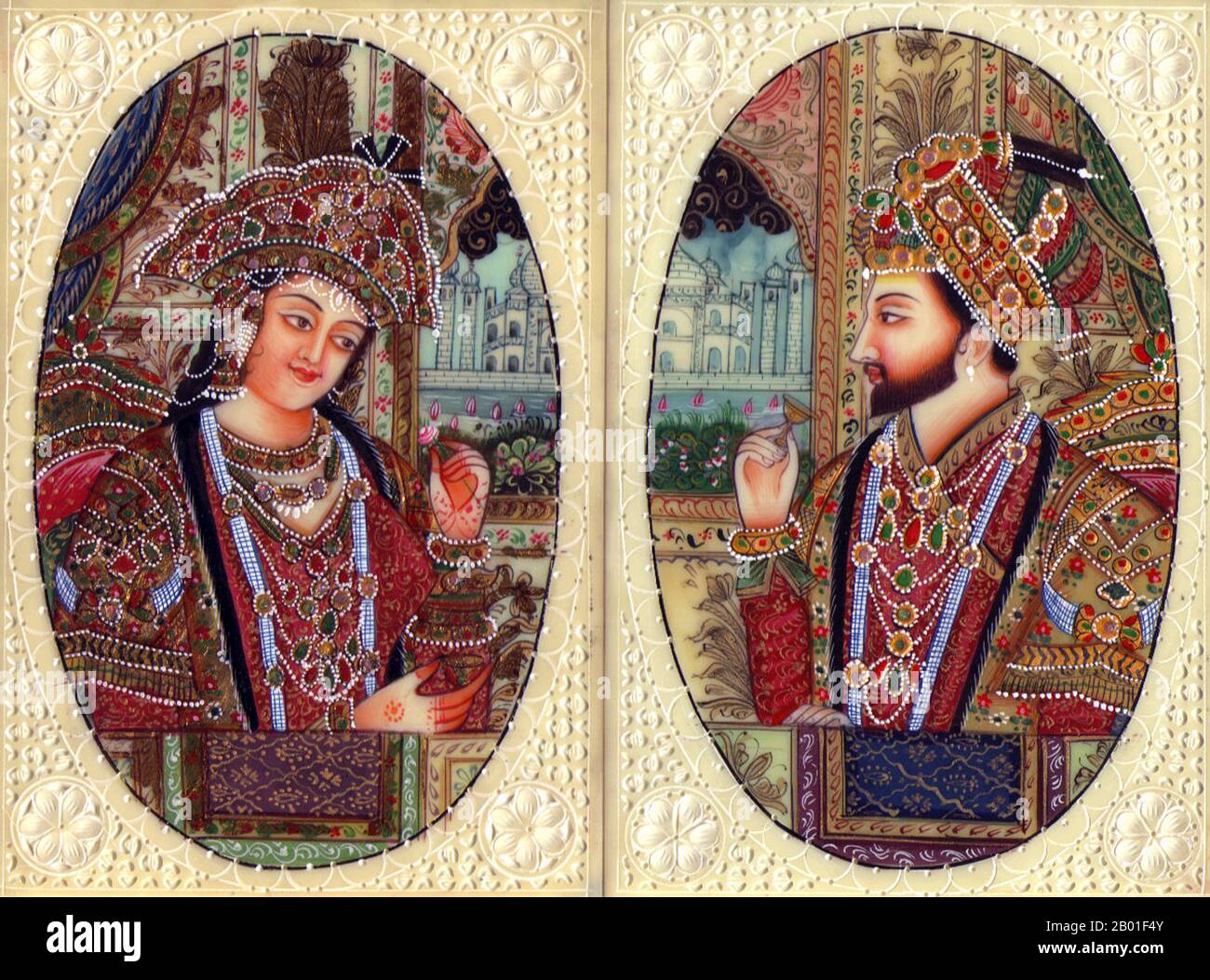 India: Shah Jahan (5 January 1592 - 22 January 1666) and Mumtaz Mahal (29 October 1593 - 17 June 1631) in twin portraits, Mughal style, c. early 20th century. Shah Jahan was the emperor of the Mughal Empire in the Indian Subcontinent from 1628 until 1658. The name Shah Jahan comes from Persian meaning 'King of the World'. He was the fifth Mughal emperor after Babur, Humayun, Akbar and Jahangir. Mumtaz Mahal, born Arjumand Banu Begum, was a Mughal Empress and chief consort of Emperor Shah Jahan. The Taj Mahal in Agra was constructed by her husband as her tomb and a symbol of his undying love Stock Photohttps://www.alamy.com/image-license-details/?v=1https://www.alamy.com/india-shah-jahan-5-january-1592-22-january-1666-and-mumtaz-mahal-29-october-1593-17-june-1631-in-twin-portraits-mughal-style-c-early-20th-century-shah-jahan-was-the-emperor-of-the-mughal-empire-in-the-indian-subcontinent-from-1628-until-1658-the-name-shah-jahan-comes-from-persian-meaning-king-of-the-world-he-was-the-fifth-mughal-emperor-after-babur-humayun-akbar-and-jahangir-mumtaz-mahal-born-arjumand-banu-begum-was-a-mughal-empress-and-chief-consort-of-emperor-shah-jahan-the-taj-mahal-in-agra-was-constructed-by-her-husband-as-her-tomb-and-a-symbol-of-his-undying-love-image344241211.html
India: Shah Jahan (5 January 1592 - 22 January 1666) and Mumtaz Mahal (29 October 1593 - 17 June 1631) in twin portraits, Mughal style, c. early 20th century. Shah Jahan was the emperor of the Mughal Empire in the Indian Subcontinent from 1628 until 1658. The name Shah Jahan comes from Persian meaning 'King of the World'. He was the fifth Mughal emperor after Babur, Humayun, Akbar and Jahangir. Mumtaz Mahal, born Arjumand Banu Begum, was a Mughal Empress and chief consort of Emperor Shah Jahan. The Taj Mahal in Agra was constructed by her husband as her tomb and a symbol of his undying love Stock Photohttps://www.alamy.com/image-license-details/?v=1https://www.alamy.com/india-shah-jahan-5-january-1592-22-january-1666-and-mumtaz-mahal-29-october-1593-17-june-1631-in-twin-portraits-mughal-style-c-early-20th-century-shah-jahan-was-the-emperor-of-the-mughal-empire-in-the-indian-subcontinent-from-1628-until-1658-the-name-shah-jahan-comes-from-persian-meaning-king-of-the-world-he-was-the-fifth-mughal-emperor-after-babur-humayun-akbar-and-jahangir-mumtaz-mahal-born-arjumand-banu-begum-was-a-mughal-empress-and-chief-consort-of-emperor-shah-jahan-the-taj-mahal-in-agra-was-constructed-by-her-husband-as-her-tomb-and-a-symbol-of-his-undying-love-image344241211.htmlRM2B01F4Y–India: Shah Jahan (5 January 1592 - 22 January 1666) and Mumtaz Mahal (29 October 1593 - 17 June 1631) in twin portraits, Mughal style, c. early 20th century. Shah Jahan was the emperor of the Mughal Empire in the Indian Subcontinent from 1628 until 1658. The name Shah Jahan comes from Persian meaning 'King of the World'. He was the fifth Mughal emperor after Babur, Humayun, Akbar and Jahangir. Mumtaz Mahal, born Arjumand Banu Begum, was a Mughal Empress and chief consort of Emperor Shah Jahan. The Taj Mahal in Agra was constructed by her husband as her tomb and a symbol of his undying love
 Babur's garden, on the slopes of a hill called Sher-Darwaza, Kabul. The tomb of Babur (1483-1530). Stock Photohttps://www.alamy.com/image-license-details/?v=1https://www.alamy.com/stock-photo-baburs-garden-on-the-slopes-of-a-hill-called-sher-darwaza-kabul-the-15292377.html
Babur's garden, on the slopes of a hill called Sher-Darwaza, Kabul. The tomb of Babur (1483-1530). Stock Photohttps://www.alamy.com/image-license-details/?v=1https://www.alamy.com/stock-photo-baburs-garden-on-the-slopes-of-a-hill-called-sher-darwaza-kabul-the-15292377.htmlRMAMM3KP–Babur's garden, on the slopes of a hill called Sher-Darwaza, Kabul. The tomb of Babur (1483-1530).
 DELHI, INDIA - SEPTEMBER 19, 2017: Humayun s Tomb, Delhi, India. UNESCO World Heritage Site, it is the tomb of the Mughal Emperor Humayun, fish eye effect Stock Photohttps://www.alamy.com/image-license-details/?v=1https://www.alamy.com/stock-image-delhi-india-september-19-2017-humayun-s-tomb-delhi-india-unesco-world-164640483.html
DELHI, INDIA - SEPTEMBER 19, 2017: Humayun s Tomb, Delhi, India. UNESCO World Heritage Site, it is the tomb of the Mughal Emperor Humayun, fish eye effect Stock Photohttps://www.alamy.com/image-license-details/?v=1https://www.alamy.com/stock-image-delhi-india-september-19-2017-humayun-s-tomb-delhi-india-unesco-world-164640483.htmlRFKFT0H7–DELHI, INDIA - SEPTEMBER 19, 2017: Humayun s Tomb, Delhi, India. UNESCO World Heritage Site, it is the tomb of the Mughal Emperor Humayun, fish eye effect
 India, Delhi, Humayun's Tomb, built by Hamida Banu Begun in 1565-72 A.D. the earliest example of Persian influence in Indian architecture Stock Photohttps://www.alamy.com/image-license-details/?v=1https://www.alamy.com/india-delhi-humayuns-tomb-built-by-hamida-banu-begun-in-1565-72-ad-the-earliest-example-of-persian-influence-in-indian-architecture-image456785655.html
India, Delhi, Humayun's Tomb, built by Hamida Banu Begun in 1565-72 A.D. the earliest example of Persian influence in Indian architecture Stock Photohttps://www.alamy.com/image-license-details/?v=1https://www.alamy.com/india-delhi-humayuns-tomb-built-by-hamida-banu-begun-in-1565-72-ad-the-earliest-example-of-persian-influence-in-indian-architecture-image456785655.htmlRF2HF4ANB–India, Delhi, Humayun's Tomb, built by Hamida Banu Begun in 1565-72 A.D. the earliest example of Persian influence in Indian architecture
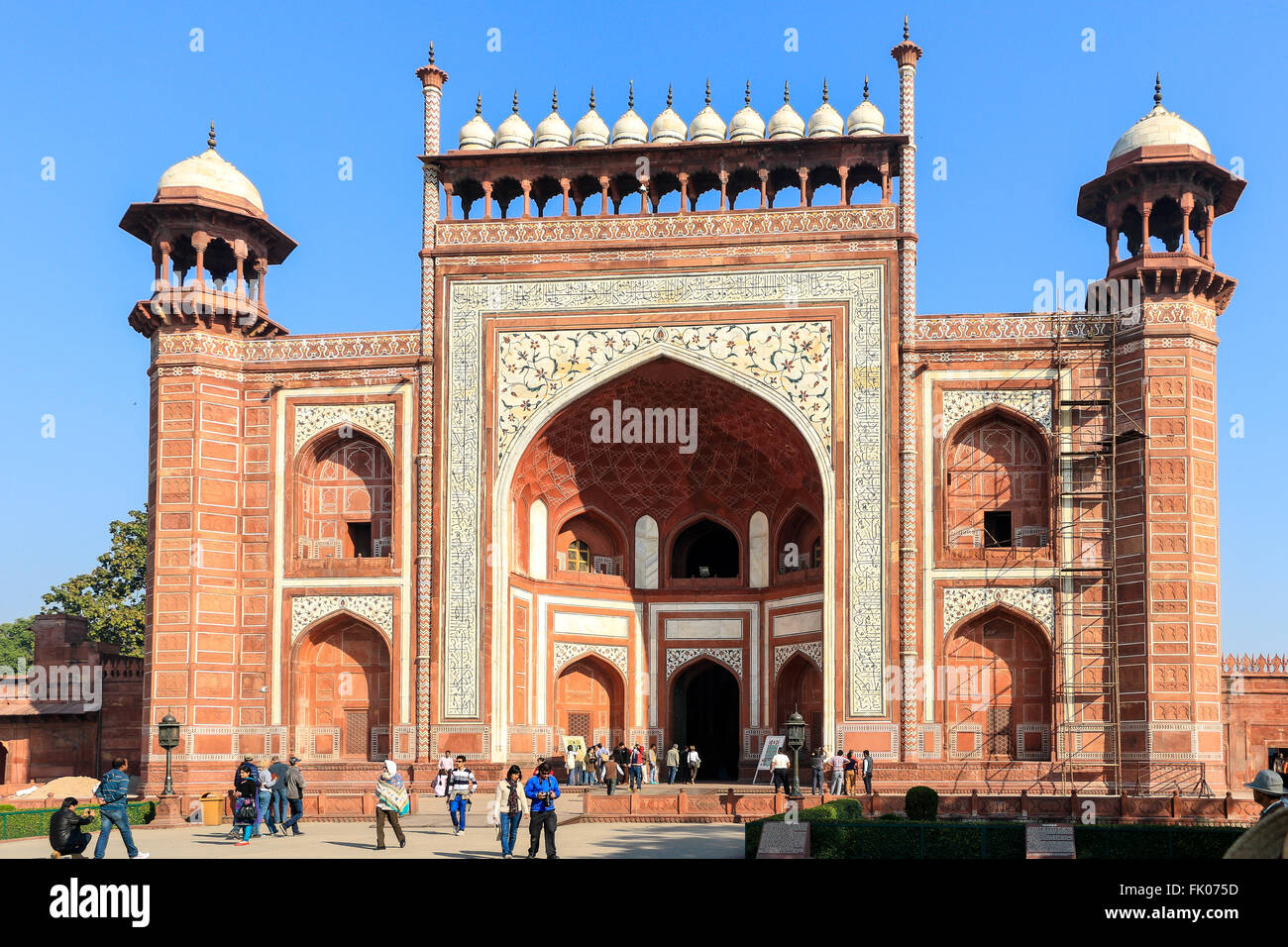 Red Fort in front of the Taj Mahal, UNESCO World Heritage Site, Agra,Uttar Pradesh, India, Asia Stock Photohttps://www.alamy.com/image-license-details/?v=1https://www.alamy.com/stock-photo-red-fort-in-front-of-the-taj-mahal-unesco-world-heritage-site-agrauttar-97735945.html
Red Fort in front of the Taj Mahal, UNESCO World Heritage Site, Agra,Uttar Pradesh, India, Asia Stock Photohttps://www.alamy.com/image-license-details/?v=1https://www.alamy.com/stock-photo-red-fort-in-front-of-the-taj-mahal-unesco-world-heritage-site-agrauttar-97735945.htmlRFFK075D–Red Fort in front of the Taj Mahal, UNESCO World Heritage Site, Agra,Uttar Pradesh, India, Asia
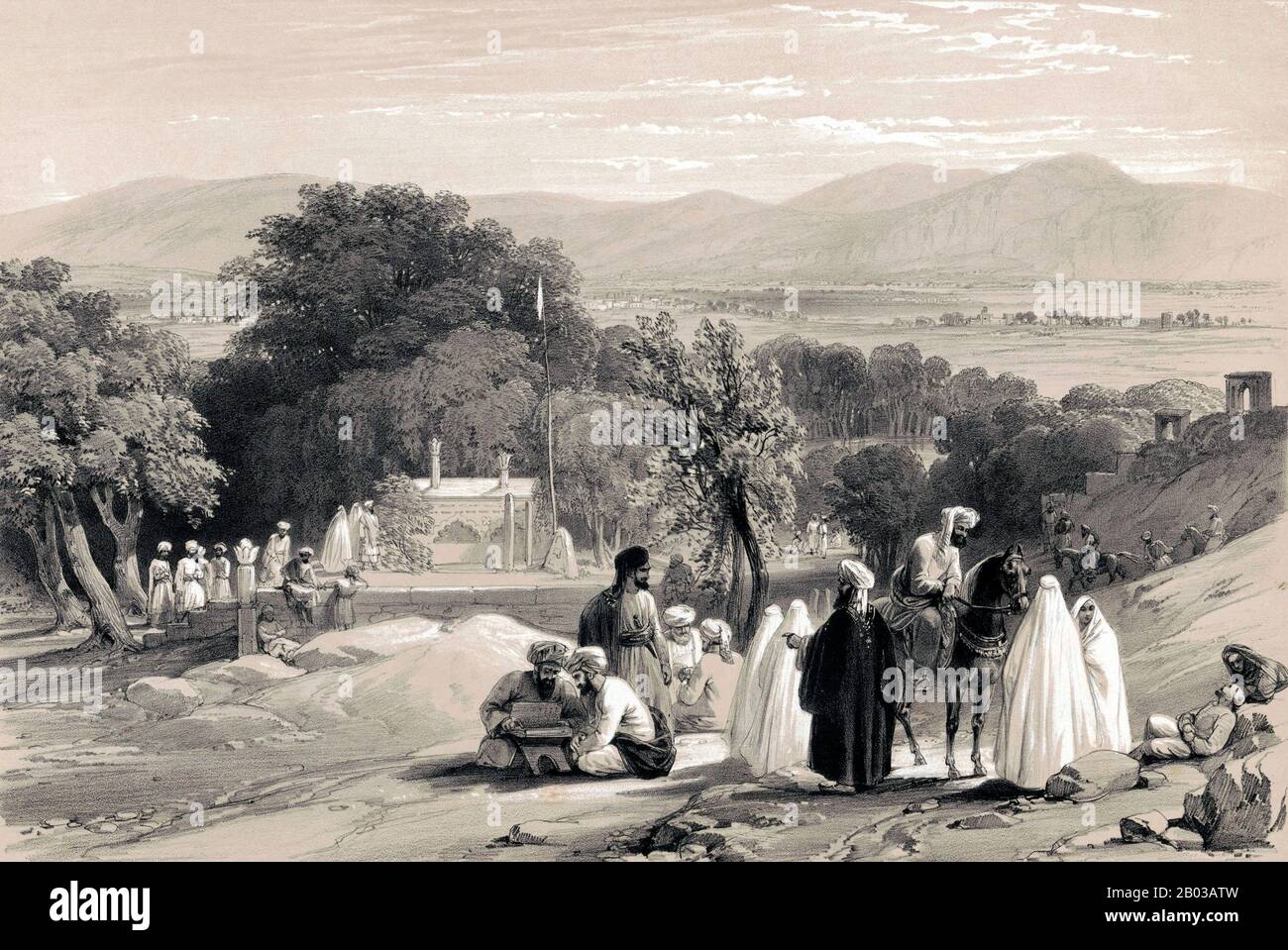 Zahir ud-din Muhammad Babur was a Muslim conqueror from Central Asia who, following a series of setbacks, finally succeeded in laying the basis for the Mughal dynasty of South Asia. He was a direct descendant of Timur through his father, and a descendant also of Genghis Khan through his mother. Stock Photohttps://www.alamy.com/image-license-details/?v=1https://www.alamy.com/zahir-ud-din-muhammad-babur-was-a-muslim-conqueror-from-central-asia-who-following-a-series-of-setbacks-finally-succeeded-in-laying-the-basis-for-the-mughal-dynasty-of-south-asia-he-was-a-direct-descendant-of-timur-through-his-father-and-a-descendant-also-of-genghis-khan-through-his-mother-image344281753.html
Zahir ud-din Muhammad Babur was a Muslim conqueror from Central Asia who, following a series of setbacks, finally succeeded in laying the basis for the Mughal dynasty of South Asia. He was a direct descendant of Timur through his father, and a descendant also of Genghis Khan through his mother. Stock Photohttps://www.alamy.com/image-license-details/?v=1https://www.alamy.com/zahir-ud-din-muhammad-babur-was-a-muslim-conqueror-from-central-asia-who-following-a-series-of-setbacks-finally-succeeded-in-laying-the-basis-for-the-mughal-dynasty-of-south-asia-he-was-a-direct-descendant-of-timur-through-his-father-and-a-descendant-also-of-genghis-khan-through-his-mother-image344281753.htmlRM2B03ATW–Zahir ud-din Muhammad Babur was a Muslim conqueror from Central Asia who, following a series of setbacks, finally succeeded in laying the basis for the Mughal dynasty of South Asia. He was a direct descendant of Timur through his father, and a descendant also of Genghis Khan through his mother.
 The Garden of Emperor Zahir ad-Din Muhammad Babur, Kabul, Afghanistan, First Anglo-Afghan War, sketch by James Atkinson, 1839, digitally optimized Stock Photohttps://www.alamy.com/image-license-details/?v=1https://www.alamy.com/the-garden-of-emperor-zahir-ad-din-muhammad-babur-kabul-afghanistan-first-anglo-afghan-war-sketch-by-james-atkinson-1839-digitally-optimized-image437823000.html
The Garden of Emperor Zahir ad-Din Muhammad Babur, Kabul, Afghanistan, First Anglo-Afghan War, sketch by James Atkinson, 1839, digitally optimized Stock Photohttps://www.alamy.com/image-license-details/?v=1https://www.alamy.com/the-garden-of-emperor-zahir-ad-din-muhammad-babur-kabul-afghanistan-first-anglo-afghan-war-sketch-by-james-atkinson-1839-digitally-optimized-image437823000.htmlRM2GC8FKM–The Garden of Emperor Zahir ad-Din Muhammad Babur, Kabul, Afghanistan, First Anglo-Afghan War, sketch by James Atkinson, 1839, digitally optimized
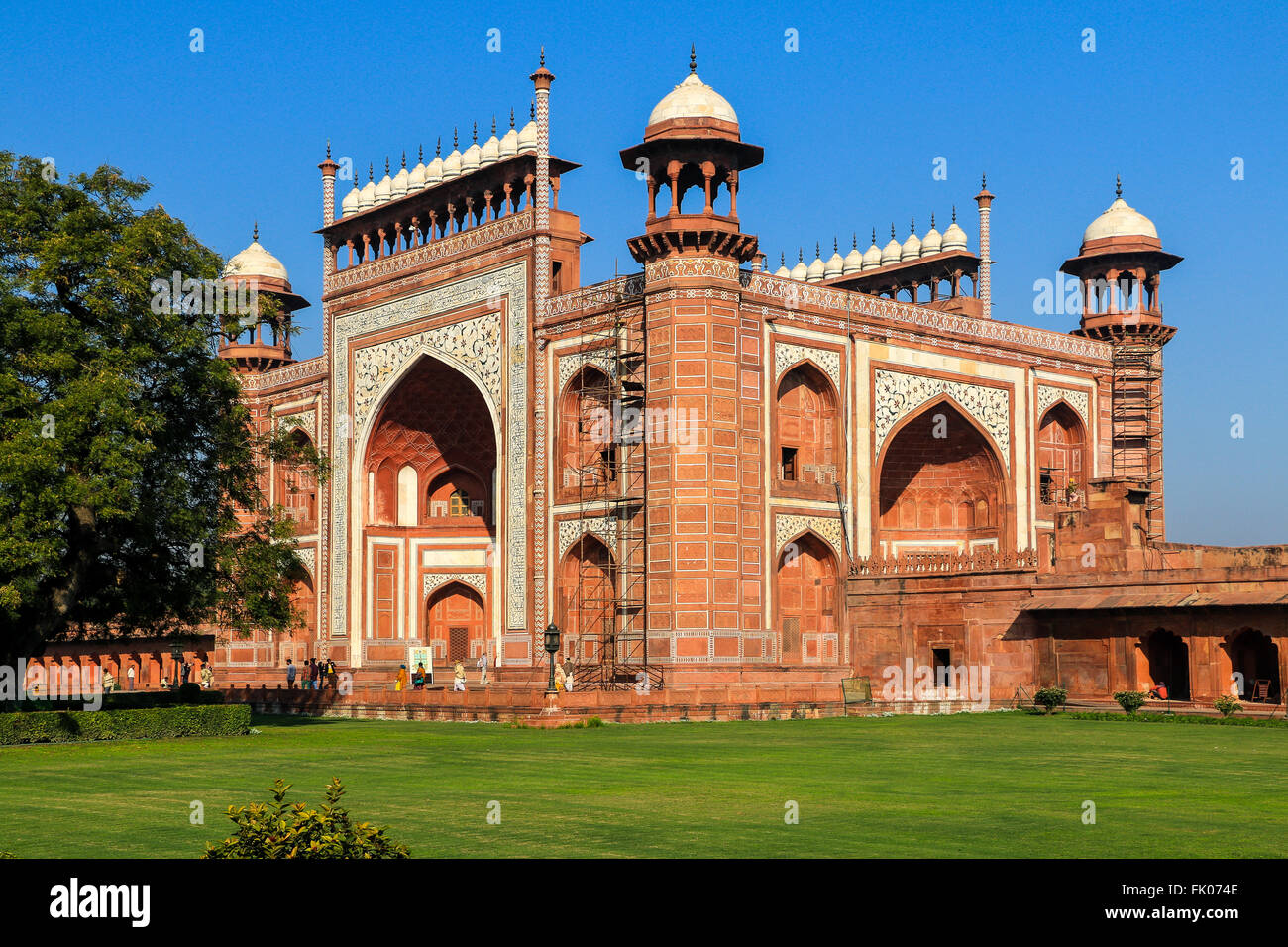 Red Fort in front of the Taj Mahal, UNESCO World Heritage Site, Agra,Uttar Pradesh, India, Asia Stock Photohttps://www.alamy.com/image-license-details/?v=1https://www.alamy.com/stock-photo-red-fort-in-front-of-the-taj-mahal-unesco-world-heritage-site-agrauttar-97735918.html
Red Fort in front of the Taj Mahal, UNESCO World Heritage Site, Agra,Uttar Pradesh, India, Asia Stock Photohttps://www.alamy.com/image-license-details/?v=1https://www.alamy.com/stock-photo-red-fort-in-front-of-the-taj-mahal-unesco-world-heritage-site-agrauttar-97735918.htmlRFFK074E–Red Fort in front of the Taj Mahal, UNESCO World Heritage Site, Agra,Uttar Pradesh, India, Asia
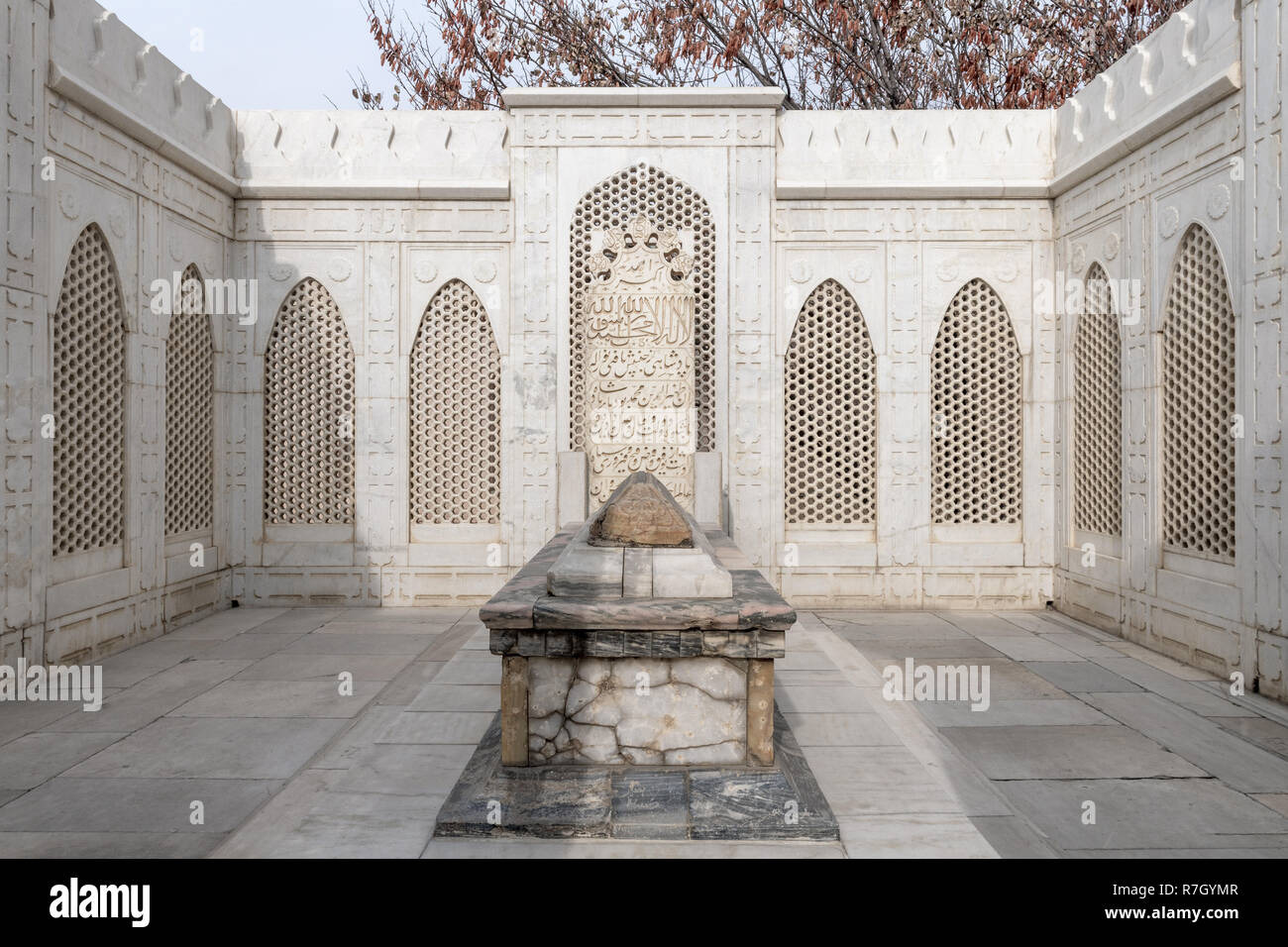 Tomb Of Babur, Gardens of Babur, Kabul, Kabul Province, Afghanistan Stock Photohttps://www.alamy.com/image-license-details/?v=1https://www.alamy.com/tomb-of-babur-gardens-of-babur-kabul-kabul-province-afghanistan-image228410359.html
Tomb Of Babur, Gardens of Babur, Kabul, Kabul Province, Afghanistan Stock Photohttps://www.alamy.com/image-license-details/?v=1https://www.alamy.com/tomb-of-babur-gardens-of-babur-kabul-kabul-province-afghanistan-image228410359.htmlRMR7GYMR–Tomb Of Babur, Gardens of Babur, Kabul, Kabul Province, Afghanistan
 Charbagh or Mughal Garden in morning mist Stock Photohttps://www.alamy.com/image-license-details/?v=1https://www.alamy.com/stock-photo-charbagh-or-mughal-garden-in-morning-mist-80189316.html
Charbagh or Mughal Garden in morning mist Stock Photohttps://www.alamy.com/image-license-details/?v=1https://www.alamy.com/stock-photo-charbagh-or-mughal-garden-in-morning-mist-80189316.htmlRFEJCX84–Charbagh or Mughal Garden in morning mist
 humanyun tomb Stock Photohttps://www.alamy.com/image-license-details/?v=1https://www.alamy.com/stock-photo-humanyun-tomb-118074091.html
humanyun tomb Stock Photohttps://www.alamy.com/image-license-details/?v=1https://www.alamy.com/stock-photo-humanyun-tomb-118074091.htmlRFGT2MKR–humanyun tomb
 hippodrome in Italy Stock Photohttps://www.alamy.com/image-license-details/?v=1https://www.alamy.com/stock-photo-hippodrome-in-italy-90438173.html
hippodrome in Italy Stock Photohttps://www.alamy.com/image-license-details/?v=1https://www.alamy.com/stock-photo-hippodrome-in-italy-90438173.htmlRMF73PPN–hippodrome in Italy
 View of Kabul, Afghanistan taken from the Gardens of Babur during reconstruction of the gardens in 2005. Stock Photohttps://www.alamy.com/image-license-details/?v=1https://www.alamy.com/view-of-kabul-afghanistan-taken-from-the-gardens-of-babur-during-reconstruction-of-the-gardens-in-2005-image498211915.html
View of Kabul, Afghanistan taken from the Gardens of Babur during reconstruction of the gardens in 2005. Stock Photohttps://www.alamy.com/image-license-details/?v=1https://www.alamy.com/view-of-kabul-afghanistan-taken-from-the-gardens-of-babur-during-reconstruction-of-the-gardens-in-2005-image498211915.htmlRF2KXFEAK–View of Kabul, Afghanistan taken from the Gardens of Babur during reconstruction of the gardens in 2005.
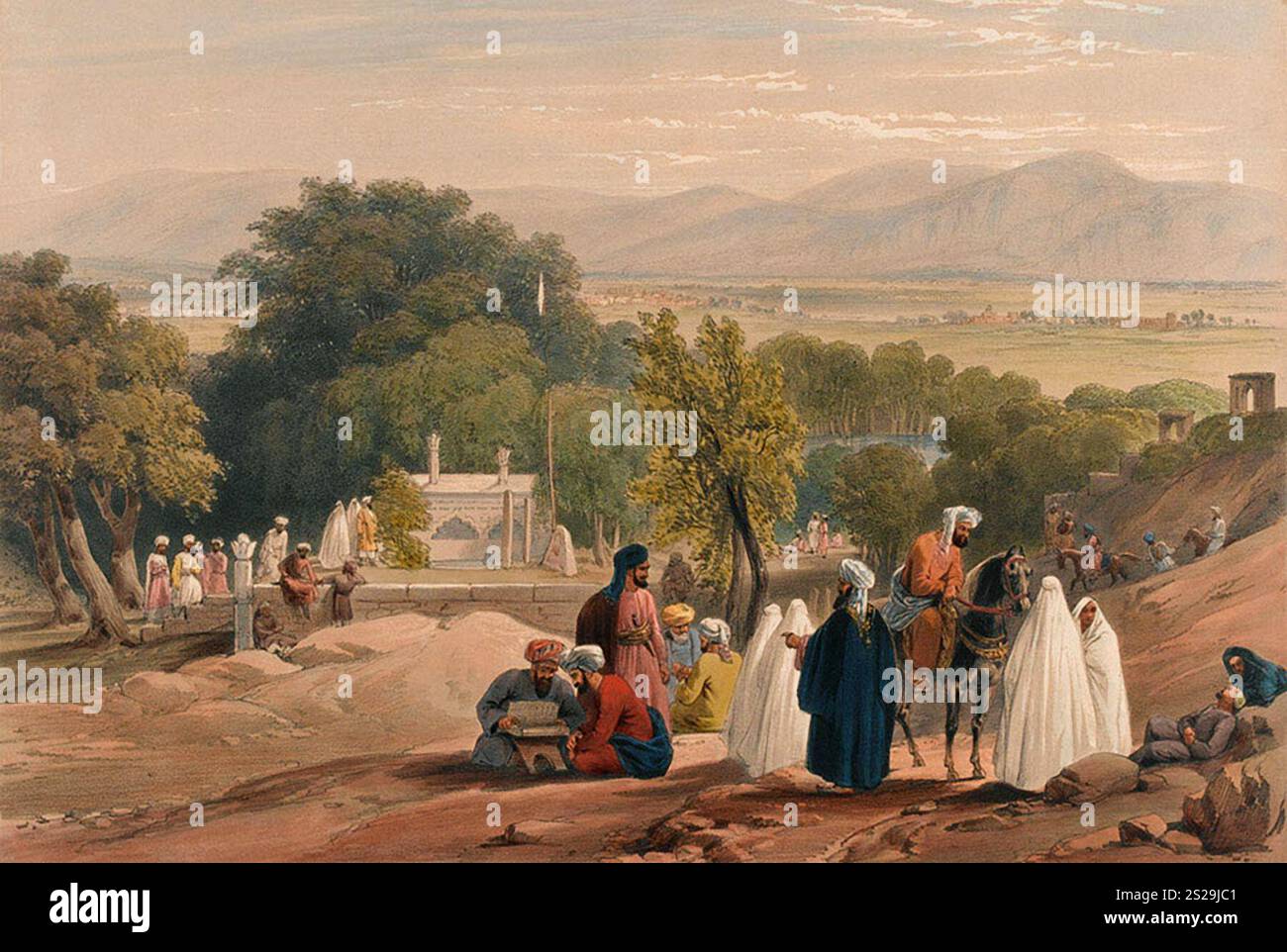 Zahiruddin Muhammad Babur, the first Mughal Emperor, wished to be interred in his favourite city of Kabul, but was first buried in a mausoleum in Agra. Around ten years later his body was transferred by Sher Shah Suri to a beautiful garden on the western slopes of the Sher-e-Darwaza mountain to the south of Kabul. Stock Photohttps://www.alamy.com/image-license-details/?v=1https://www.alamy.com/zahiruddin-muhammad-babur-the-first-mughal-emperor-wished-to-be-interred-in-his-favourite-city-of-kabul-but-was-first-buried-in-a-mausoleum-in-agra-around-ten-years-later-his-body-was-transferred-by-sher-shah-suri-to-a-beautiful-garden-on-the-western-slopes-of-the-sher-e-darwaza-mountain-to-the-south-of-kabul-image638224945.html
Zahiruddin Muhammad Babur, the first Mughal Emperor, wished to be interred in his favourite city of Kabul, but was first buried in a mausoleum in Agra. Around ten years later his body was transferred by Sher Shah Suri to a beautiful garden on the western slopes of the Sher-e-Darwaza mountain to the south of Kabul. Stock Photohttps://www.alamy.com/image-license-details/?v=1https://www.alamy.com/zahiruddin-muhammad-babur-the-first-mughal-emperor-wished-to-be-interred-in-his-favourite-city-of-kabul-but-was-first-buried-in-a-mausoleum-in-agra-around-ten-years-later-his-body-was-transferred-by-sher-shah-suri-to-a-beautiful-garden-on-the-western-slopes-of-the-sher-e-darwaza-mountain-to-the-south-of-kabul-image638224945.htmlRM2S29JC1–Zahiruddin Muhammad Babur, the first Mughal Emperor, wished to be interred in his favourite city of Kabul, but was first buried in a mausoleum in Agra. Around ten years later his body was transferred by Sher Shah Suri to a beautiful garden on the western slopes of the Sher-e-Darwaza mountain to the south of Kabul.
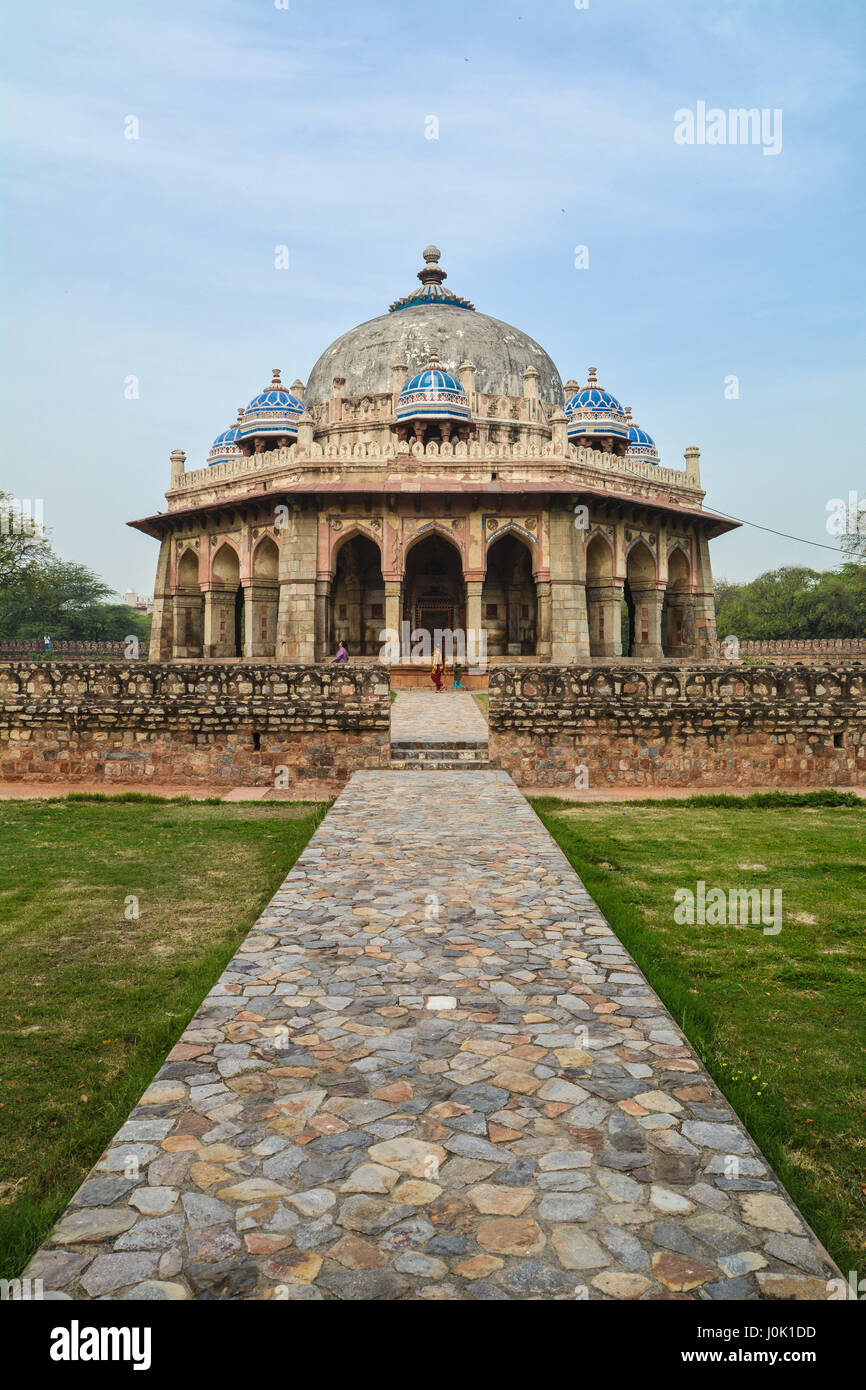 Isa Khan Niyazi's tomb Stock Photohttps://www.alamy.com/image-license-details/?v=1https://www.alamy.com/stock-photo-isa-khan-niyazis-tomb-138101193.html
Isa Khan Niyazi's tomb Stock Photohttps://www.alamy.com/image-license-details/?v=1https://www.alamy.com/stock-photo-isa-khan-niyazis-tomb-138101193.htmlRFJ0K1DD–Isa Khan Niyazi's tomb
 New Delhi, Delhi, India. Black Kite bird flying above Babur's Tomb near The Humayun's tomb. Famous place is Tomb of Mughal emperor, Mirza Nasir al-Din Stock Photohttps://www.alamy.com/image-license-details/?v=1https://www.alamy.com/new-delhi-delhi-india-black-kite-bird-flying-above-baburs-tomb-near-the-humayuns-tomb-famous-place-is-tomb-of-mughal-emperor-mirza-nasir-al-din-image618305954.html
New Delhi, Delhi, India. Black Kite bird flying above Babur's Tomb near The Humayun's tomb. Famous place is Tomb of Mughal emperor, Mirza Nasir al-Din Stock Photohttps://www.alamy.com/image-license-details/?v=1https://www.alamy.com/new-delhi-delhi-india-black-kite-bird-flying-above-baburs-tomb-near-the-humayuns-tomb-famous-place-is-tomb-of-mughal-emperor-mirza-nasir-al-din-image618305954.htmlRF2XWX7FE–New Delhi, Delhi, India. Black Kite bird flying above Babur's Tomb near The Humayun's tomb. Famous place is Tomb of Mughal emperor, Mirza Nasir al-Din
![Mausoleum Of Humayoon [Humayun] [Nasir-ud-Din Muḥammad (Persian: romanized: Nasīr-ad-Dīn Muhammad; 6 March 1508 – 27 January 1556), better known by his regnal name, Humayun (Persian: همایون, romanized: Humāyūn), was the second emperor of the Mughal Empire, who ruled over territory in what is now Afghanistan, Pakistan, Northern India, and Bangladesh from 1530 to 1540 and again from 1555 to 1556. Like his father, Babur, he lost his kingdom early but regained it with the aid of the Safavid dynasty of Persia, with additional territory. At the time of his death in 1556, the Mughal Empire spanned Stock Photo Mausoleum Of Humayoon [Humayun] [Nasir-ud-Din Muḥammad (Persian: romanized: Nasīr-ad-Dīn Muhammad; 6 March 1508 – 27 January 1556), better known by his regnal name, Humayun (Persian: همایون, romanized: Humāyūn), was the second emperor of the Mughal Empire, who ruled over territory in what is now Afghanistan, Pakistan, Northern India, and Bangladesh from 1530 to 1540 and again from 1555 to 1556. Like his father, Babur, he lost his kingdom early but regained it with the aid of the Safavid dynasty of Persia, with additional territory. At the time of his death in 1556, the Mughal Empire spanned Stock Photo](https://c8.alamy.com/comp/2H5AN2K/mausoleum-of-humayoon-humayun-nasir-ud-din-muammad-persian-romanized-nasr-ad-dn-muhammad-6-march-1508-27-january-1556-better-known-by-his-regnal-name-humayun-persian-romanized-humyn-was-the-second-emperor-of-the-mughal-empire-who-ruled-over-territory-in-what-is-now-afghanistan-pakistan-northern-india-and-bangladesh-from-1530-to-1540-and-again-from-1555-to-1556-like-his-father-babur-he-lost-his-kingdom-early-but-regained-it-with-the-aid-of-the-safavid-dynasty-of-persia-with-additional-territory-at-the-time-of-his-death-in-1556-the-mughal-empire-spanned-2H5AN2K.jpg) Mausoleum Of Humayoon [Humayun] [Nasir-ud-Din Muḥammad (Persian: romanized: Nasīr-ad-Dīn Muhammad; 6 March 1508 – 27 January 1556), better known by his regnal name, Humayun (Persian: همایون, romanized: Humāyūn), was the second emperor of the Mughal Empire, who ruled over territory in what is now Afghanistan, Pakistan, Northern India, and Bangladesh from 1530 to 1540 and again from 1555 to 1556. Like his father, Babur, he lost his kingdom early but regained it with the aid of the Safavid dynasty of Persia, with additional territory. At the time of his death in 1556, the Mughal Empire spanned Stock Photohttps://www.alamy.com/image-license-details/?v=1https://www.alamy.com/mausoleum-of-humayoon-humayun-nasir-ud-din-muammad-persian-romanized-nasr-ad-dn-muhammad-6-march-1508-27-january-1556-better-known-by-his-regnal-name-humayun-persian-romanized-humyn-was-the-second-emperor-of-the-mughal-empire-who-ruled-over-territory-in-what-is-now-afghanistan-pakistan-northern-india-and-bangladesh-from-1530-to-1540-and-again-from-1555-to-1556-like-his-father-babur-he-lost-his-kingdom-early-but-regained-it-with-the-aid-of-the-safavid-dynasty-of-persia-with-additional-territory-at-the-time-of-his-death-in-1556-the-mughal-empire-spanned-image450778907.html
Mausoleum Of Humayoon [Humayun] [Nasir-ud-Din Muḥammad (Persian: romanized: Nasīr-ad-Dīn Muhammad; 6 March 1508 – 27 January 1556), better known by his regnal name, Humayun (Persian: همایون, romanized: Humāyūn), was the second emperor of the Mughal Empire, who ruled over territory in what is now Afghanistan, Pakistan, Northern India, and Bangladesh from 1530 to 1540 and again from 1555 to 1556. Like his father, Babur, he lost his kingdom early but regained it with the aid of the Safavid dynasty of Persia, with additional territory. At the time of his death in 1556, the Mughal Empire spanned Stock Photohttps://www.alamy.com/image-license-details/?v=1https://www.alamy.com/mausoleum-of-humayoon-humayun-nasir-ud-din-muammad-persian-romanized-nasr-ad-dn-muhammad-6-march-1508-27-january-1556-better-known-by-his-regnal-name-humayun-persian-romanized-humyn-was-the-second-emperor-of-the-mughal-empire-who-ruled-over-territory-in-what-is-now-afghanistan-pakistan-northern-india-and-bangladesh-from-1530-to-1540-and-again-from-1555-to-1556-like-his-father-babur-he-lost-his-kingdom-early-but-regained-it-with-the-aid-of-the-safavid-dynasty-of-persia-with-additional-territory-at-the-time-of-his-death-in-1556-the-mughal-empire-spanned-image450778907.htmlRF2H5AN2K–Mausoleum Of Humayoon [Humayun] [Nasir-ud-Din Muḥammad (Persian: romanized: Nasīr-ad-Dīn Muhammad; 6 March 1508 – 27 January 1556), better known by his regnal name, Humayun (Persian: همایون, romanized: Humāyūn), was the second emperor of the Mughal Empire, who ruled over territory in what is now Afghanistan, Pakistan, Northern India, and Bangladesh from 1530 to 1540 and again from 1555 to 1556. Like his father, Babur, he lost his kingdom early but regained it with the aid of the Safavid dynasty of Persia, with additional territory. At the time of his death in 1556, the Mughal Empire spanned
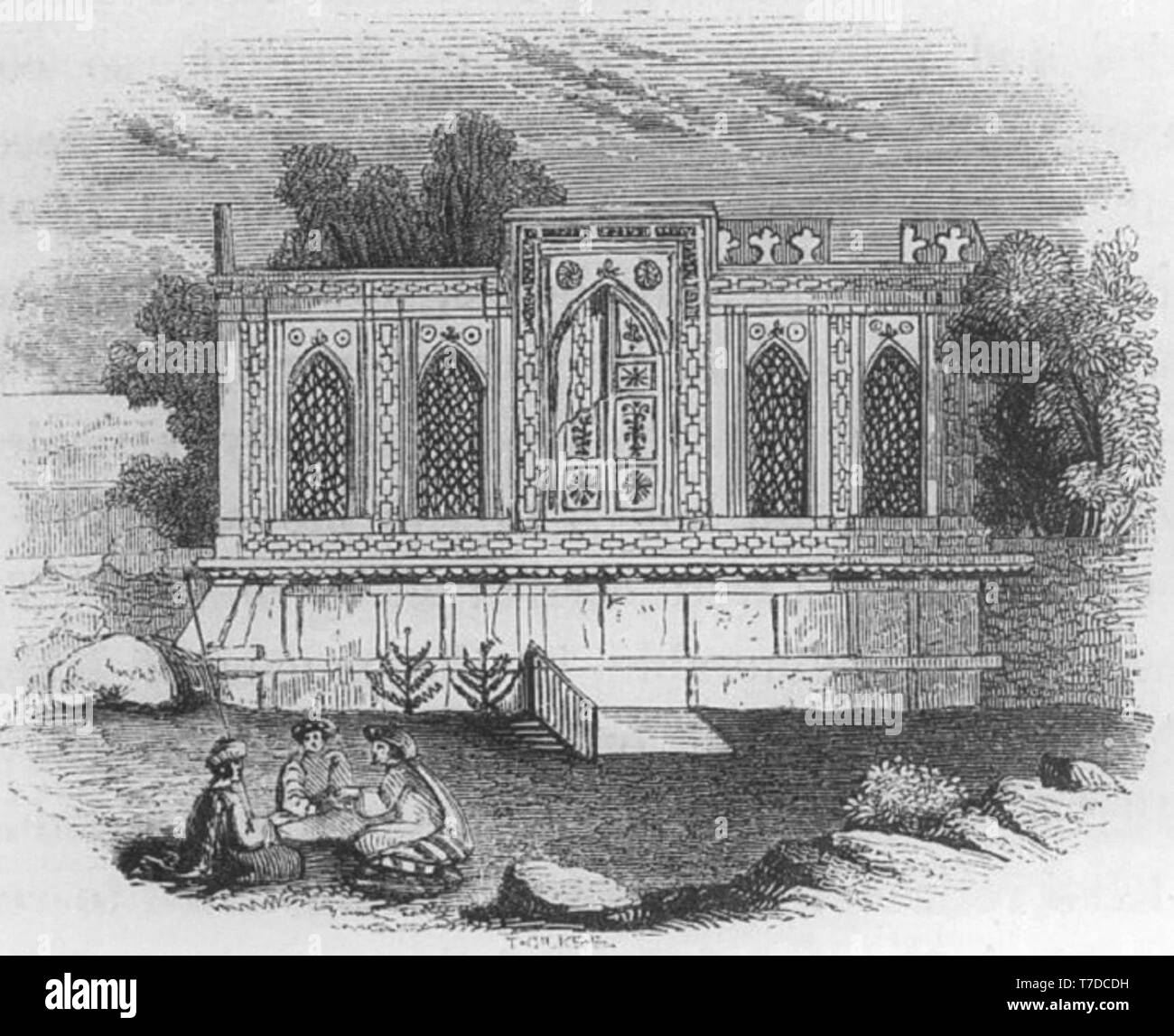 The tomb of the first Mughal Emperor Babur in Kabul Stock Photohttps://www.alamy.com/image-license-details/?v=1https://www.alamy.com/the-tomb-of-the-first-mughal-emperor-babur-in-kabul-image245542909.html
The tomb of the first Mughal Emperor Babur in Kabul Stock Photohttps://www.alamy.com/image-license-details/?v=1https://www.alamy.com/the-tomb-of-the-first-mughal-emperor-babur-in-kabul-image245542909.htmlRMT7DCDH–The tomb of the first Mughal Emperor Babur in Kabul
 Red sandstone arches of the inner courtyard of Agra Red Fort, Uttar Pradesh, India Stock Photohttps://www.alamy.com/image-license-details/?v=1https://www.alamy.com/red-sandstone-arches-of-the-inner-courtyard-of-agra-red-fort-uttar-image65903384.html
Red sandstone arches of the inner courtyard of Agra Red Fort, Uttar Pradesh, India Stock Photohttps://www.alamy.com/image-license-details/?v=1https://www.alamy.com/red-sandstone-arches-of-the-inner-courtyard-of-agra-red-fort-uttar-image65903384.htmlRFDR64C8–Red sandstone arches of the inner courtyard of Agra Red Fort, Uttar Pradesh, India
 Humayun s tomb Delhi India Stock Photohttps://www.alamy.com/image-license-details/?v=1https://www.alamy.com/humayun-s-tomb-delhi-india-image3537972.html
Humayun s tomb Delhi India Stock Photohttps://www.alamy.com/image-license-details/?v=1https://www.alamy.com/humayun-s-tomb-delhi-india-image3537972.htmlRFA3PM35–Humayun s tomb Delhi India
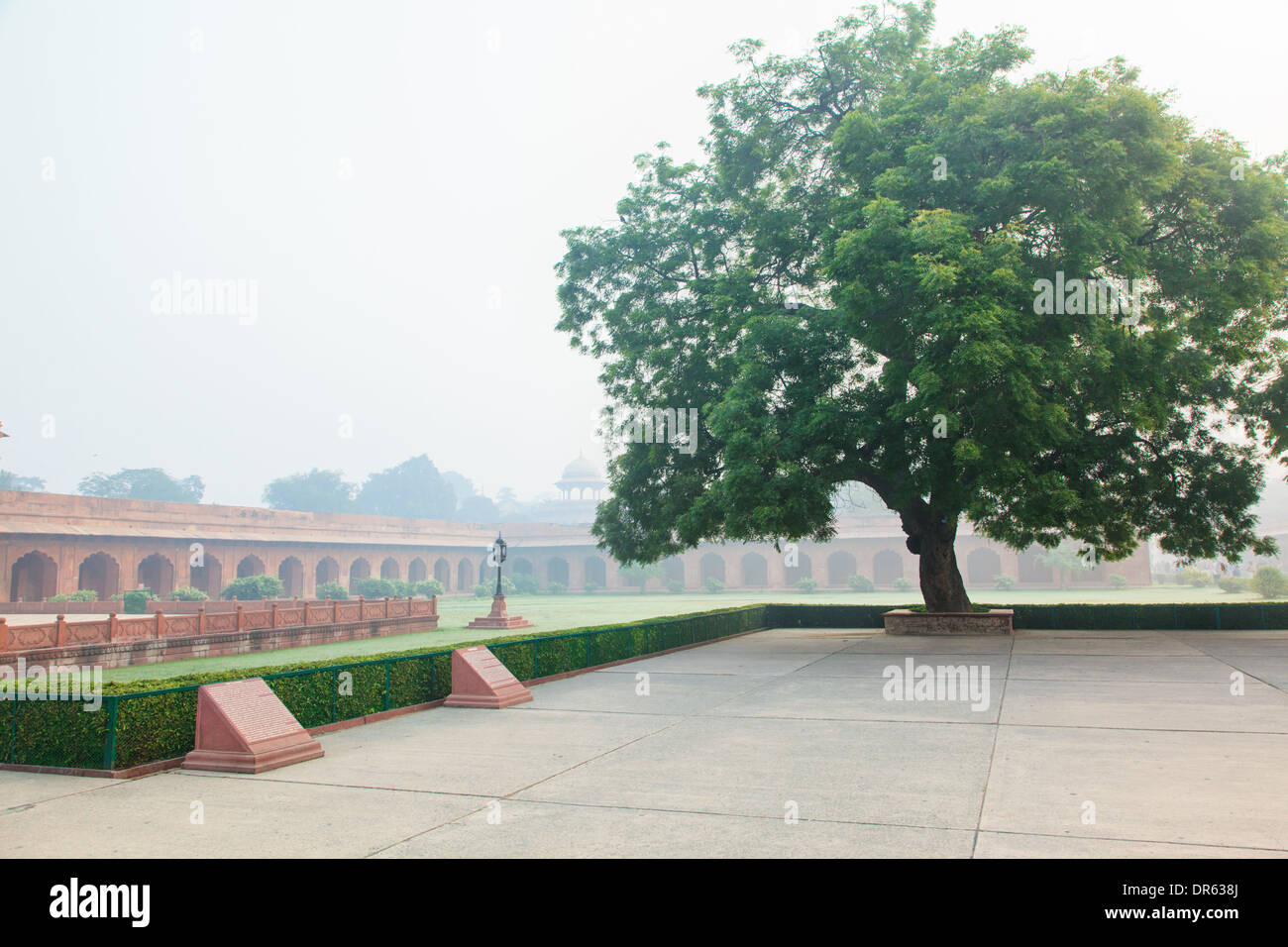 Formal garden (Charbagh or Mughal Garden) in front of Taj Mahal in Agra in morning mist Stock Photohttps://www.alamy.com/image-license-details/?v=1https://www.alamy.com/formal-garden-charbagh-or-mughal-garden-in-front-of-taj-mahal-in-agra-image65902498.html
Formal garden (Charbagh or Mughal Garden) in front of Taj Mahal in Agra in morning mist Stock Photohttps://www.alamy.com/image-license-details/?v=1https://www.alamy.com/formal-garden-charbagh-or-mughal-garden-in-front-of-taj-mahal-in-agra-image65902498.htmlRFDR638J–Formal garden (Charbagh or Mughal Garden) in front of Taj Mahal in Agra in morning mist
 DELHI, INDIA - SEPTEMBER 19, 2017: Humayun s Tomb, Delhi, India. UNESCO World Heritage Site, it is the tomb of the Mughal Emperor Humayun, fish eye effect Stock Photohttps://www.alamy.com/image-license-details/?v=1https://www.alamy.com/stock-image-delhi-india-september-19-2017-humayun-s-tomb-delhi-india-unesco-world-164640486.html
DELHI, INDIA - SEPTEMBER 19, 2017: Humayun s Tomb, Delhi, India. UNESCO World Heritage Site, it is the tomb of the Mughal Emperor Humayun, fish eye effect Stock Photohttps://www.alamy.com/image-license-details/?v=1https://www.alamy.com/stock-image-delhi-india-september-19-2017-humayun-s-tomb-delhi-india-unesco-world-164640486.htmlRFKFT0HA–DELHI, INDIA - SEPTEMBER 19, 2017: Humayun s Tomb, Delhi, India. UNESCO World Heritage Site, it is the tomb of the Mughal Emperor Humayun, fish eye effect
 Marble pavilion in the grounds of Babur's garden where his tomb lies in Kabul. Photographed in August 2000. Stock Photohttps://www.alamy.com/image-license-details/?v=1https://www.alamy.com/stock-photo-marble-pavilion-in-the-grounds-of-baburs-garden-where-his-tomb-lies-15292383.html
Marble pavilion in the grounds of Babur's garden where his tomb lies in Kabul. Photographed in August 2000. Stock Photohttps://www.alamy.com/image-license-details/?v=1https://www.alamy.com/stock-photo-marble-pavilion-in-the-grounds-of-baburs-garden-where-his-tomb-lies-15292383.htmlRMAMM3MG–Marble pavilion in the grounds of Babur's garden where his tomb lies in Kabul. Photographed in August 2000.
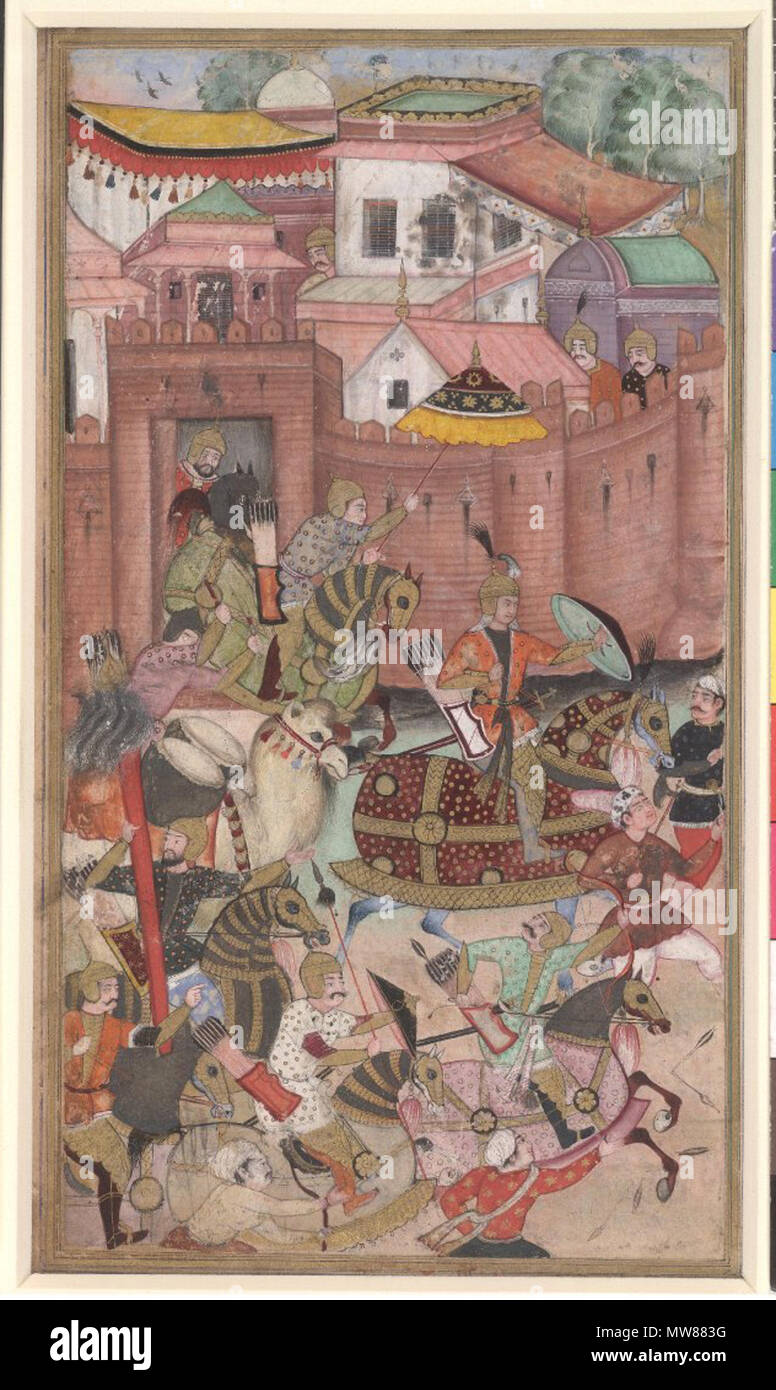 . English: Painting, detached from album. Babur and his army emerge from the Khwaja Didar Fort, from a Baburnama manuscript. Babur is shown riding a fully armoured horse, emerging with his cavalry from the Khwaja Didar fort, where he wintered in 1497. A drummer rides a camel behind him and another soldier leans forward to hold a parasol over Babur's head. The broken arrows in the left foreground indicate that the battle with Shaybani Khan the Uzbek has already begun. The fort is ringed with red brick walls and crenellated battlements. Inside a tomb with a vaulted roof, various buildings, pavil Stock Photohttps://www.alamy.com/image-license-details/?v=1https://www.alamy.com/english-painting-detached-from-album-babur-and-his-army-emerge-from-the-khwaja-didar-fort-from-a-baburnama-manuscript-babur-is-shown-riding-a-fully-armoured-horse-emerging-with-his-cavalry-from-the-khwaja-didar-fort-where-he-wintered-in-1497-a-drummer-rides-a-camel-behind-him-and-another-soldier-leans-forward-to-hold-a-parasol-over-baburs-head-the-broken-arrows-in-the-left-foreground-indicate-that-the-battle-with-shaybani-khan-the-uzbek-has-already-begun-the-fort-is-ringed-with-red-brick-walls-and-crenellated-battlements-inside-a-tomb-with-a-vaulted-roof-various-buildings-pavil-image187652068.html
. English: Painting, detached from album. Babur and his army emerge from the Khwaja Didar Fort, from a Baburnama manuscript. Babur is shown riding a fully armoured horse, emerging with his cavalry from the Khwaja Didar fort, where he wintered in 1497. A drummer rides a camel behind him and another soldier leans forward to hold a parasol over Babur's head. The broken arrows in the left foreground indicate that the battle with Shaybani Khan the Uzbek has already begun. The fort is ringed with red brick walls and crenellated battlements. Inside a tomb with a vaulted roof, various buildings, pavil Stock Photohttps://www.alamy.com/image-license-details/?v=1https://www.alamy.com/english-painting-detached-from-album-babur-and-his-army-emerge-from-the-khwaja-didar-fort-from-a-baburnama-manuscript-babur-is-shown-riding-a-fully-armoured-horse-emerging-with-his-cavalry-from-the-khwaja-didar-fort-where-he-wintered-in-1497-a-drummer-rides-a-camel-behind-him-and-another-soldier-leans-forward-to-hold-a-parasol-over-baburs-head-the-broken-arrows-in-the-left-foreground-indicate-that-the-battle-with-shaybani-khan-the-uzbek-has-already-begun-the-fort-is-ringed-with-red-brick-walls-and-crenellated-battlements-inside-a-tomb-with-a-vaulted-roof-various-buildings-pavil-image187652068.htmlRMMW883G–. English: Painting, detached from album. Babur and his army emerge from the Khwaja Didar Fort, from a Baburnama manuscript. Babur is shown riding a fully armoured horse, emerging with his cavalry from the Khwaja Didar fort, where he wintered in 1497. A drummer rides a camel behind him and another soldier leans forward to hold a parasol over Babur's head. The broken arrows in the left foreground indicate that the battle with Shaybani Khan the Uzbek has already begun. The fort is ringed with red brick walls and crenellated battlements. Inside a tomb with a vaulted roof, various buildings, pavil
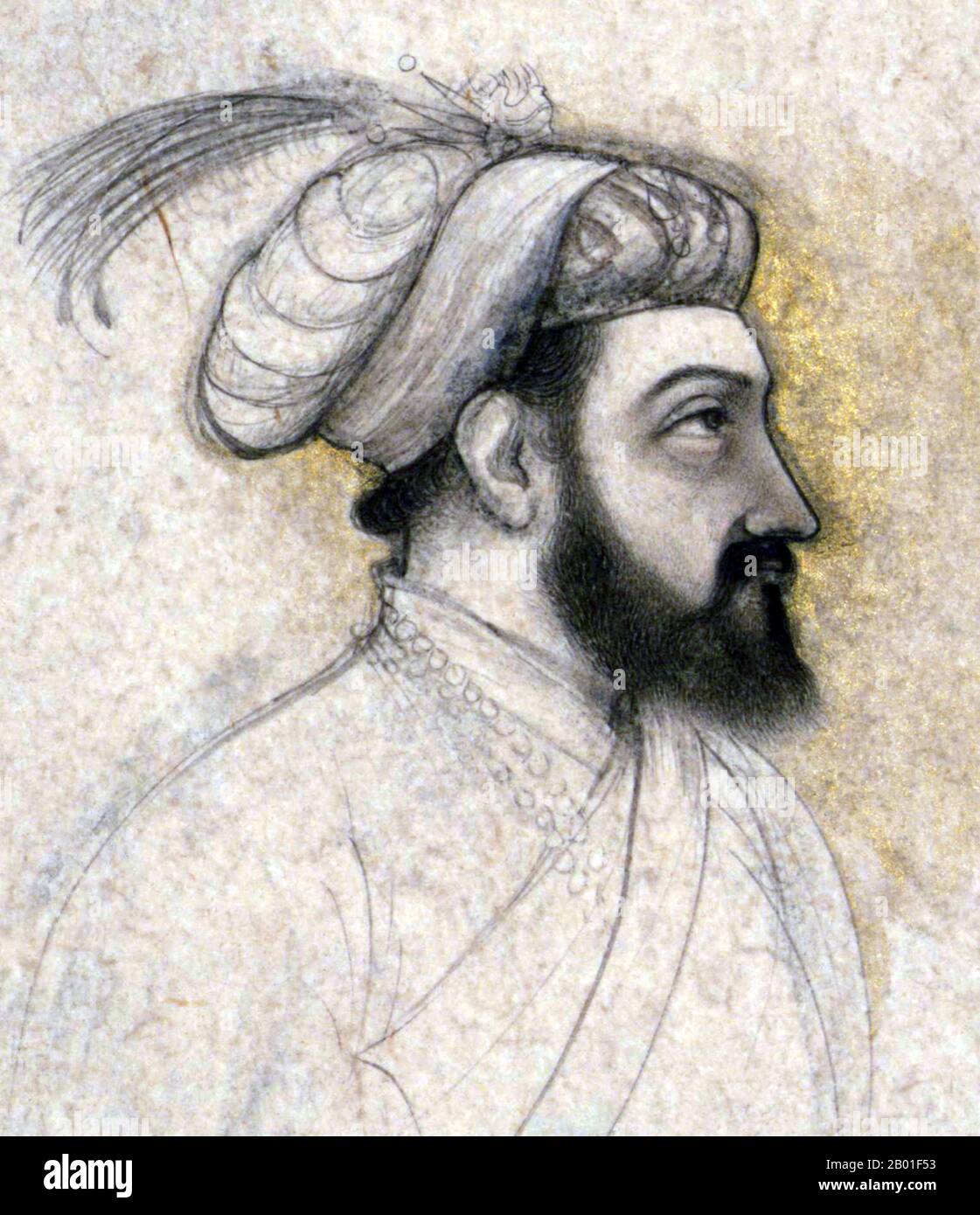 India: Portrait of Mughal Emperor Shah Jahan (5 January 1592 - 22 January 1666) by an unknown Indian artist, mid-17th century. Shah Jahan was the emperor of the Mughal Empire in the Indian Subcontinent from 1628 until 1658. The name Shah Jahan comes from Persian meaning 'King of the World'. He was the fifth Mughal emperor after Babur, Humayun, Akbar and Jahangir. The period of his reign was the golden age of Mughal architecture. Shahanshah Shah Jahan erected many splendid monuments, the most famous of which is the legendary Taj Mahal at Agra built as a tomb for his wife, Empress Mumtaz Mahal Stock Photohttps://www.alamy.com/image-license-details/?v=1https://www.alamy.com/india-portrait-of-mughal-emperor-shah-jahan-5-january-1592-22-january-1666-by-an-unknown-indian-artist-mid-17th-century-shah-jahan-was-the-emperor-of-the-mughal-empire-in-the-indian-subcontinent-from-1628-until-1658-the-name-shah-jahan-comes-from-persian-meaning-king-of-the-world-he-was-the-fifth-mughal-emperor-after-babur-humayun-akbar-and-jahangir-the-period-of-his-reign-was-the-golden-age-of-mughal-architecture-shahanshah-shah-jahan-erected-many-splendid-monuments-the-most-famous-of-which-is-the-legendary-taj-mahal-at-agra-built-as-a-tomb-for-his-wife-empress-mumtaz-mahal-image344241215.html
India: Portrait of Mughal Emperor Shah Jahan (5 January 1592 - 22 January 1666) by an unknown Indian artist, mid-17th century. Shah Jahan was the emperor of the Mughal Empire in the Indian Subcontinent from 1628 until 1658. The name Shah Jahan comes from Persian meaning 'King of the World'. He was the fifth Mughal emperor after Babur, Humayun, Akbar and Jahangir. The period of his reign was the golden age of Mughal architecture. Shahanshah Shah Jahan erected many splendid monuments, the most famous of which is the legendary Taj Mahal at Agra built as a tomb for his wife, Empress Mumtaz Mahal Stock Photohttps://www.alamy.com/image-license-details/?v=1https://www.alamy.com/india-portrait-of-mughal-emperor-shah-jahan-5-january-1592-22-january-1666-by-an-unknown-indian-artist-mid-17th-century-shah-jahan-was-the-emperor-of-the-mughal-empire-in-the-indian-subcontinent-from-1628-until-1658-the-name-shah-jahan-comes-from-persian-meaning-king-of-the-world-he-was-the-fifth-mughal-emperor-after-babur-humayun-akbar-and-jahangir-the-period-of-his-reign-was-the-golden-age-of-mughal-architecture-shahanshah-shah-jahan-erected-many-splendid-monuments-the-most-famous-of-which-is-the-legendary-taj-mahal-at-agra-built-as-a-tomb-for-his-wife-empress-mumtaz-mahal-image344241215.htmlRM2B01F53–India: Portrait of Mughal Emperor Shah Jahan (5 January 1592 - 22 January 1666) by an unknown Indian artist, mid-17th century. Shah Jahan was the emperor of the Mughal Empire in the Indian Subcontinent from 1628 until 1658. The name Shah Jahan comes from Persian meaning 'King of the World'. He was the fifth Mughal emperor after Babur, Humayun, Akbar and Jahangir. The period of his reign was the golden age of Mughal architecture. Shahanshah Shah Jahan erected many splendid monuments, the most famous of which is the legendary Taj Mahal at Agra built as a tomb for his wife, Empress Mumtaz Mahal
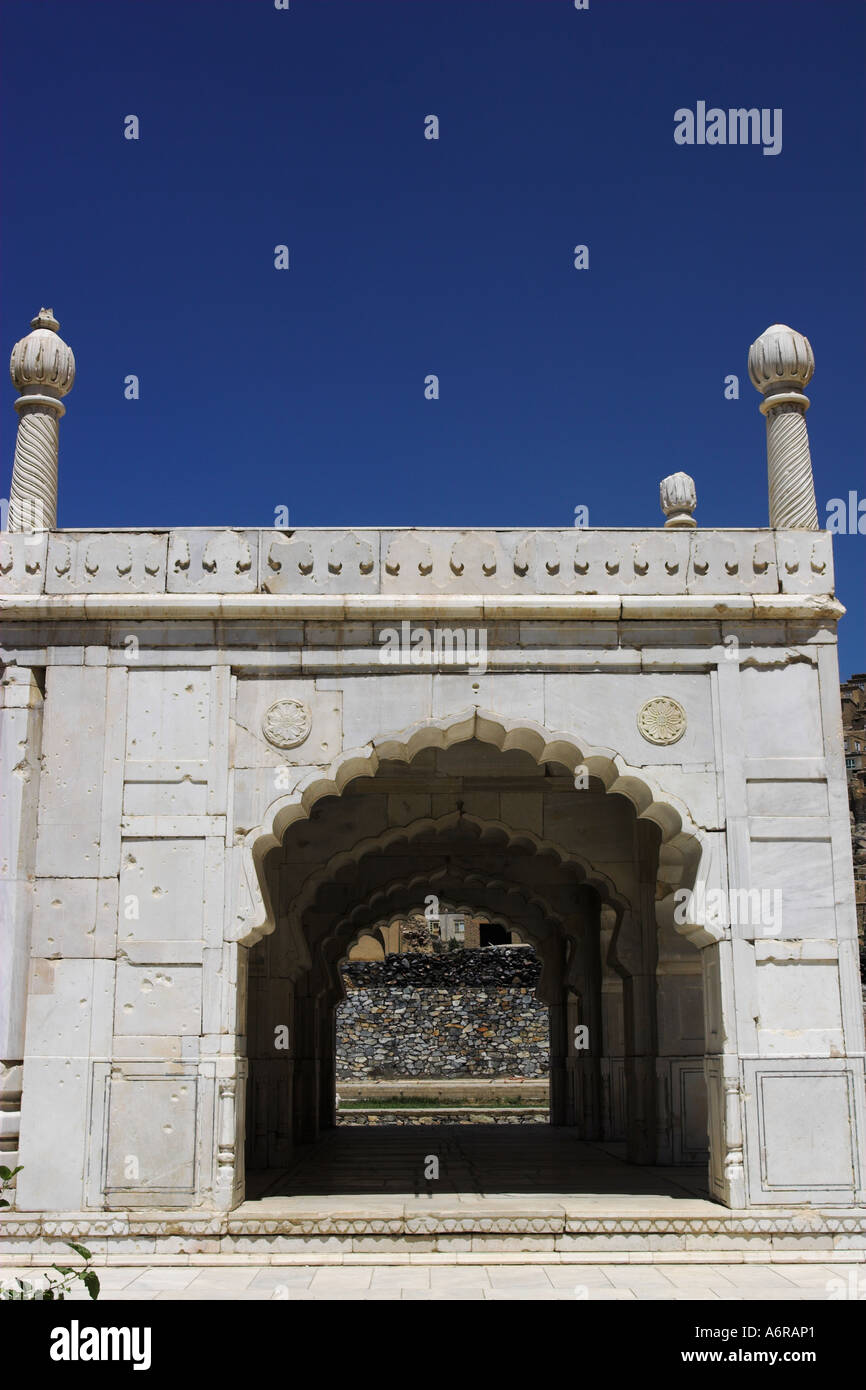 AFGHANISTAN Kabul Gardens of Babur white marble Mosque built by Shah Jahan Stock Photohttps://www.alamy.com/image-license-details/?v=1https://www.alamy.com/afghanistan-kabul-gardens-of-babur-white-marble-mosque-built-by-shah-image6648544.html
AFGHANISTAN Kabul Gardens of Babur white marble Mosque built by Shah Jahan Stock Photohttps://www.alamy.com/image-license-details/?v=1https://www.alamy.com/afghanistan-kabul-gardens-of-babur-white-marble-mosque-built-by-shah-image6648544.htmlRMA6RAP1–AFGHANISTAN Kabul Gardens of Babur white marble Mosque built by Shah Jahan
 Minaret Red Fort, ,Taj Mahal, UNESCO World Heritage Site, Agra,Uttar Pradesh, India, Asia Stock Photohttps://www.alamy.com/image-license-details/?v=1https://www.alamy.com/stock-photo-minaret-red-fort-taj-mahal-unesco-world-heritage-site-agrauttar-pradesh-97736693.html
Minaret Red Fort, ,Taj Mahal, UNESCO World Heritage Site, Agra,Uttar Pradesh, India, Asia Stock Photohttps://www.alamy.com/image-license-details/?v=1https://www.alamy.com/stock-photo-minaret-red-fort-taj-mahal-unesco-world-heritage-site-agrauttar-pradesh-97736693.htmlRFFK0845–Minaret Red Fort, ,Taj Mahal, UNESCO World Heritage Site, Agra,Uttar Pradesh, India, Asia
 First Anglo-Afghan War 1838-1842: Tomb of Emperor Babur (d1530). From J Atkinson 'Sketches in Afghanistan' London 1842. Hand-coloured lithograph. Stock Photohttps://www.alamy.com/image-license-details/?v=1https://www.alamy.com/stock-photo-first-anglo-afghan-war-1838-1842-tomb-of-emperor-babur-d1530-from-57289595.html
First Anglo-Afghan War 1838-1842: Tomb of Emperor Babur (d1530). From J Atkinson 'Sketches in Afghanistan' London 1842. Hand-coloured lithograph. Stock Photohttps://www.alamy.com/image-license-details/?v=1https://www.alamy.com/stock-photo-first-anglo-afghan-war-1838-1842-tomb-of-emperor-babur-d1530-from-57289595.htmlRMD95NCY–First Anglo-Afghan War 1838-1842: Tomb of Emperor Babur (d1530). From J Atkinson 'Sketches in Afghanistan' London 1842. Hand-coloured lithograph.
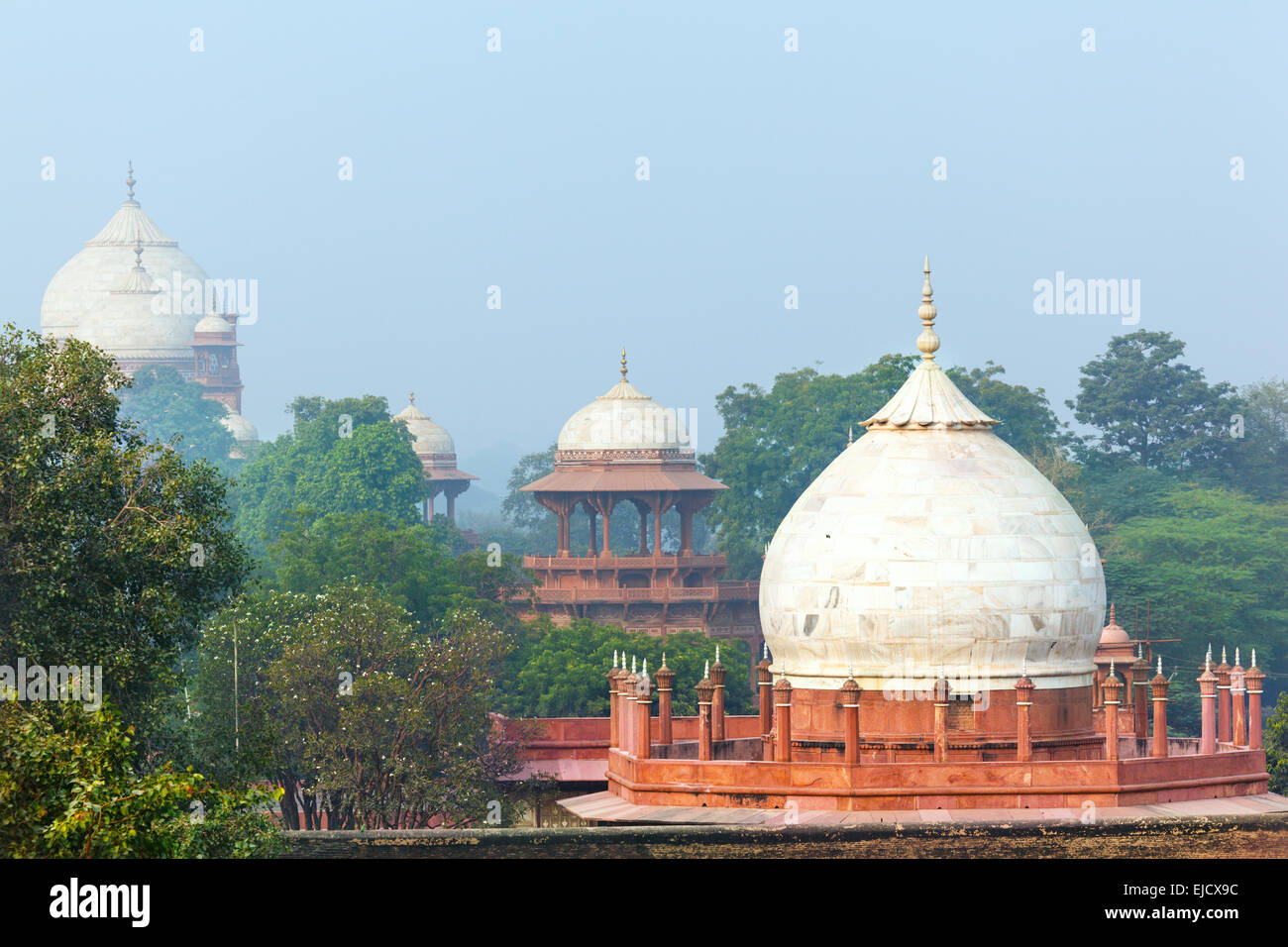 Mughal Garden in front of Taj Mahal Stock Photohttps://www.alamy.com/image-license-details/?v=1https://www.alamy.com/stock-photo-mughal-garden-in-front-of-taj-mahal-80189352.html
Mughal Garden in front of Taj Mahal Stock Photohttps://www.alamy.com/image-license-details/?v=1https://www.alamy.com/stock-photo-mughal-garden-in-front-of-taj-mahal-80189352.htmlRFEJCX9C–Mughal Garden in front of Taj Mahal
 humanyun tomb Stock Photohttps://www.alamy.com/image-license-details/?v=1https://www.alamy.com/stock-photo-humanyun-tomb-118075142.html
humanyun tomb Stock Photohttps://www.alamy.com/image-license-details/?v=1https://www.alamy.com/stock-photo-humanyun-tomb-118075142.htmlRFGT2P1A–humanyun tomb
 an eye of a horse Stock Photohttps://www.alamy.com/image-license-details/?v=1https://www.alamy.com/stock-photo-an-eye-of-a-horse-90438600.html
an eye of a horse Stock Photohttps://www.alamy.com/image-license-details/?v=1https://www.alamy.com/stock-photo-an-eye-of-a-horse-90438600.htmlRMF73RA0–an eye of a horse
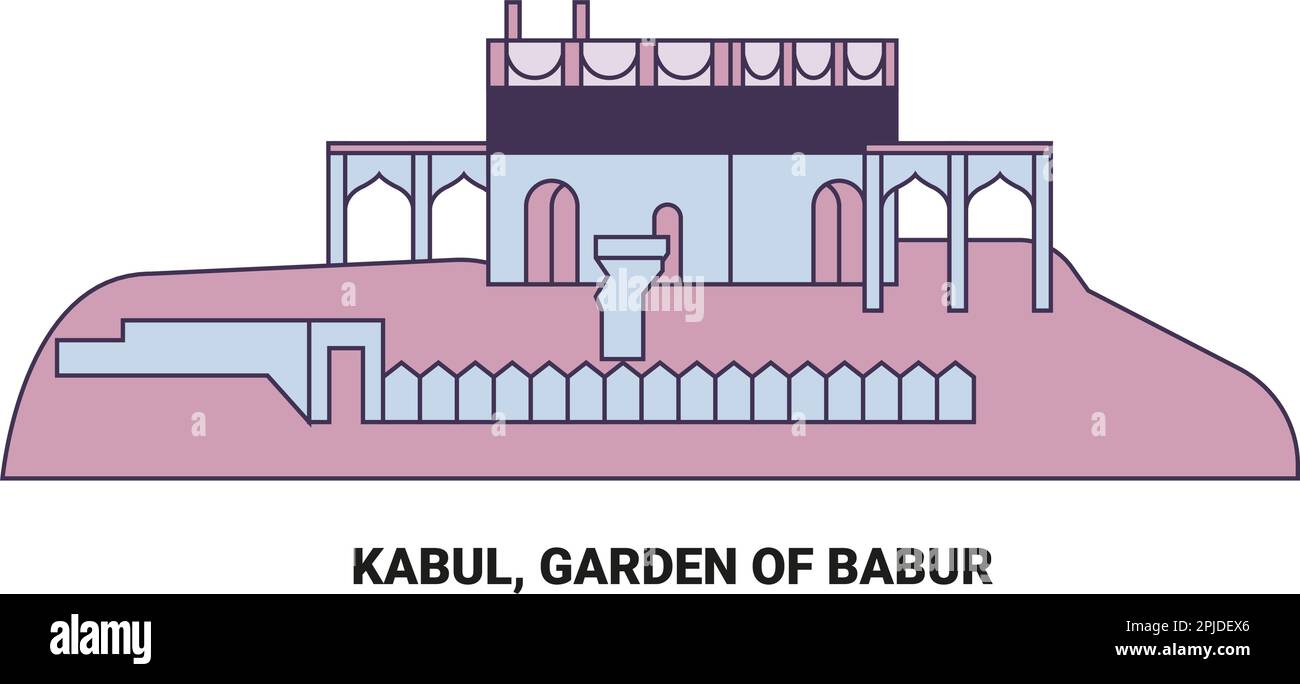 Afghanistan, Kabul, Garden Of Babur, travel landmark vector illustration Stock Vectorhttps://www.alamy.com/image-license-details/?v=1https://www.alamy.com/afghanistan-kabul-garden-of-babur-travel-landmark-vector-illustration-image544882302.html
Afghanistan, Kabul, Garden Of Babur, travel landmark vector illustration Stock Vectorhttps://www.alamy.com/image-license-details/?v=1https://www.alamy.com/afghanistan-kabul-garden-of-babur-travel-landmark-vector-illustration-image544882302.htmlRF2PJDEX6–Afghanistan, Kabul, Garden Of Babur, travel landmark vector illustration
 Zahiruddin Muhammad Babur, the first Mughal Emperor, wished to be interred in his favourite city of Kabul, but was first buried in a mausoleum in Agra. Around ten years later his body was transferred by Sher Shah Suri to a beautiful garden on the western slopes of the Sher-e-Darwaza mountain to the south of Kabul. Stock Photohttps://www.alamy.com/image-license-details/?v=1https://www.alamy.com/zahiruddin-muhammad-babur-the-first-mughal-emperor-wished-to-be-interred-in-his-favourite-city-of-kabul-but-was-first-buried-in-a-mausoleum-in-agra-around-ten-years-later-his-body-was-transferred-by-sher-shah-suri-to-a-beautiful-garden-on-the-western-slopes-of-the-sher-e-darwaza-mountain-to-the-south-of-kabul-image638224947.html
Zahiruddin Muhammad Babur, the first Mughal Emperor, wished to be interred in his favourite city of Kabul, but was first buried in a mausoleum in Agra. Around ten years later his body was transferred by Sher Shah Suri to a beautiful garden on the western slopes of the Sher-e-Darwaza mountain to the south of Kabul. Stock Photohttps://www.alamy.com/image-license-details/?v=1https://www.alamy.com/zahiruddin-muhammad-babur-the-first-mughal-emperor-wished-to-be-interred-in-his-favourite-city-of-kabul-but-was-first-buried-in-a-mausoleum-in-agra-around-ten-years-later-his-body-was-transferred-by-sher-shah-suri-to-a-beautiful-garden-on-the-western-slopes-of-the-sher-e-darwaza-mountain-to-the-south-of-kabul-image638224947.htmlRM2S29JC3–Zahiruddin Muhammad Babur, the first Mughal Emperor, wished to be interred in his favourite city of Kabul, but was first buried in a mausoleum in Agra. Around ten years later his body was transferred by Sher Shah Suri to a beautiful garden on the western slopes of the Sher-e-Darwaza mountain to the south of Kabul.
 Isa Khan Niyazi's tomb Stock Photohttps://www.alamy.com/image-license-details/?v=1https://www.alamy.com/stock-photo-isa-khan-niyazis-tomb-138101195.html
Isa Khan Niyazi's tomb Stock Photohttps://www.alamy.com/image-license-details/?v=1https://www.alamy.com/stock-photo-isa-khan-niyazis-tomb-138101195.htmlRFJ0K1DF–Isa Khan Niyazi's tomb
 New Delhi, Delhi, India. Doves birds sitting on Babur's Tomb near The Humayun's tomb. Famous place is Tomb of Mughal emperor, Mirza Nasir al-Din Stock Photohttps://www.alamy.com/image-license-details/?v=1https://www.alamy.com/new-delhi-delhi-india-doves-birds-sitting-on-baburs-tomb-near-the-humayuns-tomb-famous-place-is-tomb-of-mughal-emperor-mirza-nasir-al-din-image619067281.html
New Delhi, Delhi, India. Doves birds sitting on Babur's Tomb near The Humayun's tomb. Famous place is Tomb of Mughal emperor, Mirza Nasir al-Din Stock Photohttps://www.alamy.com/image-license-details/?v=1https://www.alamy.com/new-delhi-delhi-india-doves-birds-sitting-on-baburs-tomb-near-the-humayuns-tomb-famous-place-is-tomb-of-mughal-emperor-mirza-nasir-al-din-image619067281.htmlRF2XY4XHN–New Delhi, Delhi, India. Doves birds sitting on Babur's Tomb near The Humayun's tomb. Famous place is Tomb of Mughal emperor, Mirza Nasir al-Din
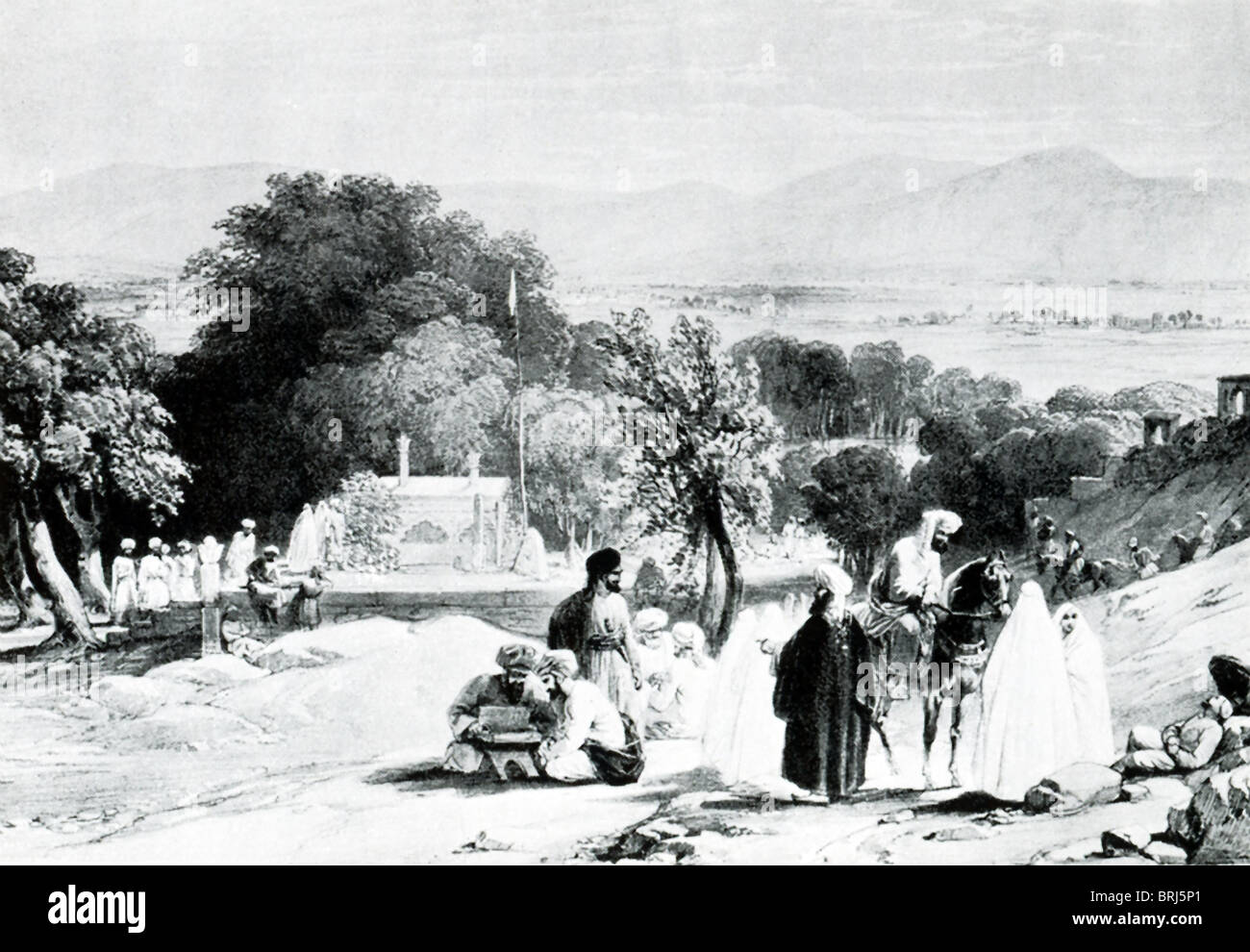 Babur (1480-1530), whose grave pictured here, was the founder of the Mughal (also spelled Mogul) Empire in India. Stock Photohttps://www.alamy.com/image-license-details/?v=1https://www.alamy.com/stock-photo-babur-1480-1530-whose-grave-pictured-here-was-the-founder-of-the-mughal-31747129.html
Babur (1480-1530), whose grave pictured here, was the founder of the Mughal (also spelled Mogul) Empire in India. Stock Photohttps://www.alamy.com/image-license-details/?v=1https://www.alamy.com/stock-photo-babur-1480-1530-whose-grave-pictured-here-was-the-founder-of-the-mughal-31747129.htmlRFBRJ5P1–Babur (1480-1530), whose grave pictured here, was the founder of the Mughal (also spelled Mogul) Empire in India.
 Tomb of Emperor Babur, Kabul, First Anglo-Afghan War 1838-1842. Artist: James Atkinson Stock Photohttps://www.alamy.com/image-license-details/?v=1https://www.alamy.com/tomb-of-emperor-babur-kabul-first-anglo-afghan-war-1838-1842-artist-james-atkinson-image262740099.html
Tomb of Emperor Babur, Kabul, First Anglo-Afghan War 1838-1842. Artist: James Atkinson Stock Photohttps://www.alamy.com/image-license-details/?v=1https://www.alamy.com/tomb-of-emperor-babur-kabul-first-anglo-afghan-war-1838-1842-artist-james-atkinson-image262740099.htmlRMW7CRJY–Tomb of Emperor Babur, Kabul, First Anglo-Afghan War 1838-1842. Artist: James Atkinson
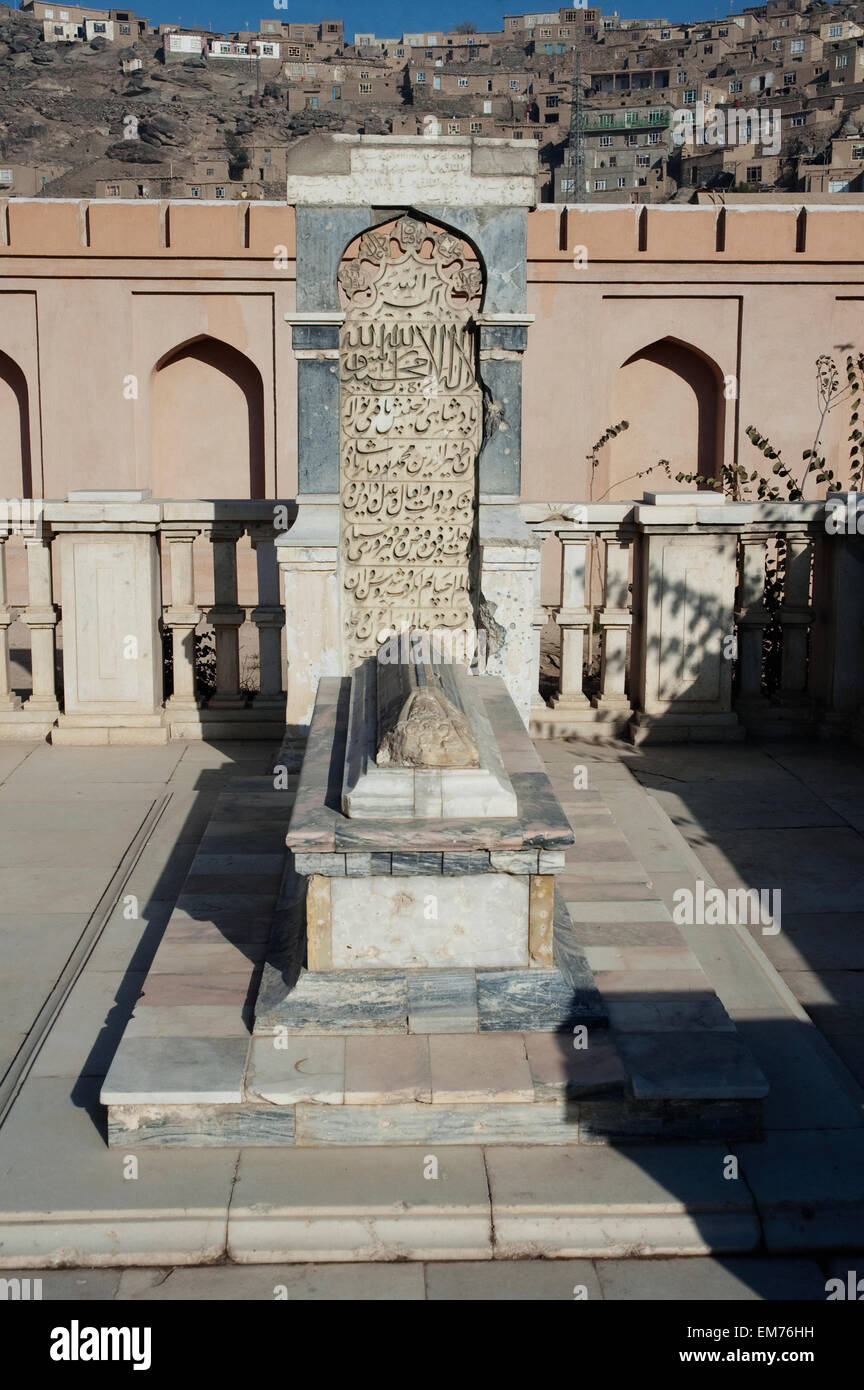 Afghanistan,Asia,Central Asia,Afghan Stock Photohttps://www.alamy.com/image-license-details/?v=1https://www.alamy.com/stock-photo-afghanistanasiacentral-asiaafghan-81293453.html
Afghanistan,Asia,Central Asia,Afghan Stock Photohttps://www.alamy.com/image-license-details/?v=1https://www.alamy.com/stock-photo-afghanistanasiacentral-asiaafghan-81293453.htmlRMEM76HH–Afghanistan,Asia,Central Asia,Afghan
 Humayun s tomb Delhi India Stock Photohttps://www.alamy.com/image-license-details/?v=1https://www.alamy.com/humayun-s-tomb-delhi-india-image3537903.html
Humayun s tomb Delhi India Stock Photohttps://www.alamy.com/image-license-details/?v=1https://www.alamy.com/humayun-s-tomb-delhi-india-image3537903.htmlRFA3PKF0–Humayun s tomb Delhi India
 Arched walkway through dividing wall of Mughal gardens on the way to Taj-Mahal Stock Photohttps://www.alamy.com/image-license-details/?v=1https://www.alamy.com/arched-walkway-through-dividing-wall-of-mughal-gardens-on-the-way-image65902500.html
Arched walkway through dividing wall of Mughal gardens on the way to Taj-Mahal Stock Photohttps://www.alamy.com/image-license-details/?v=1https://www.alamy.com/arched-walkway-through-dividing-wall-of-mughal-gardens-on-the-way-image65902500.htmlRFDR638M–Arched walkway through dividing wall of Mughal gardens on the way to Taj-Mahal
 DELHI, INDIA - SEPTEMBER 19, 2017: Humayun s Tomb, Delhi, India. UNESCO World Heritage Site, it is the tomb of the Mughal Emperor Humayun, fish eye effect Stock Photohttps://www.alamy.com/image-license-details/?v=1https://www.alamy.com/stock-image-delhi-india-september-19-2017-humayun-s-tomb-delhi-india-unesco-world-164640484.html
DELHI, INDIA - SEPTEMBER 19, 2017: Humayun s Tomb, Delhi, India. UNESCO World Heritage Site, it is the tomb of the Mughal Emperor Humayun, fish eye effect Stock Photohttps://www.alamy.com/image-license-details/?v=1https://www.alamy.com/stock-image-delhi-india-september-19-2017-humayun-s-tomb-delhi-india-unesco-world-164640484.htmlRFKFT0H8–DELHI, INDIA - SEPTEMBER 19, 2017: Humayun s Tomb, Delhi, India. UNESCO World Heritage Site, it is the tomb of the Mughal Emperor Humayun, fish eye effect
 The engineer at the marble pavilion in the grounds of Babur's garden, on the slopes of a hill called Sher-Darwaza, Kabul. Stock Photohttps://www.alamy.com/image-license-details/?v=1https://www.alamy.com/stock-photo-the-engineer-at-the-marble-pavilion-in-the-grounds-of-baburs-garden-15292379.html
The engineer at the marble pavilion in the grounds of Babur's garden, on the slopes of a hill called Sher-Darwaza, Kabul. Stock Photohttps://www.alamy.com/image-license-details/?v=1https://www.alamy.com/stock-photo-the-engineer-at-the-marble-pavilion-in-the-grounds-of-baburs-garden-15292379.htmlRMAMM3KT–The engineer at the marble pavilion in the grounds of Babur's garden, on the slopes of a hill called Sher-Darwaza, Kabul.
 . English: Painting, detached from album. Babur and his army emerge from the Khwaja Didar Fort, from a Baburnama manuscript. Babur is shown riding a fully armoured horse, emerging with his cavalry from the Khwaja Didar fort, where he wintered in 1497. A drummer rides a camel behind him and another soldier leans forward to hold a parasol over Babur's head. The broken arrows in the left foreground indicate that the battle with Shaybani Khan the Uzbek has already begun. The fort is ringed with red brick walls and crenellated battlements. Inside a tomb with a vaulted roof, various buildings, pavil Stock Photohttps://www.alamy.com/image-license-details/?v=1https://www.alamy.com/english-painting-detached-from-album-babur-and-his-army-emerge-from-the-khwaja-didar-fort-from-a-baburnama-manuscript-babur-is-shown-riding-a-fully-armoured-horse-emerging-with-his-cavalry-from-the-khwaja-didar-fort-where-he-wintered-in-1497-a-drummer-rides-a-camel-behind-him-and-another-soldier-leans-forward-to-hold-a-parasol-over-baburs-head-the-broken-arrows-in-the-left-foreground-indicate-that-the-battle-with-shaybani-khan-the-uzbek-has-already-begun-the-fort-is-ringed-with-red-brick-walls-and-crenellated-battlements-inside-a-tomb-with-a-vaulted-roof-various-buildings-pavil-image184857647.html
. English: Painting, detached from album. Babur and his army emerge from the Khwaja Didar Fort, from a Baburnama manuscript. Babur is shown riding a fully armoured horse, emerging with his cavalry from the Khwaja Didar fort, where he wintered in 1497. A drummer rides a camel behind him and another soldier leans forward to hold a parasol over Babur's head. The broken arrows in the left foreground indicate that the battle with Shaybani Khan the Uzbek has already begun. The fort is ringed with red brick walls and crenellated battlements. Inside a tomb with a vaulted roof, various buildings, pavil Stock Photohttps://www.alamy.com/image-license-details/?v=1https://www.alamy.com/english-painting-detached-from-album-babur-and-his-army-emerge-from-the-khwaja-didar-fort-from-a-baburnama-manuscript-babur-is-shown-riding-a-fully-armoured-horse-emerging-with-his-cavalry-from-the-khwaja-didar-fort-where-he-wintered-in-1497-a-drummer-rides-a-camel-behind-him-and-another-soldier-leans-forward-to-hold-a-parasol-over-baburs-head-the-broken-arrows-in-the-left-foreground-indicate-that-the-battle-with-shaybani-khan-the-uzbek-has-already-begun-the-fort-is-ringed-with-red-brick-walls-and-crenellated-battlements-inside-a-tomb-with-a-vaulted-roof-various-buildings-pavil-image184857647.htmlRMMMMYPR–. English: Painting, detached from album. Babur and his army emerge from the Khwaja Didar Fort, from a Baburnama manuscript. Babur is shown riding a fully armoured horse, emerging with his cavalry from the Khwaja Didar fort, where he wintered in 1497. A drummer rides a camel behind him and another soldier leans forward to hold a parasol over Babur's head. The broken arrows in the left foreground indicate that the battle with Shaybani Khan the Uzbek has already begun. The fort is ringed with red brick walls and crenellated battlements. Inside a tomb with a vaulted roof, various buildings, pavil
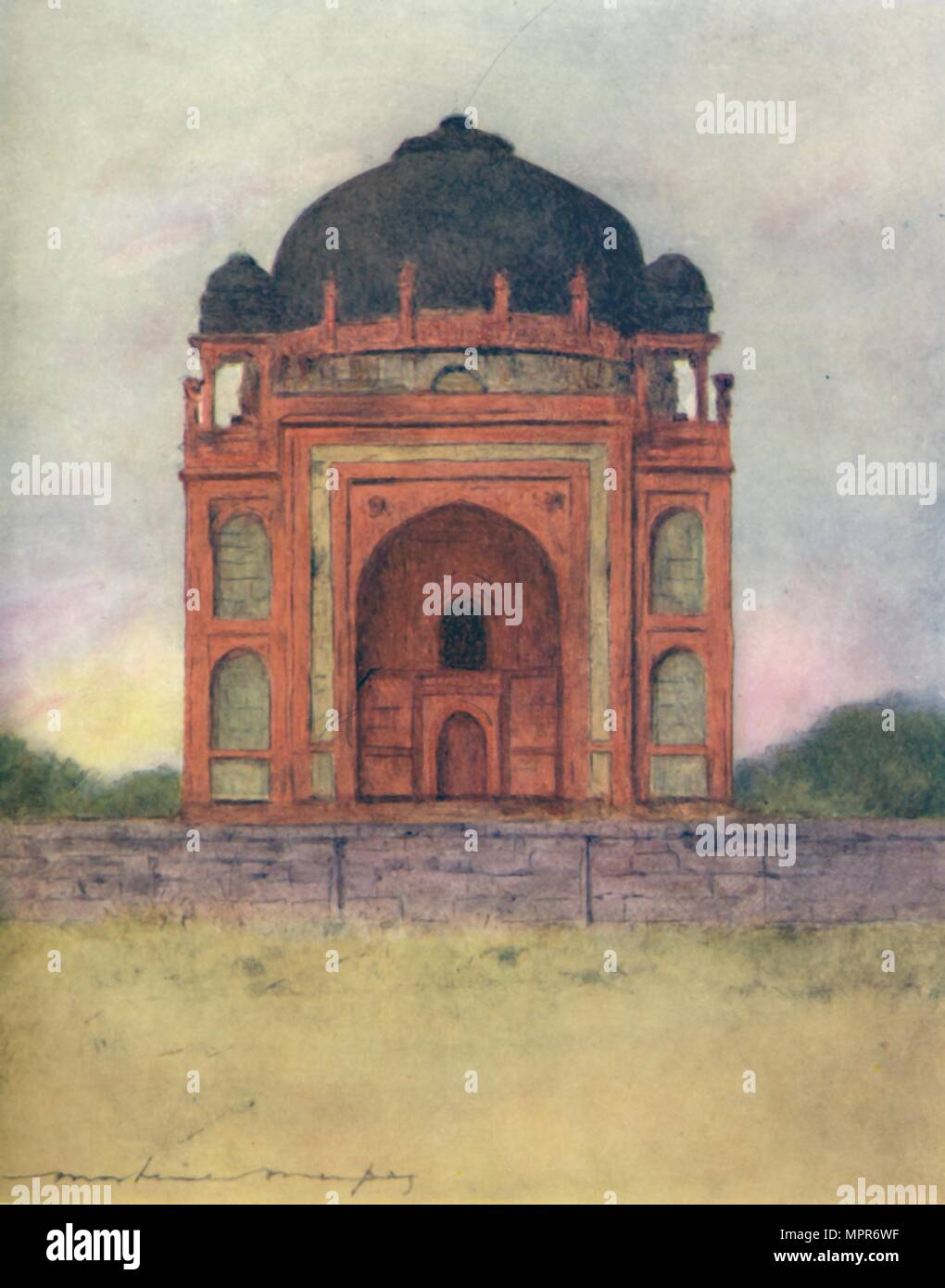 'King Babar's Tomb', 1905. Artist: Mortimer Luddington Menpes. Stock Photohttps://www.alamy.com/image-license-details/?v=1https://www.alamy.com/king-babars-tomb-1905-artist-mortimer-luddington-menpes-image186136427.html
'King Babar's Tomb', 1905. Artist: Mortimer Luddington Menpes. Stock Photohttps://www.alamy.com/image-license-details/?v=1https://www.alamy.com/king-babars-tomb-1905-artist-mortimer-luddington-menpes-image186136427.htmlRMMPR6WF–'King Babar's Tomb', 1905. Artist: Mortimer Luddington Menpes.
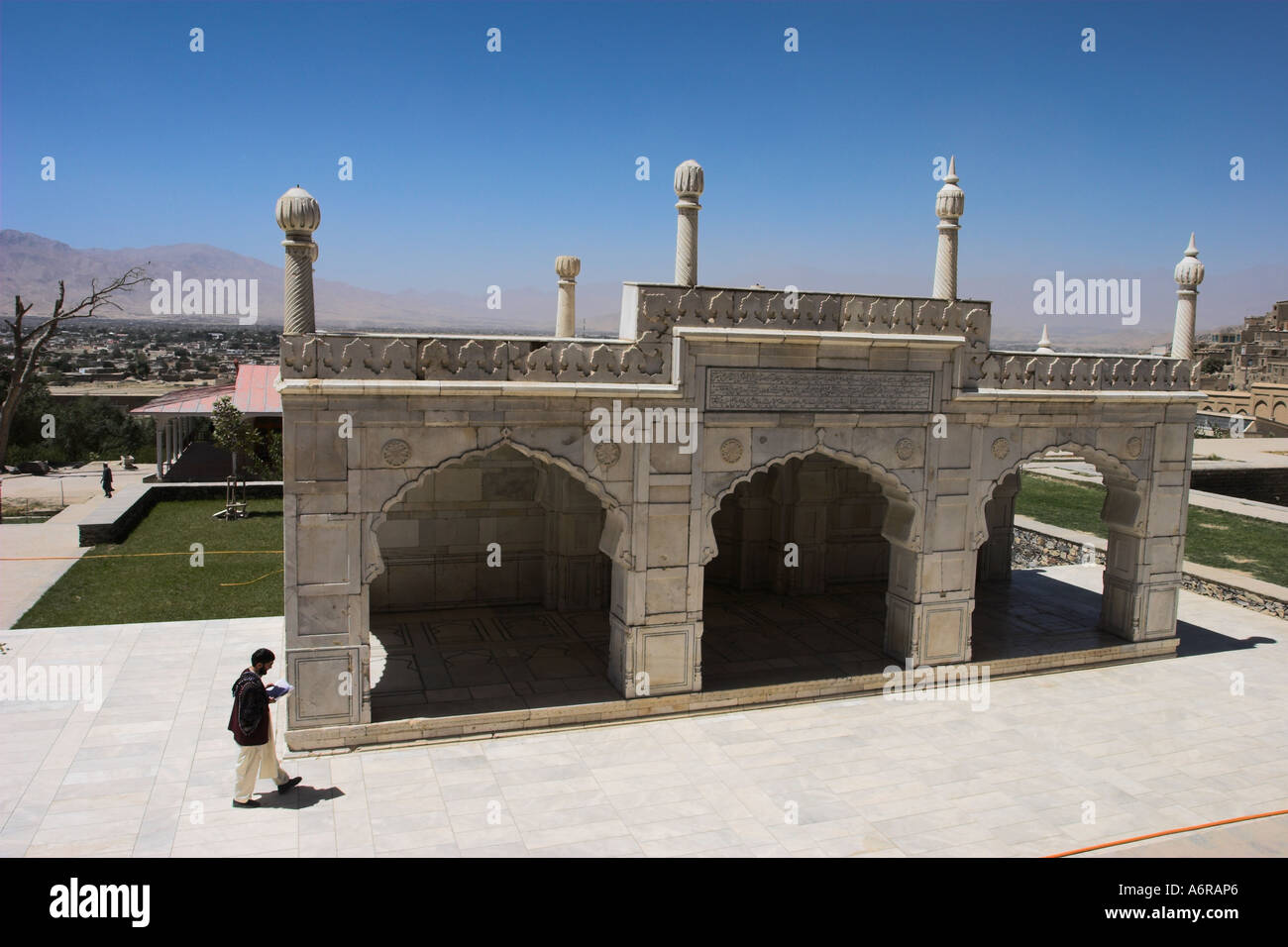 AFGHANISTAN Kabul Gardens of Babur Man reading religious book whilst walking round the white marble Mosque built by Shah Jahan Stock Photohttps://www.alamy.com/image-license-details/?v=1https://www.alamy.com/afghanistan-kabul-gardens-of-babur-man-reading-religious-book-whilst-image6648549.html
AFGHANISTAN Kabul Gardens of Babur Man reading religious book whilst walking round the white marble Mosque built by Shah Jahan Stock Photohttps://www.alamy.com/image-license-details/?v=1https://www.alamy.com/afghanistan-kabul-gardens-of-babur-man-reading-religious-book-whilst-image6648549.htmlRMA6RAP6–AFGHANISTAN Kabul Gardens of Babur Man reading religious book whilst walking round the white marble Mosque built by Shah Jahan
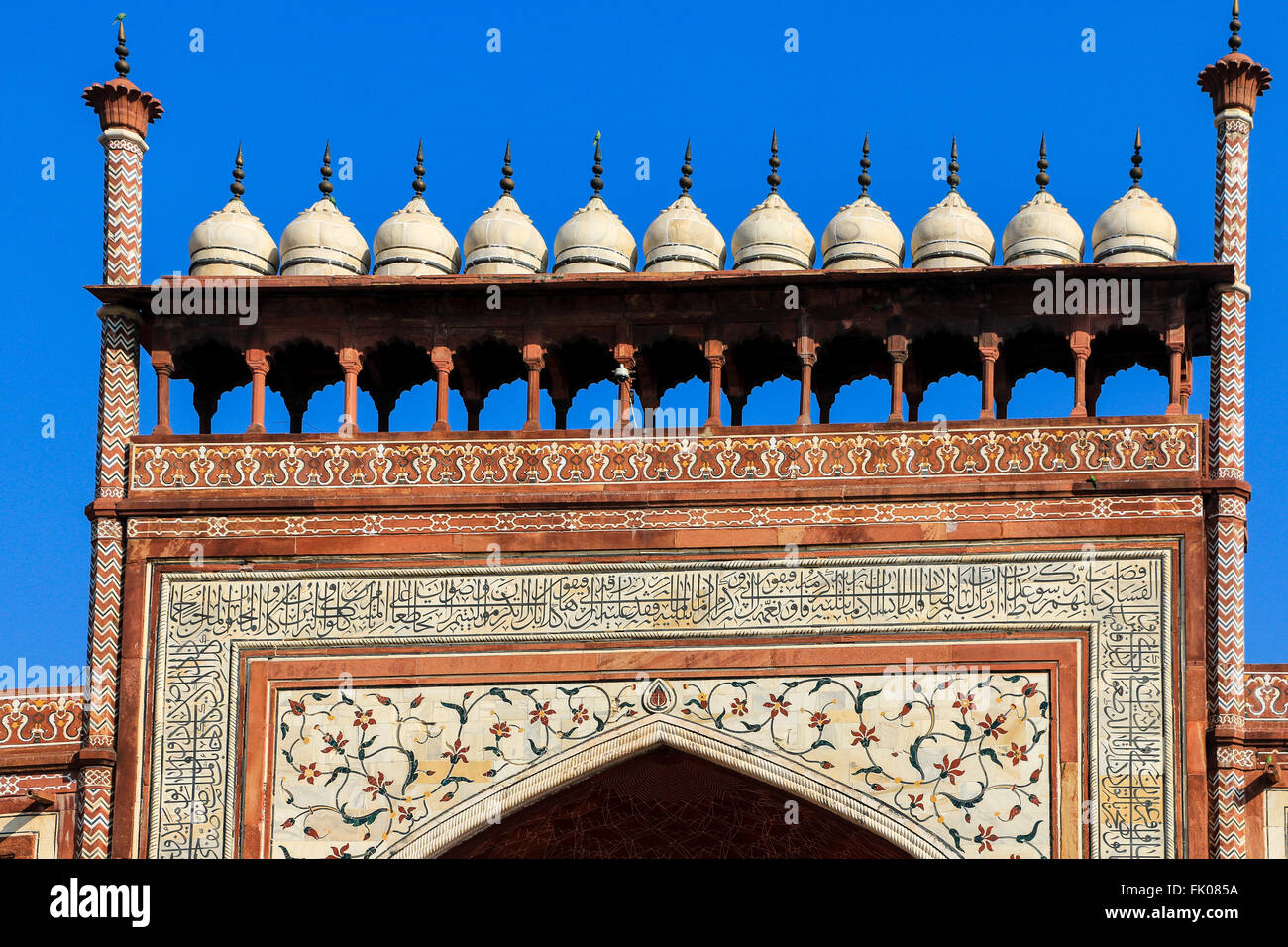 Red Fort in front of the Taj Mahal, UNESCO World Heritage Site, Agra,Uttar Pradesh, India, Asia Stock Photohttps://www.alamy.com/image-license-details/?v=1https://www.alamy.com/stock-photo-red-fort-in-front-of-the-taj-mahal-unesco-world-heritage-site-agrauttar-97736726.html
Red Fort in front of the Taj Mahal, UNESCO World Heritage Site, Agra,Uttar Pradesh, India, Asia Stock Photohttps://www.alamy.com/image-license-details/?v=1https://www.alamy.com/stock-photo-red-fort-in-front-of-the-taj-mahal-unesco-world-heritage-site-agrauttar-97736726.htmlRFFK085A–Red Fort in front of the Taj Mahal, UNESCO World Heritage Site, Agra,Uttar Pradesh, India, Asia
 Charbagh or Mughal Garden in morning mist Stock Photohttps://www.alamy.com/image-license-details/?v=1https://www.alamy.com/stock-photo-charbagh-or-mughal-garden-in-morning-mist-80189291.html
Charbagh or Mughal Garden in morning mist Stock Photohttps://www.alamy.com/image-license-details/?v=1https://www.alamy.com/stock-photo-charbagh-or-mughal-garden-in-morning-mist-80189291.htmlRFEJCX77–Charbagh or Mughal Garden in morning mist
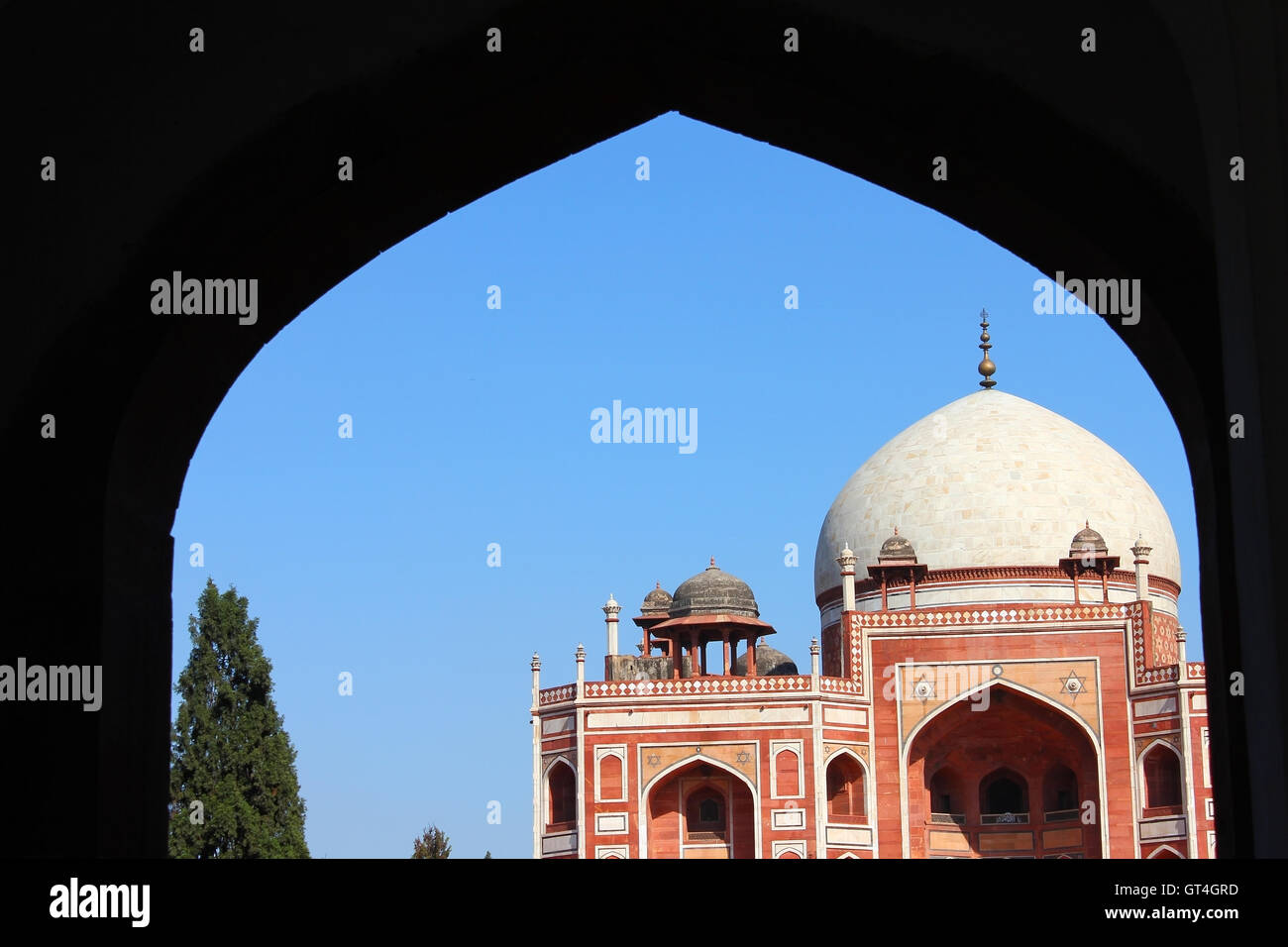 humanyun tomb Stock Photohttps://www.alamy.com/image-license-details/?v=1https://www.alamy.com/stock-photo-humanyun-tomb-118114961.html
humanyun tomb Stock Photohttps://www.alamy.com/image-license-details/?v=1https://www.alamy.com/stock-photo-humanyun-tomb-118114961.htmlRFGT4GRD–humanyun tomb
 hippodrome in Italy Stock Photohttps://www.alamy.com/image-license-details/?v=1https://www.alamy.com/stock-photo-hippodrome-in-italy-90438602.html
hippodrome in Italy Stock Photohttps://www.alamy.com/image-license-details/?v=1https://www.alamy.com/stock-photo-hippodrome-in-italy-90438602.htmlRMF73RA2–hippodrome in Italy
 Afghanistan, Kabul, Garden Of Babur, travel landmark vector illustration Stock Vectorhttps://www.alamy.com/image-license-details/?v=1https://www.alamy.com/afghanistan-kabul-garden-of-babur-travel-landmark-vector-illustration-image544877996.html
Afghanistan, Kabul, Garden Of Babur, travel landmark vector illustration Stock Vectorhttps://www.alamy.com/image-license-details/?v=1https://www.alamy.com/afghanistan-kabul-garden-of-babur-travel-landmark-vector-illustration-image544877996.htmlRF2PJD9CC–Afghanistan, Kabul, Garden Of Babur, travel landmark vector illustration
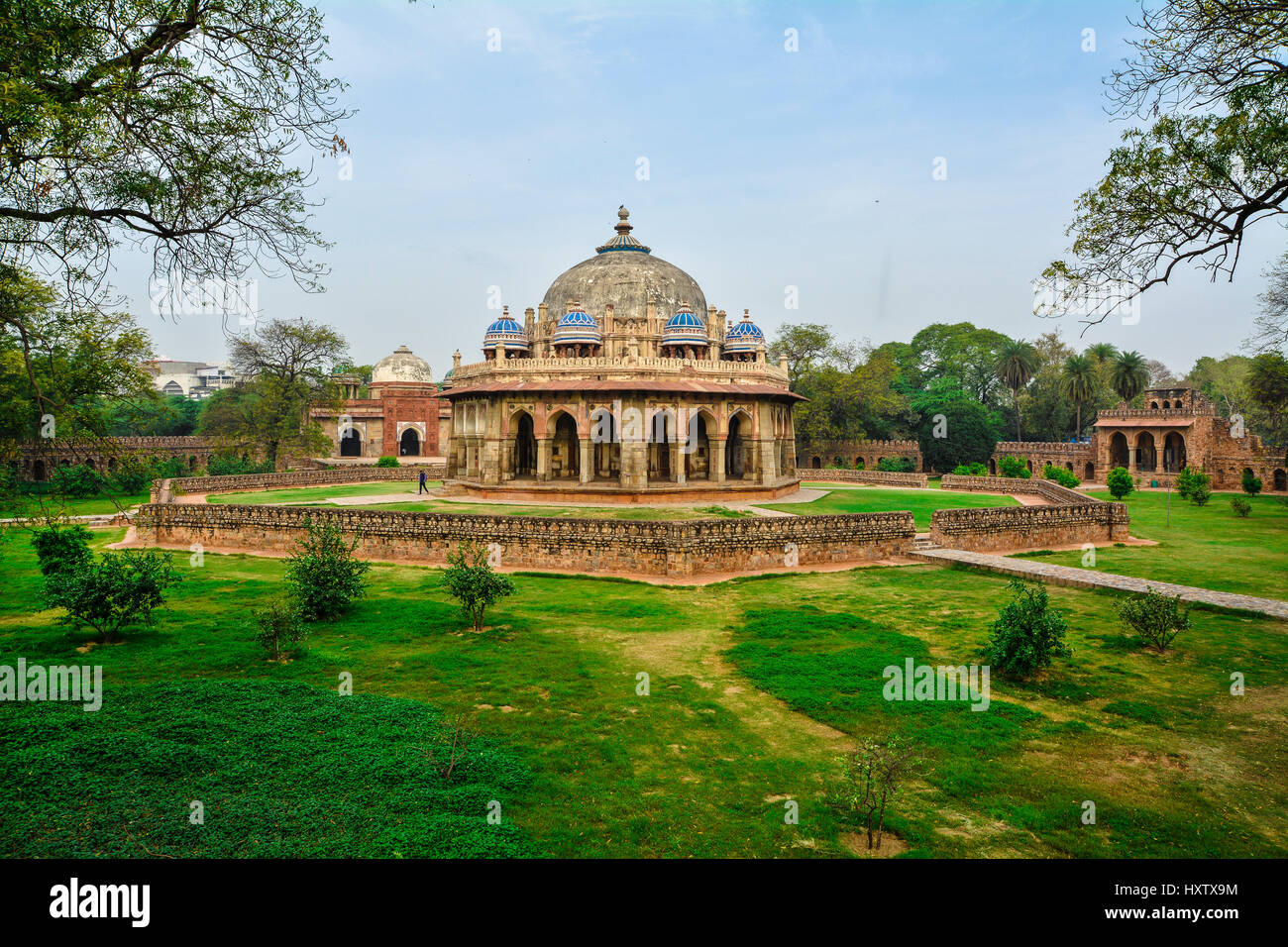 Isa Khan Niyazi's tomb Stock Photohttps://www.alamy.com/image-license-details/?v=1https://www.alamy.com/stock-photo-isa-khan-niyazis-tomb-137001136.html
Isa Khan Niyazi's tomb Stock Photohttps://www.alamy.com/image-license-details/?v=1https://www.alamy.com/stock-photo-isa-khan-niyazis-tomb-137001136.htmlRFHXTX9M–Isa Khan Niyazi's tomb
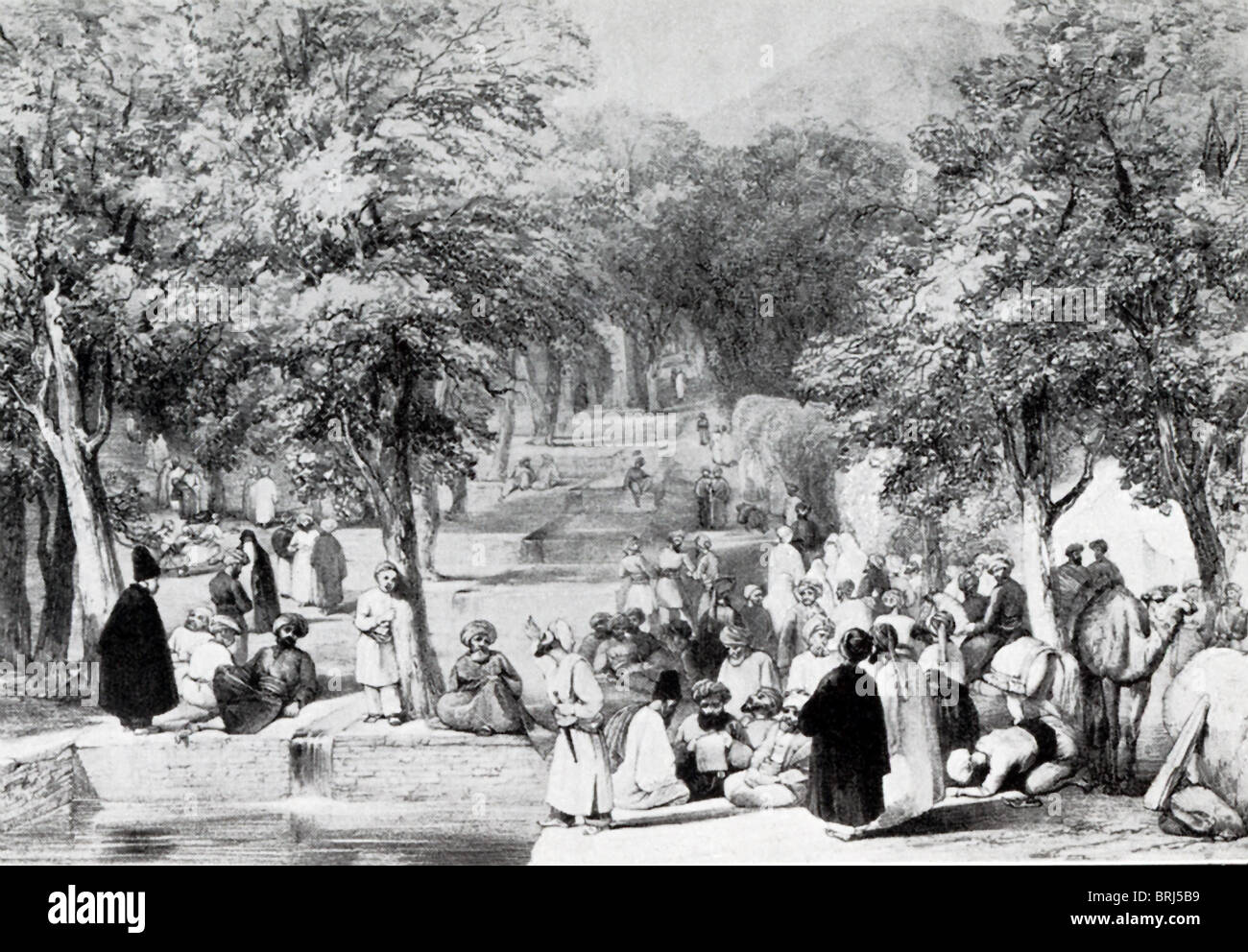 Mughal ruler Babur had requested that he be buried in Bagh-e Babur, (pictured here), one of his favorite gardens in Kabul. Stock Photohttps://www.alamy.com/image-license-details/?v=1https://www.alamy.com/stock-photo-mughal-ruler-babur-had-requested-that-he-be-buried-in-bagh-e-babur-31746829.html
Mughal ruler Babur had requested that he be buried in Bagh-e Babur, (pictured here), one of his favorite gardens in Kabul. Stock Photohttps://www.alamy.com/image-license-details/?v=1https://www.alamy.com/stock-photo-mughal-ruler-babur-had-requested-that-he-be-buried-in-bagh-e-babur-31746829.htmlRFBRJ5B9–Mughal ruler Babur had requested that he be buried in Bagh-e Babur, (pictured here), one of his favorite gardens in Kabul.
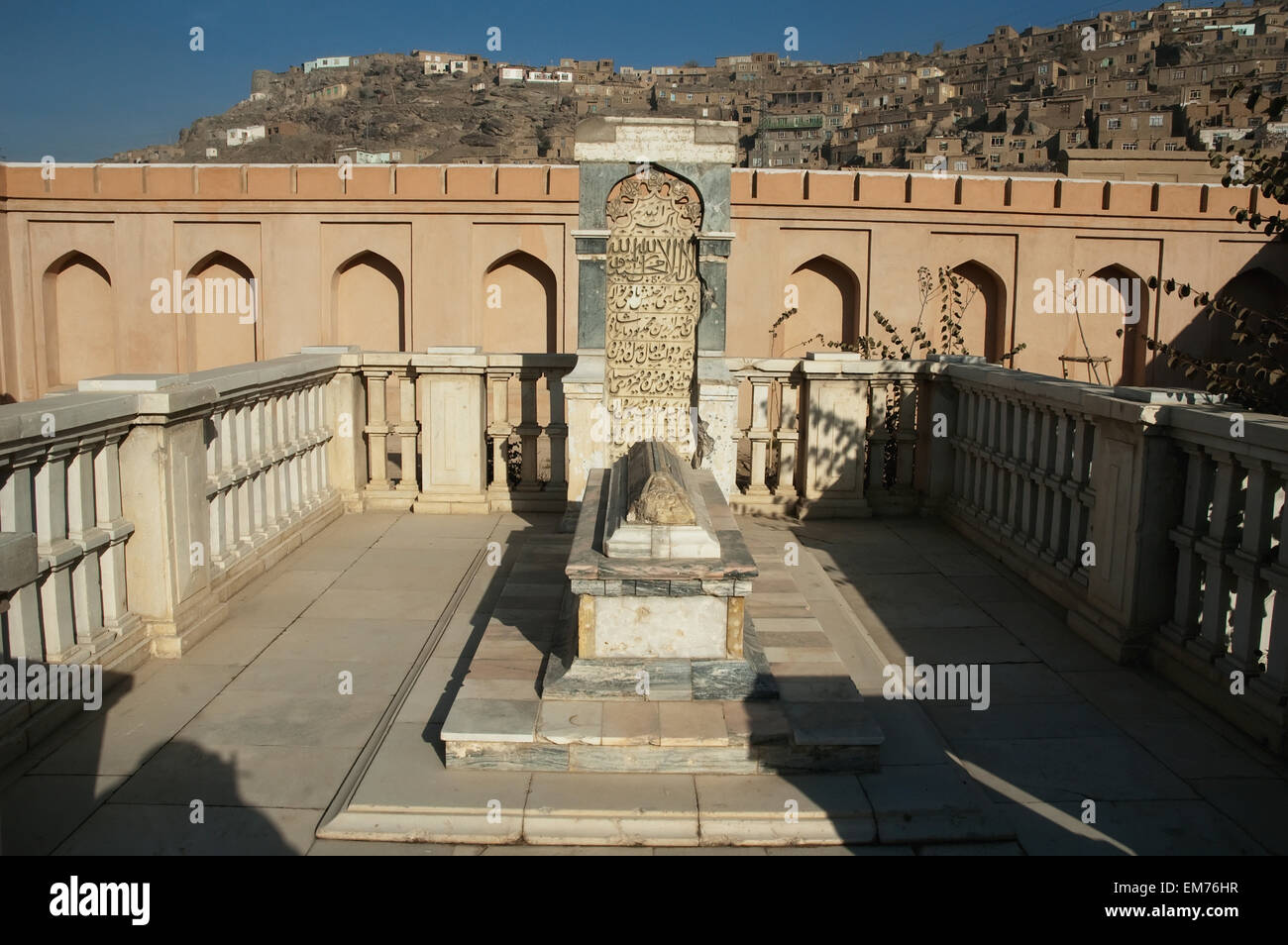 Afghanistan,Asia,Central Asia,Afghan Stock Photohttps://www.alamy.com/image-license-details/?v=1https://www.alamy.com/stock-photo-afghanistanasiacentral-asiaafghan-81293459.html
Afghanistan,Asia,Central Asia,Afghan Stock Photohttps://www.alamy.com/image-license-details/?v=1https://www.alamy.com/stock-photo-afghanistanasiacentral-asiaafghan-81293459.htmlRMEM76HR–Afghanistan,Asia,Central Asia,Afghan
 Mughal tomb at Humayun s tomb Delhi Stock Photohttps://www.alamy.com/image-license-details/?v=1https://www.alamy.com/mughal-tomb-at-humayun-s-tomb-delhi-image3538381.html
Mughal tomb at Humayun s tomb Delhi Stock Photohttps://www.alamy.com/image-license-details/?v=1https://www.alamy.com/mughal-tomb-at-humayun-s-tomb-delhi-image3538381.htmlRFA3PNCE–Mughal tomb at Humayun s tomb Delhi
 DELHI, INDIA - SEPTEMBER 19, 2017: Beautiful view of Humayun Tomb, Delhi, India. UNESCO World Heritage Site, it is the tomb of the Mughal Emperor Humayun, fish eye effect Stock Photohttps://www.alamy.com/image-license-details/?v=1https://www.alamy.com/stock-image-delhi-india-september-19-2017-beautiful-view-of-humayun-tomb-delhi-165025792.html
DELHI, INDIA - SEPTEMBER 19, 2017: Beautiful view of Humayun Tomb, Delhi, India. UNESCO World Heritage Site, it is the tomb of the Mughal Emperor Humayun, fish eye effect Stock Photohttps://www.alamy.com/image-license-details/?v=1https://www.alamy.com/stock-image-delhi-india-september-19-2017-beautiful-view-of-humayun-tomb-delhi-165025792.htmlRFKGDG28–DELHI, INDIA - SEPTEMBER 19, 2017: Beautiful view of Humayun Tomb, Delhi, India. UNESCO World Heritage Site, it is the tomb of the Mughal Emperor Humayun, fish eye effect
 . English: Painting, detached from album. Babur and his army emerge from the Khwaja Didar Fort, from a Baburnama manuscript. Babur is shown riding a fully armoured horse, emerging with his cavalry from the Khwaja Didar fort, where he wintered in 1497. A drummer rides a camel behind him and another soldier leans forward to hold a parasol over Babur's head. The broken arrows in the left foreground indicate that the battle with Shaybani Khan the Uzbek has already begun. The fort is ringed with red brick walls and crenellated battlements. Inside a tomb with a vaulted roof, various buildings, pavil Stock Photohttps://www.alamy.com/image-license-details/?v=1https://www.alamy.com/english-painting-detached-from-album-babur-and-his-army-emerge-from-the-khwaja-didar-fort-from-a-baburnama-manuscript-babur-is-shown-riding-a-fully-armoured-horse-emerging-with-his-cavalry-from-the-khwaja-didar-fort-where-he-wintered-in-1497-a-drummer-rides-a-camel-behind-him-and-another-soldier-leans-forward-to-hold-a-parasol-over-baburs-head-the-broken-arrows-in-the-left-foreground-indicate-that-the-battle-with-shaybani-khan-the-uzbek-has-already-begun-the-fort-is-ringed-with-red-brick-walls-and-crenellated-battlements-inside-a-tomb-with-a-vaulted-roof-various-buildings-pavil-image188916676.html
. English: Painting, detached from album. Babur and his army emerge from the Khwaja Didar Fort, from a Baburnama manuscript. Babur is shown riding a fully armoured horse, emerging with his cavalry from the Khwaja Didar fort, where he wintered in 1497. A drummer rides a camel behind him and another soldier leans forward to hold a parasol over Babur's head. The broken arrows in the left foreground indicate that the battle with Shaybani Khan the Uzbek has already begun. The fort is ringed with red brick walls and crenellated battlements. Inside a tomb with a vaulted roof, various buildings, pavil Stock Photohttps://www.alamy.com/image-license-details/?v=1https://www.alamy.com/english-painting-detached-from-album-babur-and-his-army-emerge-from-the-khwaja-didar-fort-from-a-baburnama-manuscript-babur-is-shown-riding-a-fully-armoured-horse-emerging-with-his-cavalry-from-the-khwaja-didar-fort-where-he-wintered-in-1497-a-drummer-rides-a-camel-behind-him-and-another-soldier-leans-forward-to-hold-a-parasol-over-baburs-head-the-broken-arrows-in-the-left-foreground-indicate-that-the-battle-with-shaybani-khan-the-uzbek-has-already-begun-the-fort-is-ringed-with-red-brick-walls-and-crenellated-battlements-inside-a-tomb-with-a-vaulted-roof-various-buildings-pavil-image188916676.htmlRMMY9W44–. English: Painting, detached from album. Babur and his army emerge from the Khwaja Didar Fort, from a Baburnama manuscript. Babur is shown riding a fully armoured horse, emerging with his cavalry from the Khwaja Didar fort, where he wintered in 1497. A drummer rides a camel behind him and another soldier leans forward to hold a parasol over Babur's head. The broken arrows in the left foreground indicate that the battle with Shaybani Khan the Uzbek has already begun. The fort is ringed with red brick walls and crenellated battlements. Inside a tomb with a vaulted roof, various buildings, pavil
 Red Fort in front of the Taj Mahal, UNESCO World Heritage Site, Agra,Uttar Pradesh, India, Asia Stock Photohttps://www.alamy.com/image-license-details/?v=1https://www.alamy.com/stock-photo-red-fort-in-front-of-the-taj-mahal-unesco-world-heritage-site-agrauttar-97736755.html
Red Fort in front of the Taj Mahal, UNESCO World Heritage Site, Agra,Uttar Pradesh, India, Asia Stock Photohttps://www.alamy.com/image-license-details/?v=1https://www.alamy.com/stock-photo-red-fort-in-front-of-the-taj-mahal-unesco-world-heritage-site-agrauttar-97736755.htmlRFFK086B–Red Fort in front of the Taj Mahal, UNESCO World Heritage Site, Agra,Uttar Pradesh, India, Asia
 Arched passage in Charbagh, or Mughal gardens Stock Photohttps://www.alamy.com/image-license-details/?v=1https://www.alamy.com/stock-photo-arched-passage-in-charbagh-or-mughal-gardens-80189319.html
Arched passage in Charbagh, or Mughal gardens Stock Photohttps://www.alamy.com/image-license-details/?v=1https://www.alamy.com/stock-photo-arched-passage-in-charbagh-or-mughal-gardens-80189319.htmlRFEJCX87–Arched passage in Charbagh, or Mughal gardens
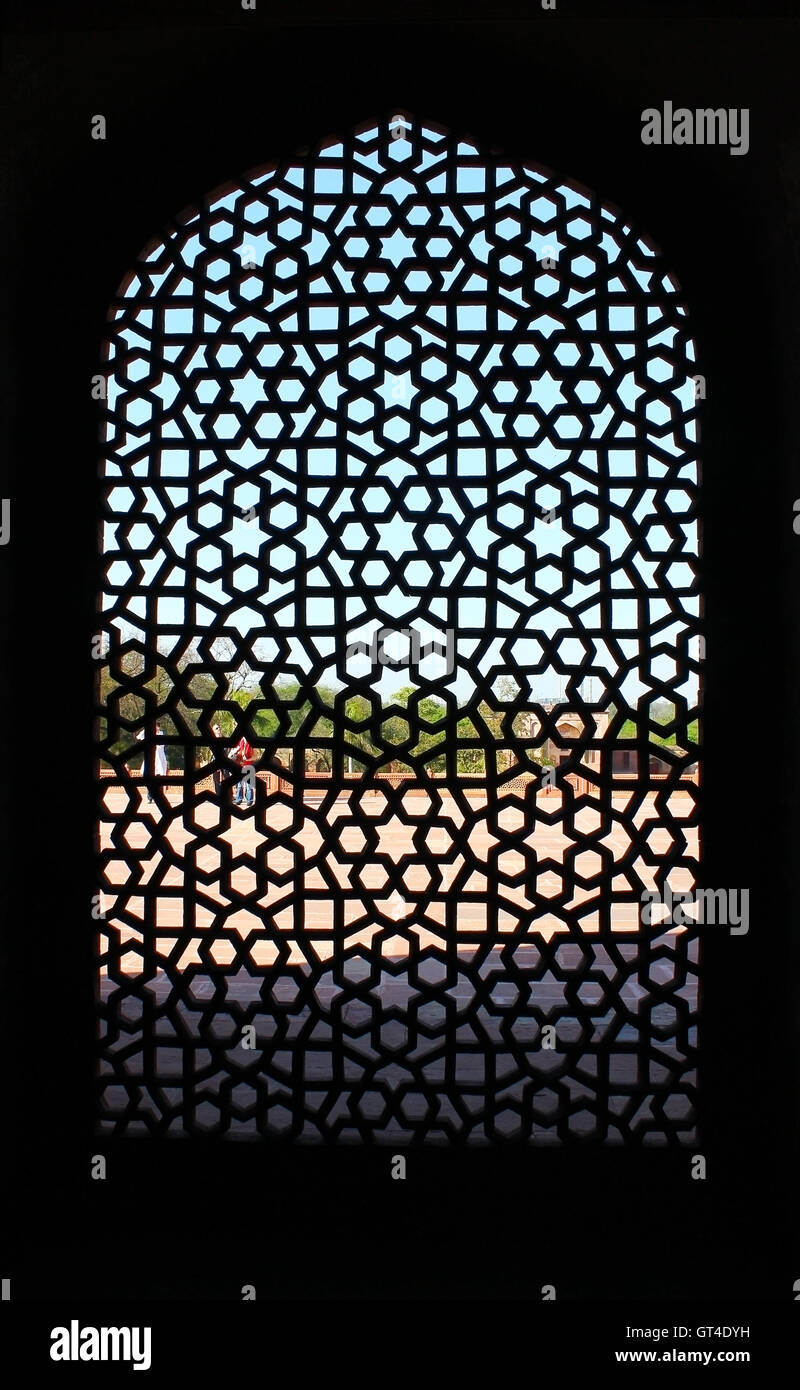 big jali Stock Photohttps://www.alamy.com/image-license-details/?v=1https://www.alamy.com/stock-photo-big-jali-118112725.html
big jali Stock Photohttps://www.alamy.com/image-license-details/?v=1https://www.alamy.com/stock-photo-big-jali-118112725.htmlRFGT4DYH–big jali
 hippodrome in Italy Stock Photohttps://www.alamy.com/image-license-details/?v=1https://www.alamy.com/stock-photo-hippodrome-in-italy-90438612.html
hippodrome in Italy Stock Photohttps://www.alamy.com/image-license-details/?v=1https://www.alamy.com/stock-photo-hippodrome-in-italy-90438612.htmlRMF73RAC–hippodrome in Italy
 The mosque of Isa Khan Niyazi, part of the Humayun's Tomb Complex, Delhi, India Stock Photohttps://www.alamy.com/image-license-details/?v=1https://www.alamy.com/stock-photo-the-mosque-of-isa-khan-niyazi-part-of-the-humayuns-tomb-complex-delhi-138101186.html
The mosque of Isa Khan Niyazi, part of the Humayun's Tomb Complex, Delhi, India Stock Photohttps://www.alamy.com/image-license-details/?v=1https://www.alamy.com/stock-photo-the-mosque-of-isa-khan-niyazi-part-of-the-humayuns-tomb-complex-delhi-138101186.htmlRFJ0K1D6–The mosque of Isa Khan Niyazi, part of the Humayun's Tomb Complex, Delhi, India
 DELHI, INDIA - SEPTEMBER 19, 2017: Beautiful view of Humayun Tomb, Delhi, India. UNESCO World Heritage Site, it is the tomb of the Mughal Emperor Humayun, fish eye effect Stock Photohttps://www.alamy.com/image-license-details/?v=1https://www.alamy.com/stock-image-delhi-india-september-19-2017-beautiful-view-of-humayun-tomb-delhi-165025794.html
DELHI, INDIA - SEPTEMBER 19, 2017: Beautiful view of Humayun Tomb, Delhi, India. UNESCO World Heritage Site, it is the tomb of the Mughal Emperor Humayun, fish eye effect Stock Photohttps://www.alamy.com/image-license-details/?v=1https://www.alamy.com/stock-image-delhi-india-september-19-2017-beautiful-view-of-humayun-tomb-delhi-165025794.htmlRFKGDG2A–DELHI, INDIA - SEPTEMBER 19, 2017: Beautiful view of Humayun Tomb, Delhi, India. UNESCO World Heritage Site, it is the tomb of the Mughal Emperor Humayun, fish eye effect
 . English: Painting, detached from album. Babur and his army emerge from the Khwaja Didar Fort, from a Baburnama manuscript. Babur is shown riding a fully armoured horse, emerging with his cavalry from the Khwaja Didar fort, where he wintered in 1497. A drummer rides a camel behind him and another soldier leans forward to hold a parasol over Babur's head. The broken arrows in the left foreground indicate that the battle with Shaybani Khan the Uzbek has already begun. The fort is ringed with red brick walls and crenellated battlements. Inside a tomb with a vaulted roof, various buildings, pavil Stock Photohttps://www.alamy.com/image-license-details/?v=1https://www.alamy.com/english-painting-detached-from-album-babur-and-his-army-emerge-from-the-khwaja-didar-fort-from-a-baburnama-manuscript-babur-is-shown-riding-a-fully-armoured-horse-emerging-with-his-cavalry-from-the-khwaja-didar-fort-where-he-wintered-in-1497-a-drummer-rides-a-camel-behind-him-and-another-soldier-leans-forward-to-hold-a-parasol-over-baburs-head-the-broken-arrows-in-the-left-foreground-indicate-that-the-battle-with-shaybani-khan-the-uzbek-has-already-begun-the-fort-is-ringed-with-red-brick-walls-and-crenellated-battlements-inside-a-tomb-with-a-vaulted-roof-various-buildings-pavil-image188192558.html
. English: Painting, detached from album. Babur and his army emerge from the Khwaja Didar Fort, from a Baburnama manuscript. Babur is shown riding a fully armoured horse, emerging with his cavalry from the Khwaja Didar fort, where he wintered in 1497. A drummer rides a camel behind him and another soldier leans forward to hold a parasol over Babur's head. The broken arrows in the left foreground indicate that the battle with Shaybani Khan the Uzbek has already begun. The fort is ringed with red brick walls and crenellated battlements. Inside a tomb with a vaulted roof, various buildings, pavil Stock Photohttps://www.alamy.com/image-license-details/?v=1https://www.alamy.com/english-painting-detached-from-album-babur-and-his-army-emerge-from-the-khwaja-didar-fort-from-a-baburnama-manuscript-babur-is-shown-riding-a-fully-armoured-horse-emerging-with-his-cavalry-from-the-khwaja-didar-fort-where-he-wintered-in-1497-a-drummer-rides-a-camel-behind-him-and-another-soldier-leans-forward-to-hold-a-parasol-over-baburs-head-the-broken-arrows-in-the-left-foreground-indicate-that-the-battle-with-shaybani-khan-the-uzbek-has-already-begun-the-fort-is-ringed-with-red-brick-walls-and-crenellated-battlements-inside-a-tomb-with-a-vaulted-roof-various-buildings-pavil-image188192558.htmlRMMX4WEP–. English: Painting, detached from album. Babur and his army emerge from the Khwaja Didar Fort, from a Baburnama manuscript. Babur is shown riding a fully armoured horse, emerging with his cavalry from the Khwaja Didar fort, where he wintered in 1497. A drummer rides a camel behind him and another soldier leans forward to hold a parasol over Babur's head. The broken arrows in the left foreground indicate that the battle with Shaybani Khan the Uzbek has already begun. The fort is ringed with red brick walls and crenellated battlements. Inside a tomb with a vaulted roof, various buildings, pavil
 Minaret Red Fort, ,Taj Mahal, UNESCO World Heritage Site, Agra,Uttar Pradesh, India, Asia Stock Photohttps://www.alamy.com/image-license-details/?v=1https://www.alamy.com/stock-photo-minaret-red-fort-taj-mahal-unesco-world-heritage-site-agrauttar-pradesh-97735881.html
Minaret Red Fort, ,Taj Mahal, UNESCO World Heritage Site, Agra,Uttar Pradesh, India, Asia Stock Photohttps://www.alamy.com/image-license-details/?v=1https://www.alamy.com/stock-photo-minaret-red-fort-taj-mahal-unesco-world-heritage-site-agrauttar-pradesh-97735881.htmlRFFK0735–Minaret Red Fort, ,Taj Mahal, UNESCO World Heritage Site, Agra,Uttar Pradesh, India, Asia
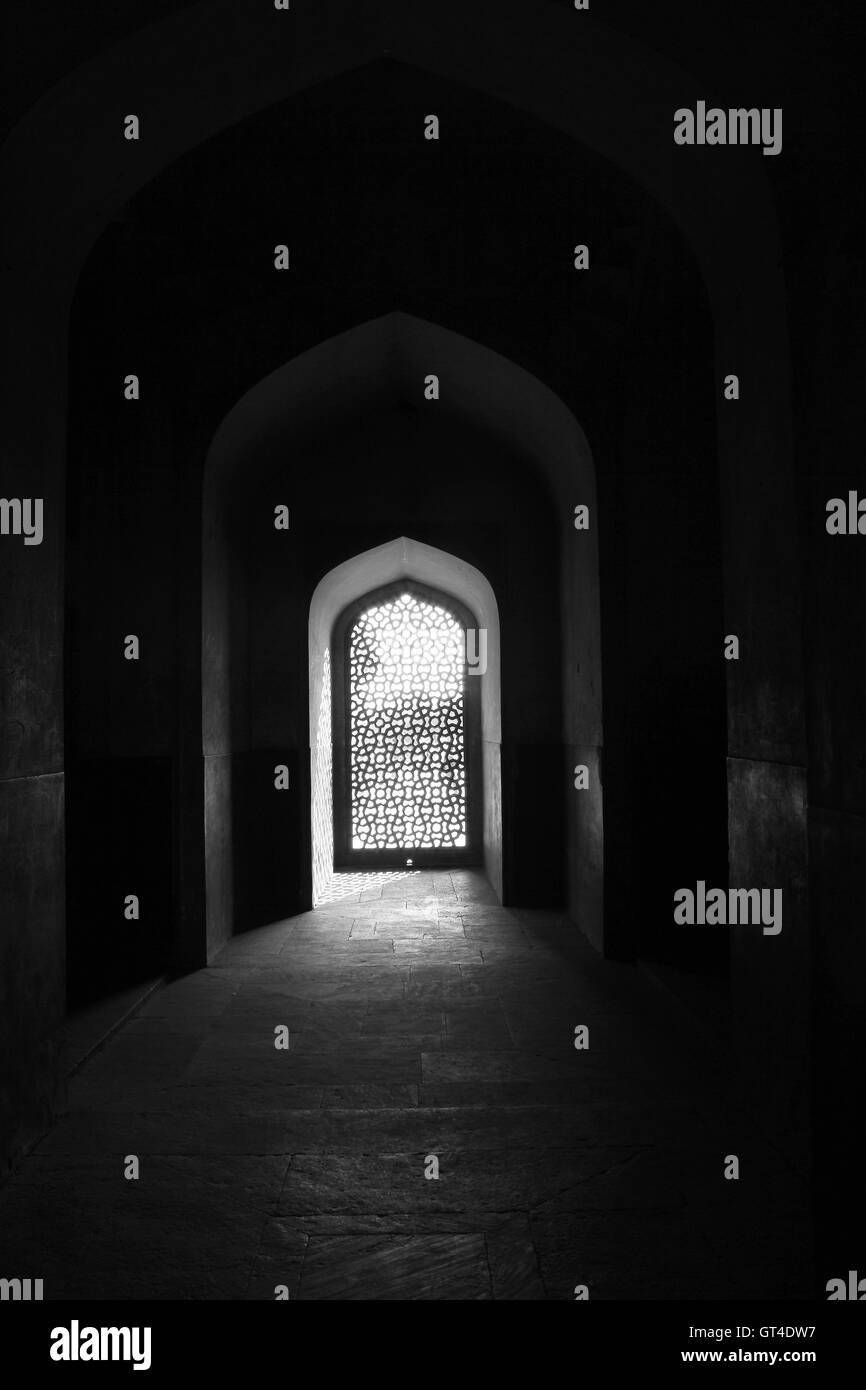 inside the fort Stock Photohttps://www.alamy.com/image-license-details/?v=1https://www.alamy.com/stock-photo-inside-the-fort-118112659.html
inside the fort Stock Photohttps://www.alamy.com/image-license-details/?v=1https://www.alamy.com/stock-photo-inside-the-fort-118112659.htmlRFGT4DW7–inside the fort
 hippodrome in Italy Stock Photohttps://www.alamy.com/image-license-details/?v=1https://www.alamy.com/stock-photo-hippodrome-in-italy-90438606.html
hippodrome in Italy Stock Photohttps://www.alamy.com/image-license-details/?v=1https://www.alamy.com/stock-photo-hippodrome-in-italy-90438606.htmlRMF73RA6–hippodrome in Italy
 Isa Khan's Tomb Stock Photohttps://www.alamy.com/image-license-details/?v=1https://www.alamy.com/stock-photo-isa-khans-tomb-136810538.html
Isa Khan's Tomb Stock Photohttps://www.alamy.com/image-license-details/?v=1https://www.alamy.com/stock-photo-isa-khans-tomb-136810538.htmlRFHXG76J–Isa Khan's Tomb
 DELHI, INDIA - SEPTEMBER 19, 2017: Beautiful view of Humayun s Tomb, Delhi, India. UNESCO World Heritage Site, it is the tomb of the Mughal Emperor Humayun, fish eye effect Stock Photohttps://www.alamy.com/image-license-details/?v=1https://www.alamy.com/stock-image-delhi-india-september-19-2017-beautiful-view-of-humayun-s-tomb-delhi-163468432.html
DELHI, INDIA - SEPTEMBER 19, 2017: Beautiful view of Humayun s Tomb, Delhi, India. UNESCO World Heritage Site, it is the tomb of the Mughal Emperor Humayun, fish eye effect Stock Photohttps://www.alamy.com/image-license-details/?v=1https://www.alamy.com/stock-image-delhi-india-september-19-2017-beautiful-view-of-humayun-s-tomb-delhi-163468432.htmlRFKDXHJ8–DELHI, INDIA - SEPTEMBER 19, 2017: Beautiful view of Humayun s Tomb, Delhi, India. UNESCO World Heritage Site, it is the tomb of the Mughal Emperor Humayun, fish eye effect
 Minaret Red Fort, ,Taj Mahal, UNESCO World Heritage Site, Agra,Uttar Pradesh, India, Asia Stock Photohttps://www.alamy.com/image-license-details/?v=1https://www.alamy.com/stock-photo-minaret-red-fort-taj-mahal-unesco-world-heritage-site-agrauttar-pradesh-97737911.html
Minaret Red Fort, ,Taj Mahal, UNESCO World Heritage Site, Agra,Uttar Pradesh, India, Asia Stock Photohttps://www.alamy.com/image-license-details/?v=1https://www.alamy.com/stock-photo-minaret-red-fort-taj-mahal-unesco-world-heritage-site-agrauttar-pradesh-97737911.htmlRFFK09KK–Minaret Red Fort, ,Taj Mahal, UNESCO World Heritage Site, Agra,Uttar Pradesh, India, Asia
